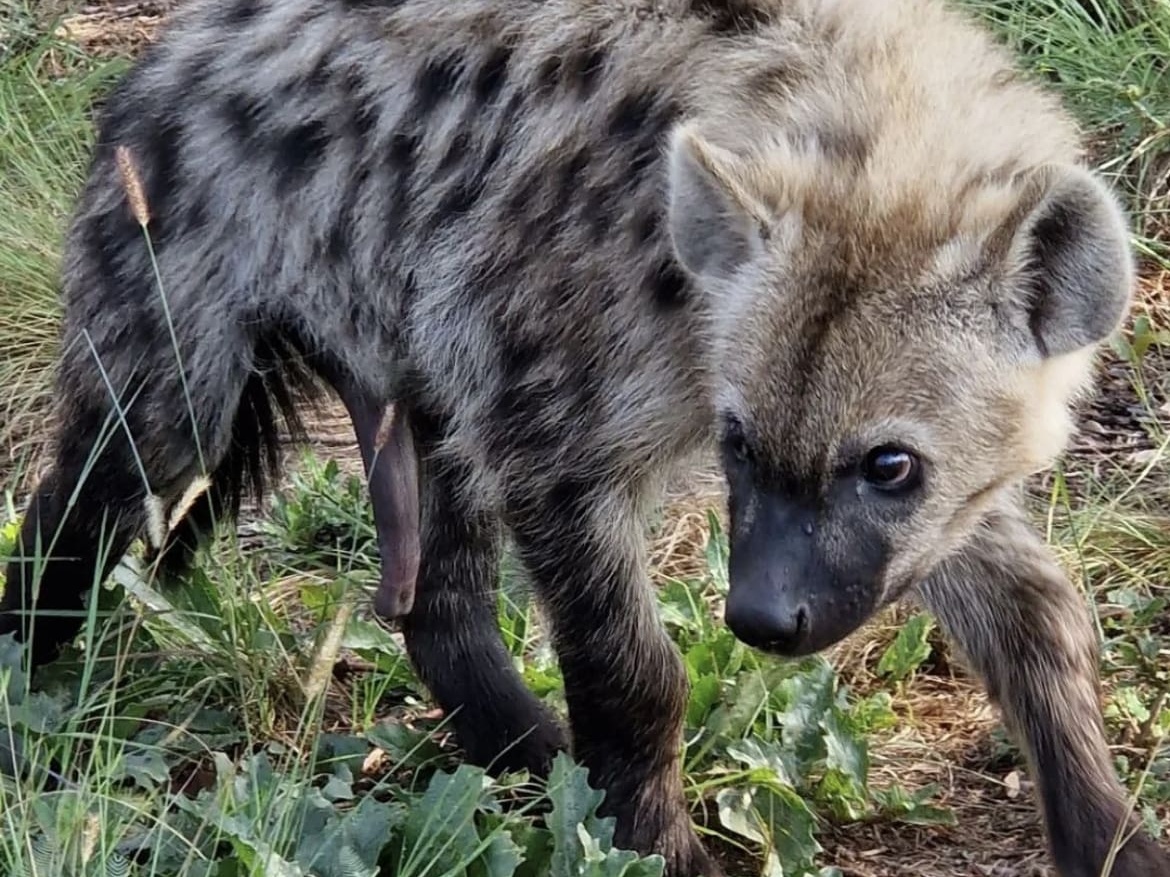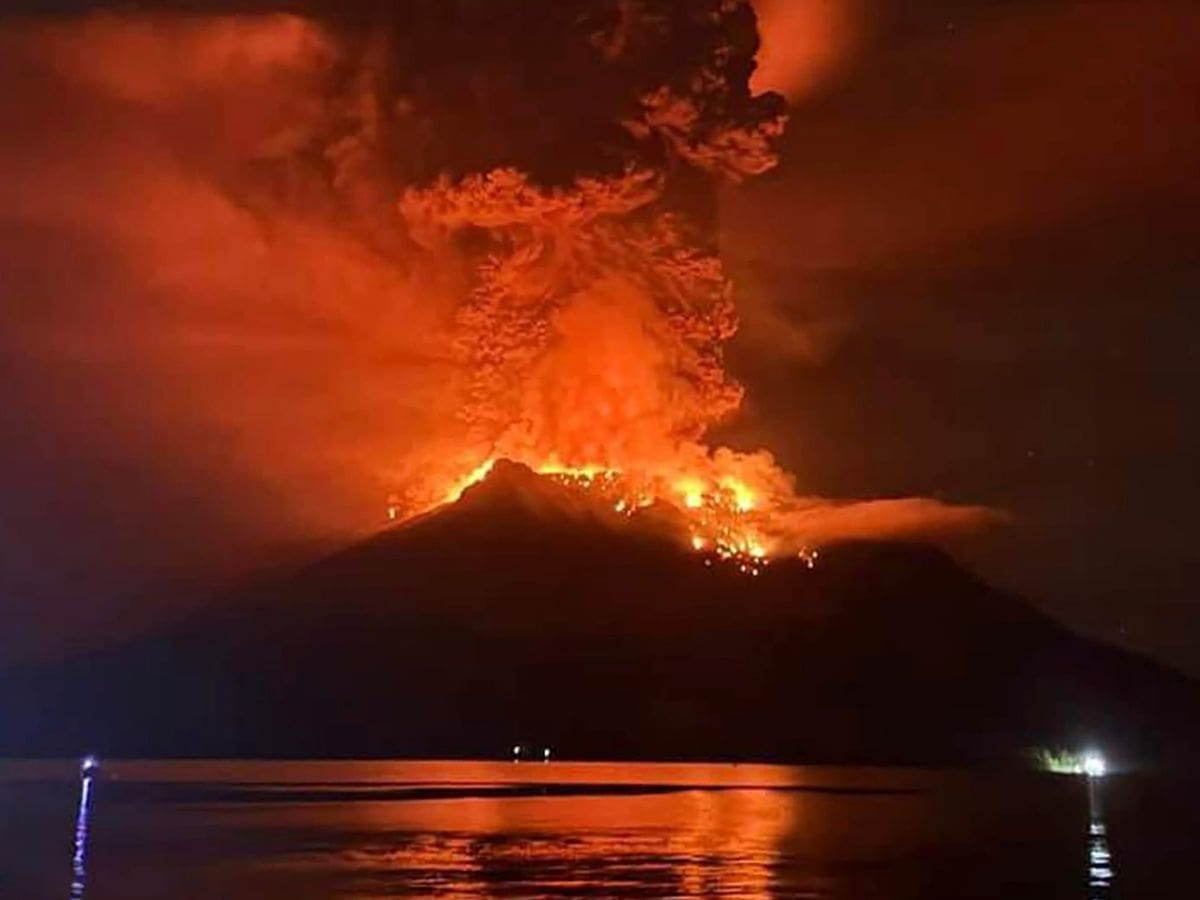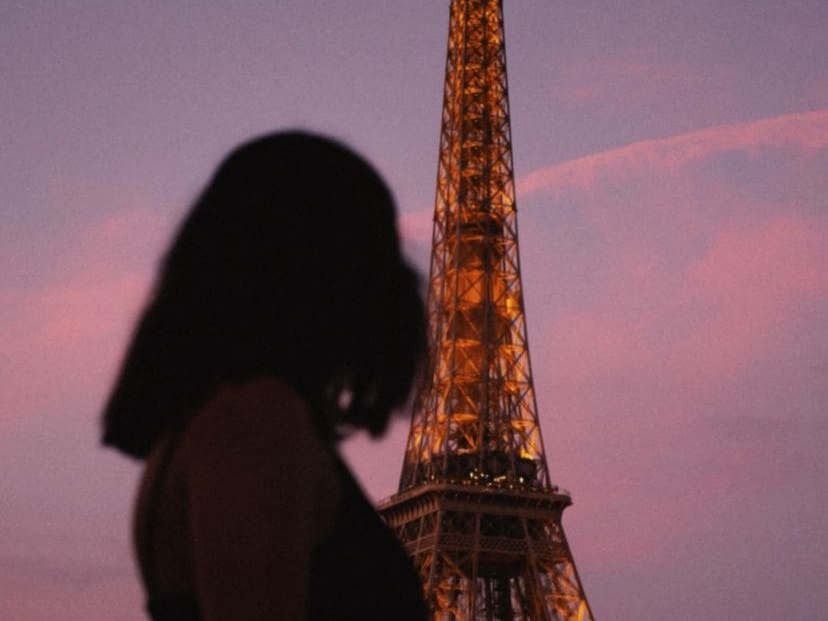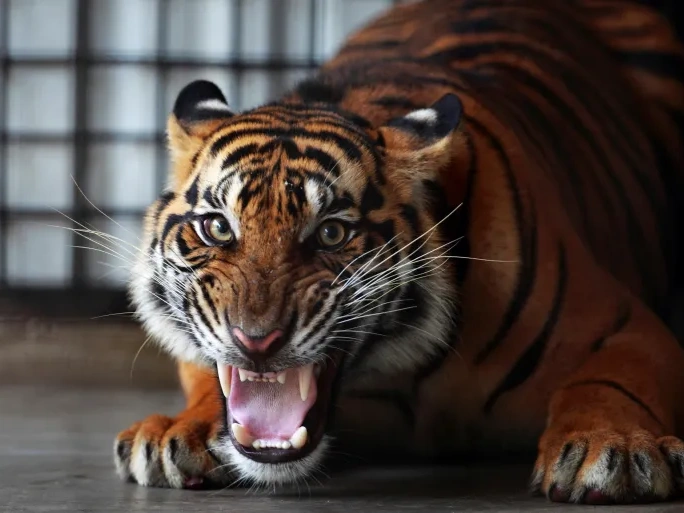Nature never abates or stands still. It follows its own rhythms, producing wonders that eternally amaze. One such natural phenomenon that dazzles a fortunate few is the lunar rainbow at one of Southern Africa’s most iconic sites, Victoria Falls.
This massive cascade of water roars down a series of eight sheer cliffs and offers an example of nature’s splendour and might. Known locally as Mosi-oa-Tunya or “The Smoke That Thunders”, this is the world’s greatest sheet of falling water. Thanks to this, and its legendary clouds of spray, mist and rainbows, Victoria Falls was awarded UNESCO World Heritage Site status in 1989.
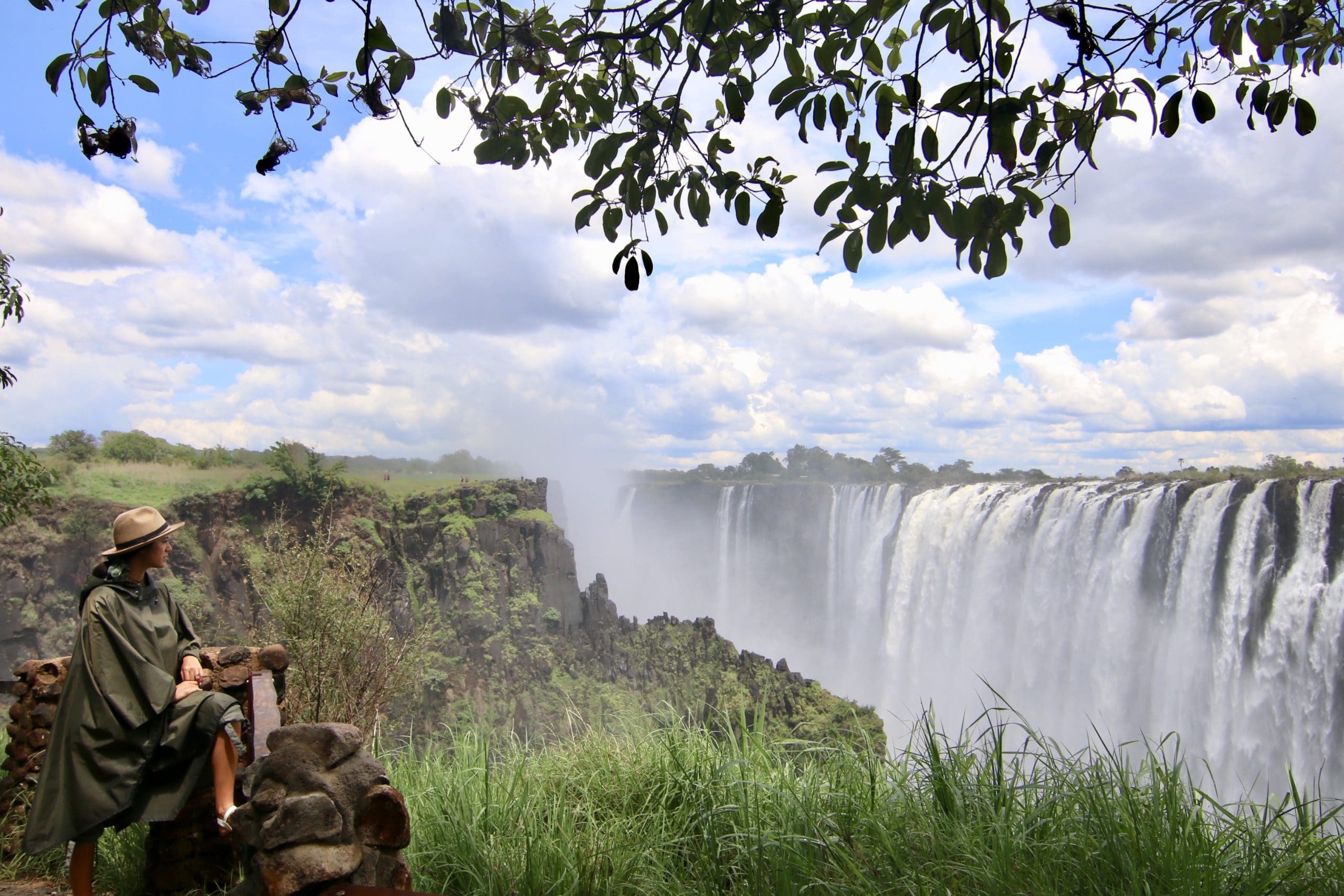 A glimpse of Victoria Falls in January © Wanderglider / Tongabezi
A glimpse of Victoria Falls in January © Wanderglider / Tongabezi
And yet, although Victoria Falls is one of the most famous landmarks in the world, she has kept some of her secrets for the more dedicated travellers. When the moon is full and the Zambezi levels are high, a lunar rainbow or ‘moonbow’ appears like a phantom in the mists of Victoria Falls. And to experience this wonder, tourists need to be not only in Livingstone at the right time of the month and the year, they also need a local guide who is willing to share this best-kept secret with them.
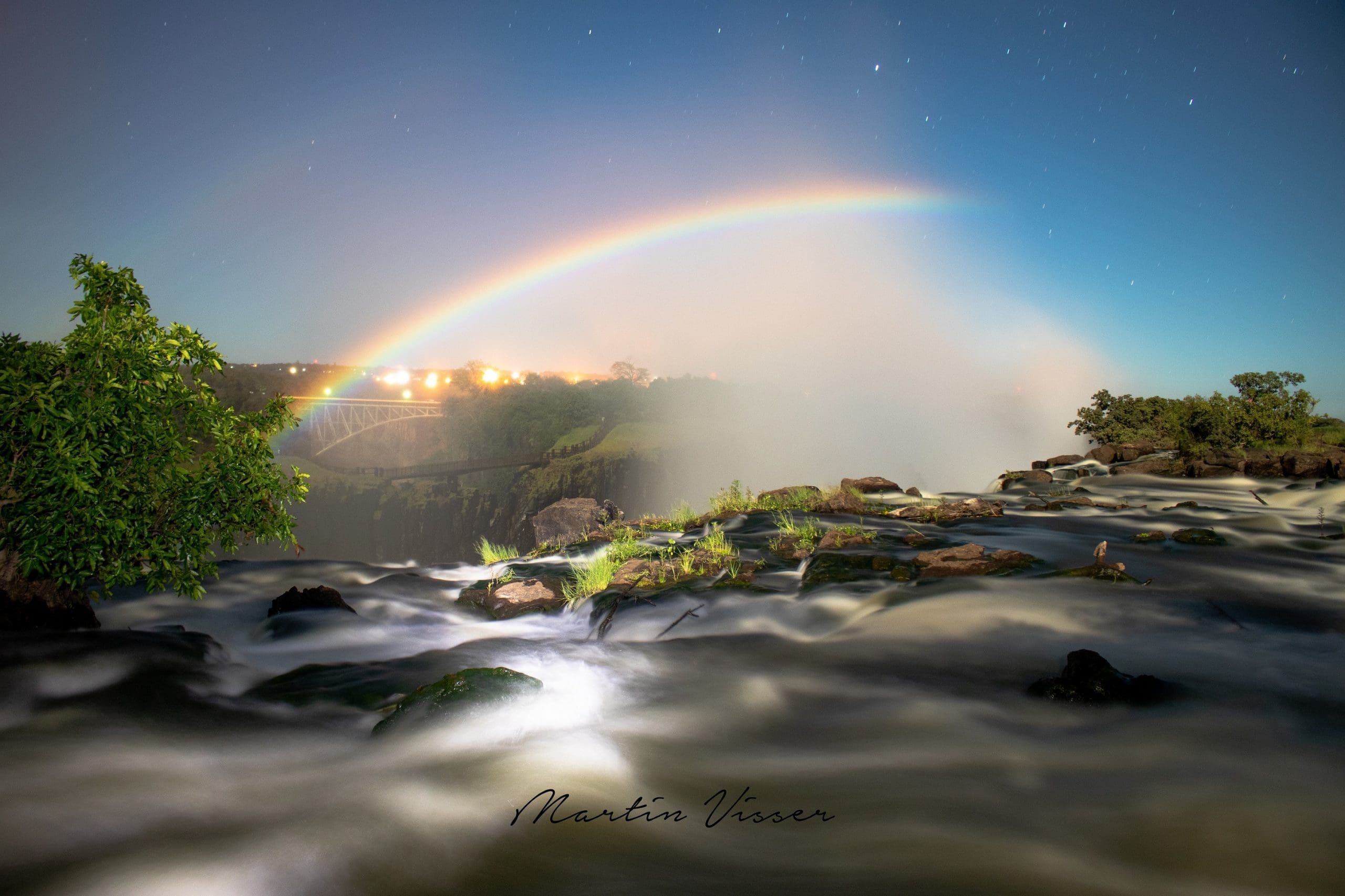 A lunar rainbow over Victoria Falls photographed from the Zambian side © Martin Visser / Tongabezi
A lunar rainbow over Victoria Falls photographed from the Zambian side © Martin Visser / Tongabezi
Just as the sun is bright enough to reflect and refract raindrops into a seven-colour arc, so too is a full moon. Since moonlight is much fainter than the intensely luminous light of the sun, a moonbow is not nearly as bright as a rainbow seen during the day, but perhaps that is what makes it so special.
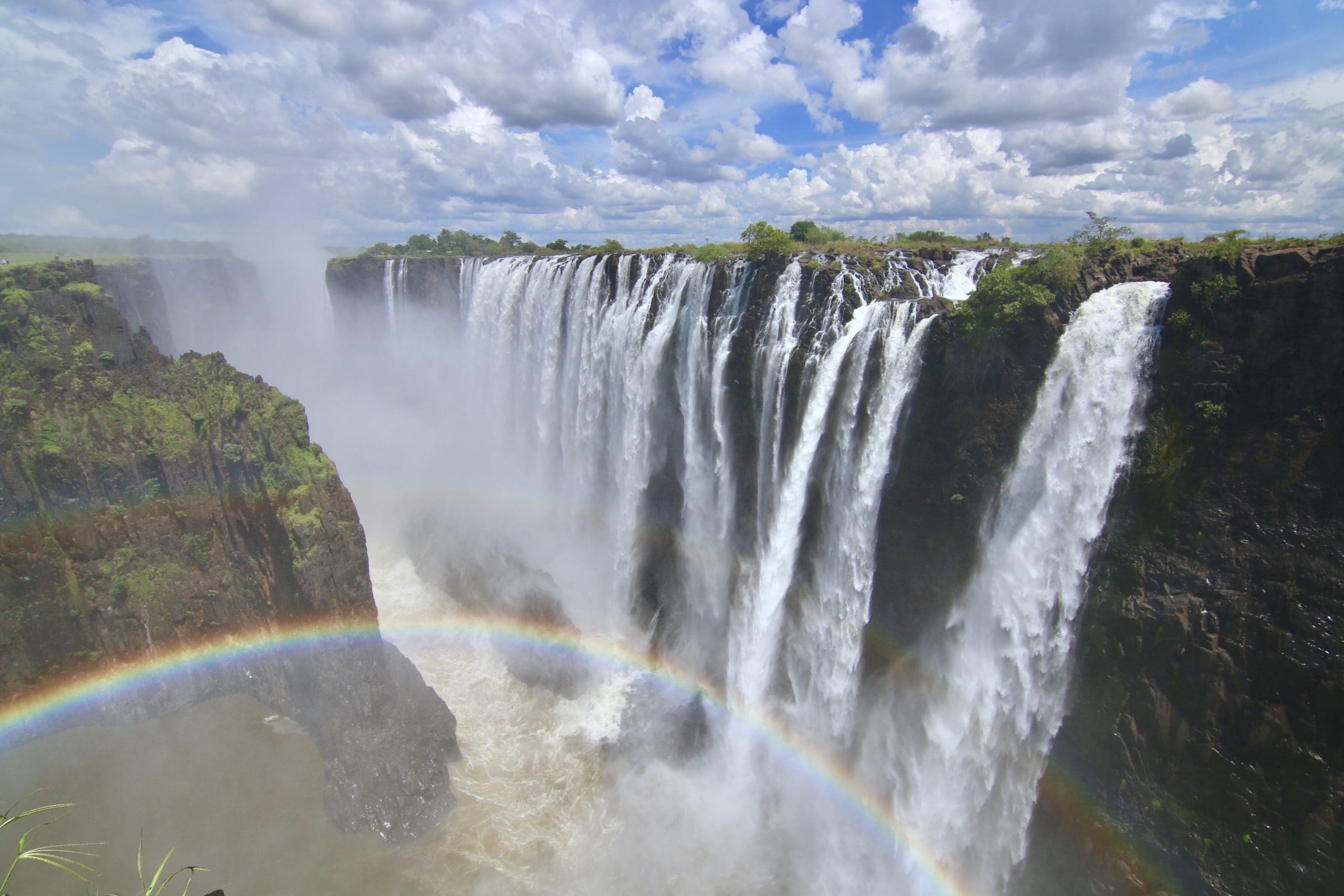 A rainbow captured in the mist of Victoria Falls during the day © Wanderglider / Tongabezi
A rainbow captured in the mist of Victoria Falls during the day © Wanderglider / Tongabezi
There is no question about it; seeing a lunar rainbow at Victoria Falls is a must! Here are three reasons why we think you should get it on (and plan to cross it off!) your travel bucket-list:
Once in a lifetime opportunity
The lunar rainbow at Victoria Falls can only be experienced for three days during full moon and when water levels from the Zambezi River are high. The three months considered the best for seeing particularly bright moonbows are June, July and August.
Just seeing the Seventh Wonder of the World itself is an amazing experience. Add a once in a lifetime moment of getting lost in the magic of a lunar rainbow by moonlight and you are sure to be bowled over.
Absolutely photogenic
The vibrant colours of a lunar rainbow can show up clearly in photographs as long as a slow-shutter or long-duration setting is used. This will be a memorable capture for any avid photographer that is up for an exciting night-time photography challenge.
Just remember, of course, not to use your flash, and to take a tripod as it is necessary to stabilise your camera as much as possible. As a standard rule, an ISO of 800 and a shutter time of 10 seconds works well, but you might want to play around depending on the light when you visit.
An entire experience
Tongabezi is a luxury lodge overlooking the Zambezi River from the Zambian side, just upstream of Victoria Falls. During the full moon moonbow experience, guests are treated to a packed picnic and trained guide accompanying them throughout the trip.
This added touch of a sumptuous meal with good company makes the whole experience memorable, although the lunar rainbow sighting is of course the winning event of the evening!
STAY UPDATED
Join our community of keen travellers, wildlife enthusiasts and adventure seekers.
The 20 Best Things To Do In Paris
April 17, 2024
The Best Things to Do in Paris, France
Paris, the City of Light, needs no introduction. It's a destination that effortlessly combines history, art, culture, and romance, making it a must-visit for travelers from around the globe.
Whether you're a first-time visitor or a seasoned traveler looking for new experiences, Paris offers something for everyone. From iconic landmarks to hidden gems tucked away in cobblestone streets, this guide will take you on a journey through the best things to do in Paris.
Welcome to Paris, where every street corner tells a story and every café invites you to linger a little longer. With its timeless beauty and vibrant energy, Paris captures the hearts of all who visit.
From the majestic Eiffel Tower to the charming neighborhoods of Montmartre and Le Marais, there's no shortage of adventures awaiting you in the French capital.
So, grab a croissant, sip on some café au lait, and get ready to explore the best that Paris has to offer.
1. Climb the Eiffel Tower
No visit to Paris would be complete without a trip to the iconic Eiffel Tower. Built for the 1889 World's Fair, this towering structure has become synonymous with the city itself. As you ascend the tower, you'll be treated to breathtaking views of Paris spread out before you. From the sprawling cityscape to the meandering Seine River, the panoramic vistas are nothing short of spectacular.
Tips for Visiting: Beat the crowds by purchasing your tickets in advance online. Consider visiting the tower early in the morning or late in the evening for smaller crowds and magical views of the city illuminated at night. And don't forget your camera – you'll want to capture every moment of this unforgettable experience.
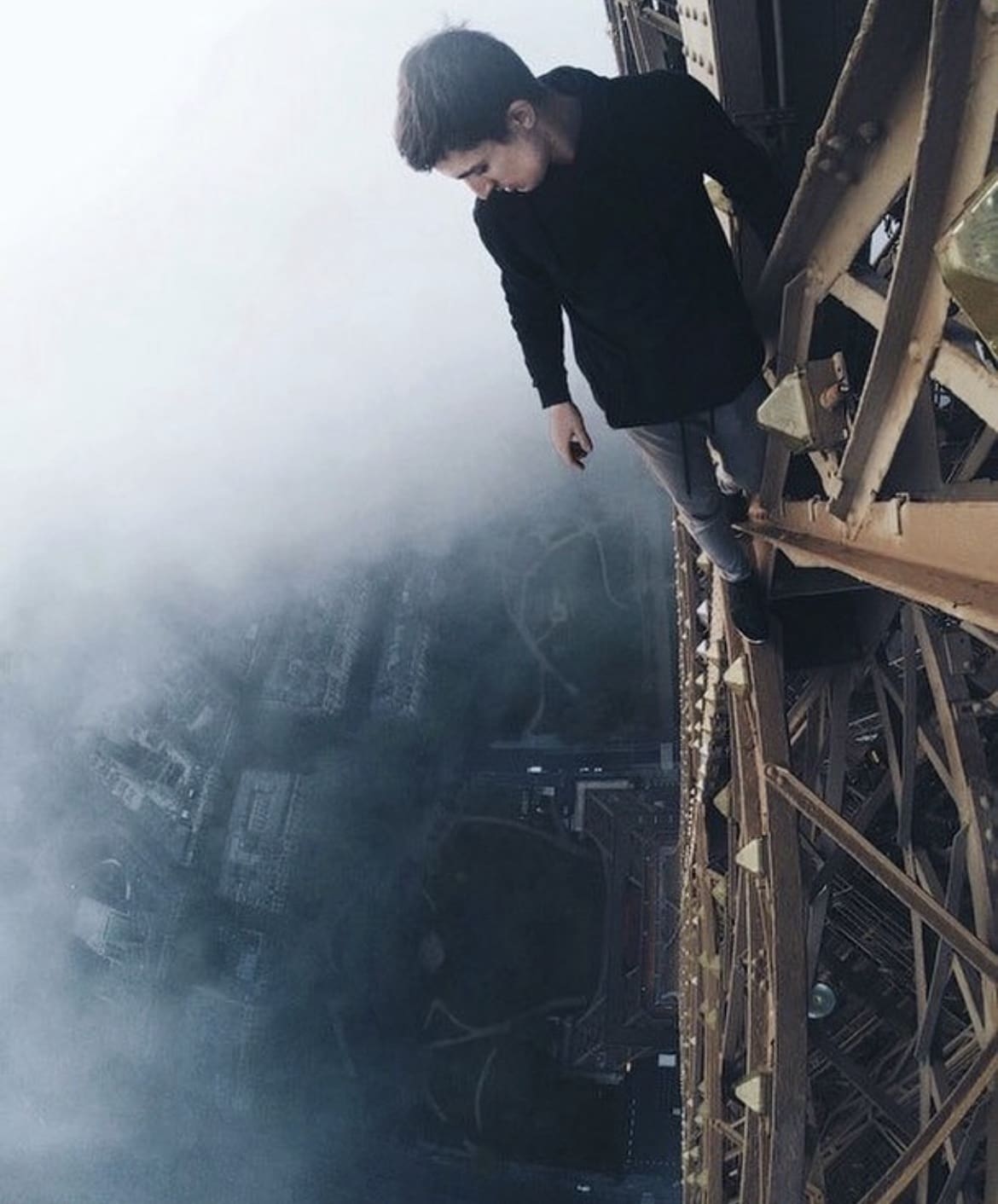
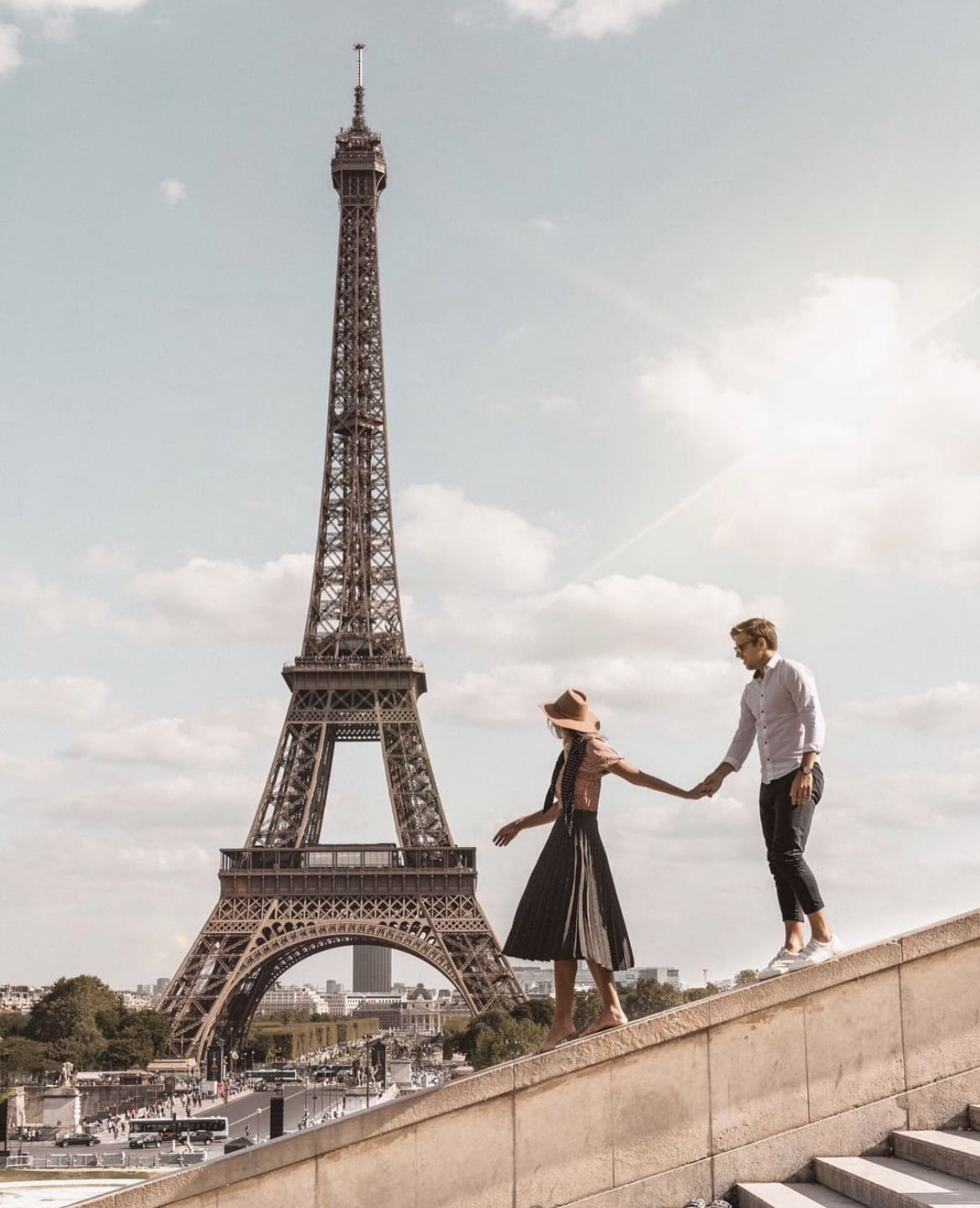
2. Visit the Louvre Museum
Home to some of the world's most famous works of art, the Louvre Museum is a cultural treasure trove waiting to be explored. From the enigmatic smile of the Mona Lisa to the majestic beauty of the Venus de Milo, the museum's collection spans thousands of years of artistic history. But it's not just the masterpieces inside that captivate visitors – the museum itself is a work of art, housed in a stunning palace that once served as a royal residence.
Tips for Visiting: To make the most of your visit, plan your route in advance and prioritize the works of art you most want to see. Consider purchasing a skip-the-line ticket to avoid long queues, especially during peak hours. And don't forget to take breaks – with over 35,000 works on display, exploring the Louvre can be a marathon, not a sprint.
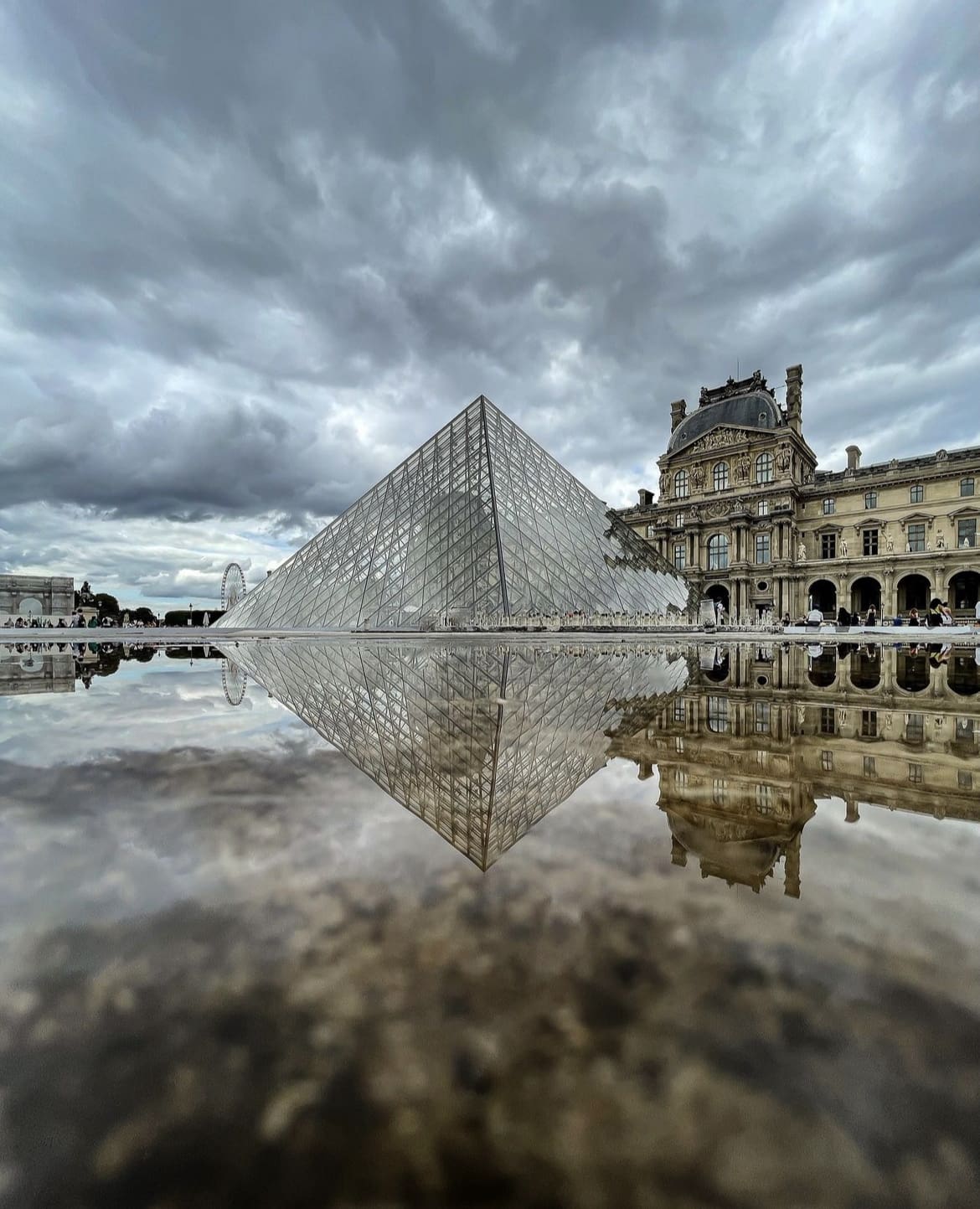
3. Explore Montmartre
Step back in time and immerse yourself in the bohemian charm of Montmartre, a neighborhood steeped in art, history, and romance. From the winding streets lined with quaint cafés to the bustling Place du Tertre, where artists set up their easels to capture the essence of Paris, Montmartre is a feast for the senses. Be sure to visit the iconic Sacré-Cœur Basilica, perched atop the highest point in the city and offering sweeping views of Paris below.
Tips for Visiting: Wear comfortable shoes – Montmartre's cobblestone streets can be a bit uneven. Take your time exploring the neighborhood's hidden gems, from secret gardens to tucked-away galleries. And don't be afraid to strike up a conversation with the locals – you never know what hidden treasures they might recommend.
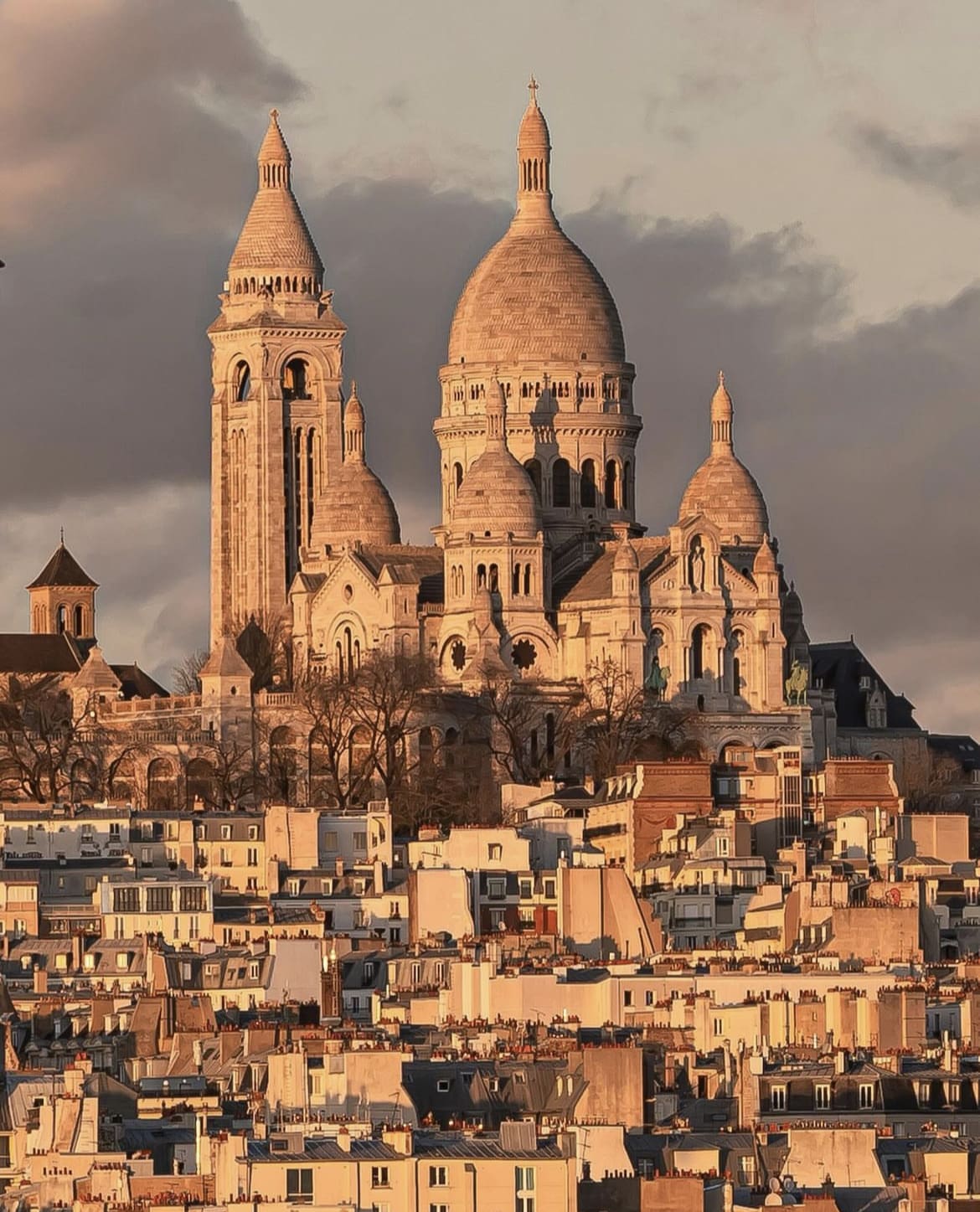
4. Enjoy a Seine River Cruise
There's something undeniably magical about seeing Paris from the Seine. A river cruise offers a different perspective of the famed cityscape, gliding past historic landmarks like the Louvre, Notre-Dame, and the Eiffel Tower, all illuminated against the night sky. Whether you opt for a simple sightseeing tour or splurge on a dinner cruise, the Seine offers a picturesque escape from the bustling city streets.
Tips for Visiting: For a romantic experience, choose an evening cruise to see the city lights twinkling along the water. Many cruises offer audio guides in multiple languages, helping you understand the rich history behind each passing structure. Also, booking tickets in advance can often secure you a better deal or a guaranteed spot on popular cruises.
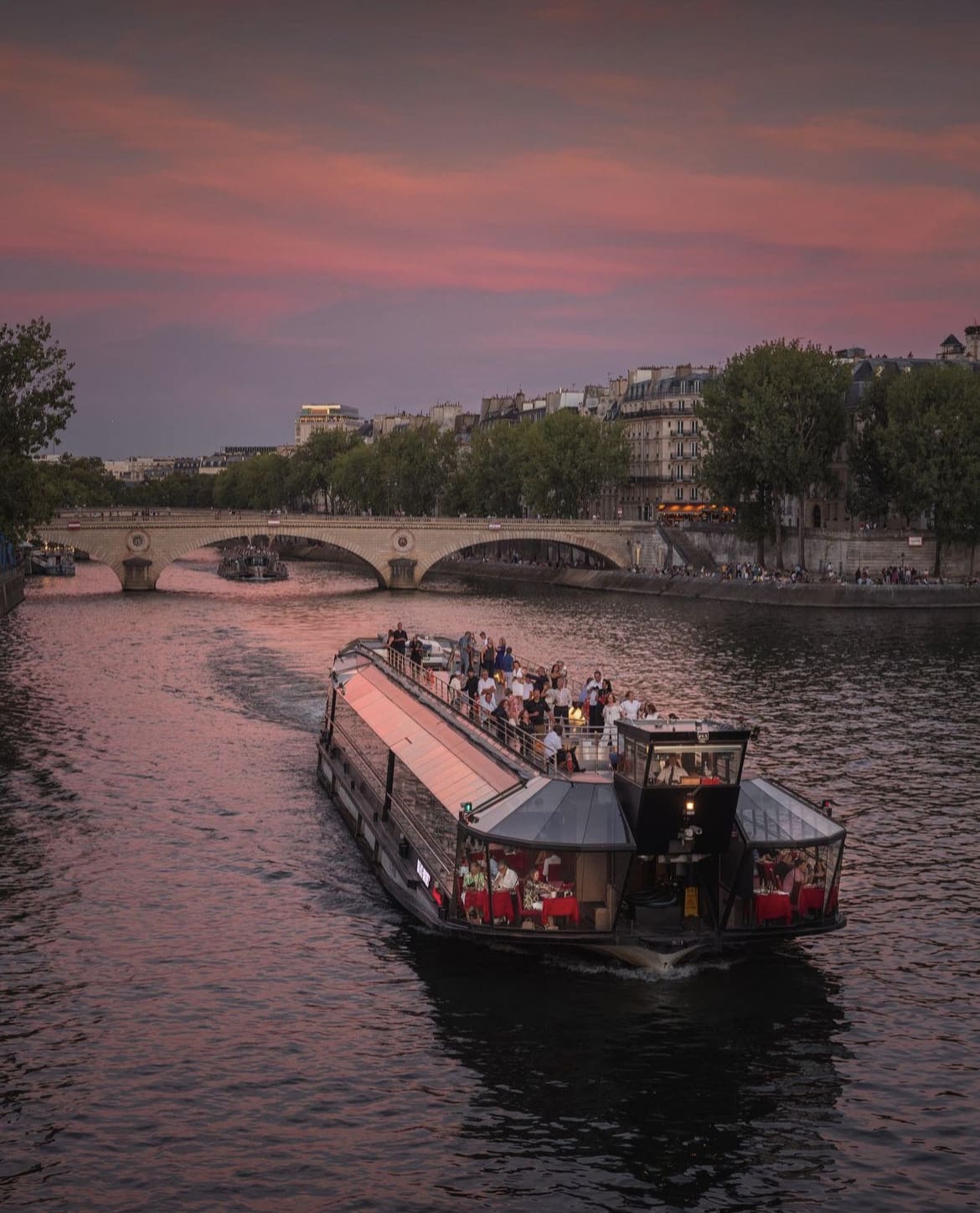
5. Tour Notre-Dame Cathedral
Despite suffering significant damage in a 2019 fire, Notre-Dame remains a monumental site, embodying the heart of Parisian history and architecture. While the interior and the rooftop are closed for restoration, you can still admire the façade's intricate French Gothic details and the surrounding area, which buzzes with the energy of locals and tourists alike.
Tips for Visiting: Visit the nearby Ile Saint-Louis for a stroll and some of the best ice cream at Berthillon, or explore the Deportation Martyrs' Memorial, a poignant site tucked away at the tip of the Île de la Cité. Stay updated on the restoration process and available tours through the cathedral’s official website or local tourism boards.
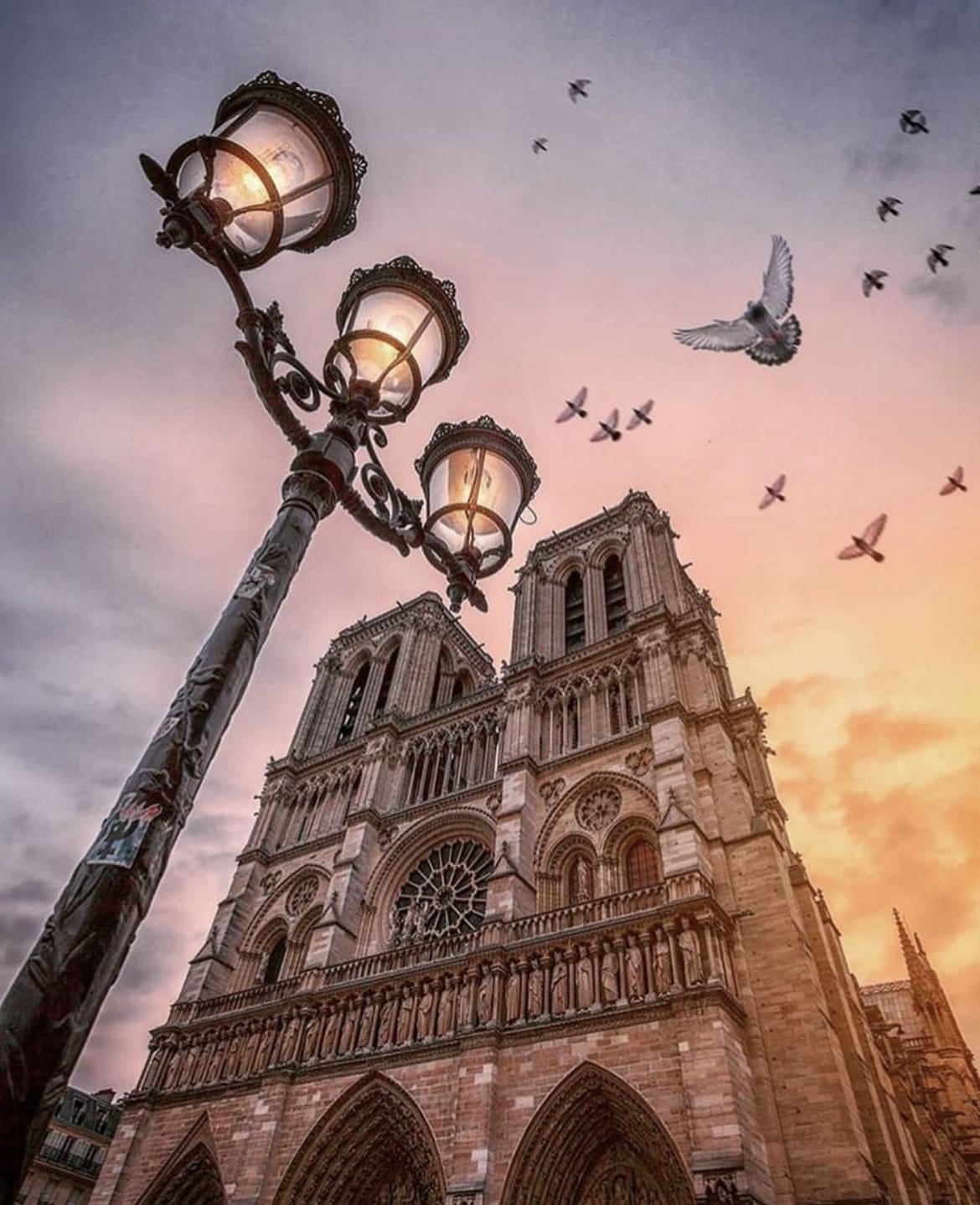
6. Stroll Through the Luxembourg Gardens
Created in 1612 by Marie de' Medici, the Luxembourg Gardens are a green haven in the middle of the Latin Quarter. The gardens feature beautifully manicured lawns, statuesque fountains, and the stunning Luxembourg Palace. It’s a perfect spot for a leisurely stroll, a jog, or just to sit and enjoy a sunny day with a good book.
Tips for Visiting: Pack a picnic to enjoy on the lawns or grab a chair by the central fountain for prime people-watching. The gardens also host free photo exhibitions on the fence along Rue de Médicis and Rue de Vaugirard, adding an artistic flair to your visit.
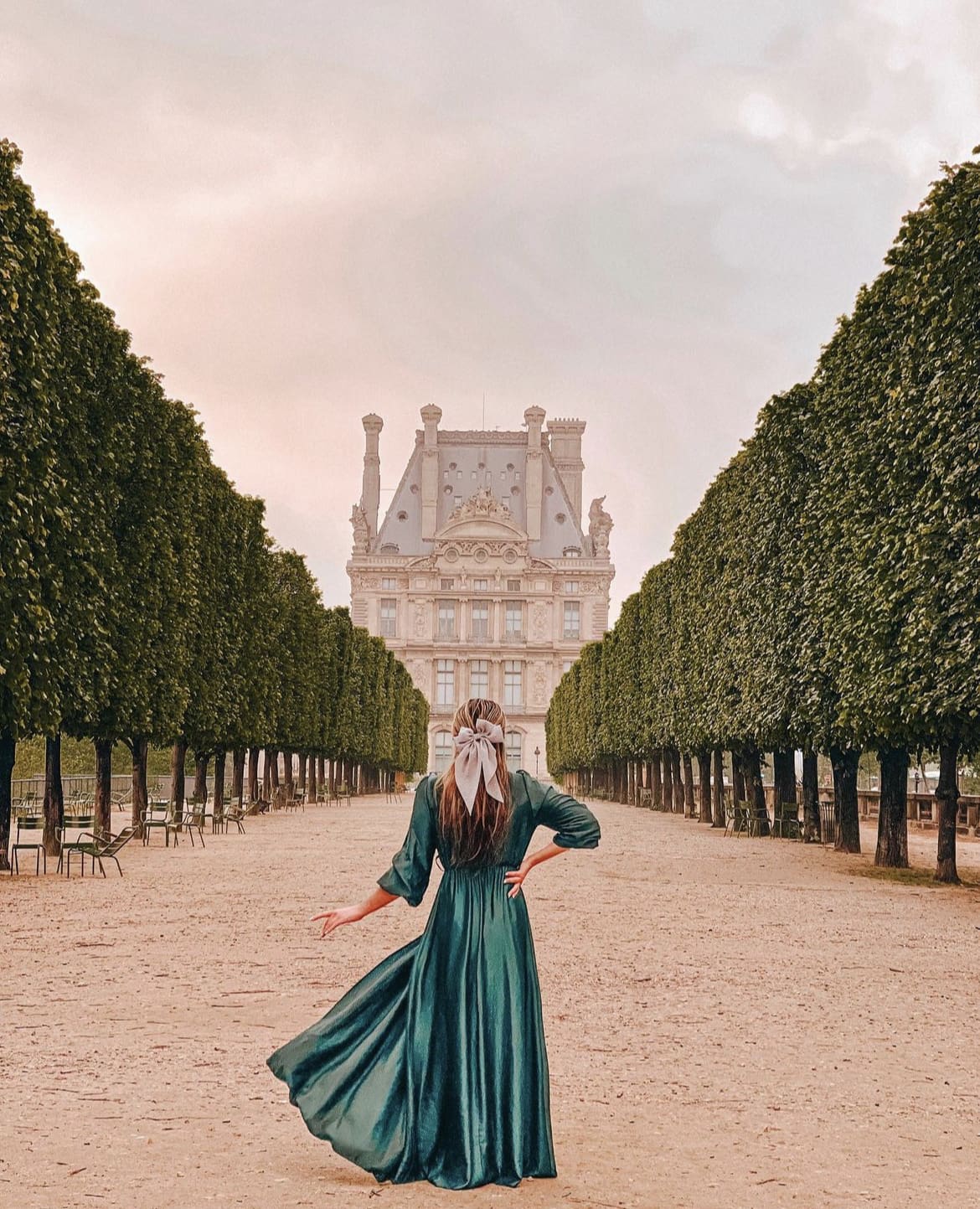
7. Discover the Musée d’Orsay
Housed in a beaux-arts railway station on the left bank of the Seine, the Musée d’Orsay is renowned for its impressive collection of Impressionist and Post-Impressionist masterpieces. Here, art lovers can admire works by painters like Van Gogh, Monet, Degas, and Renoir. The museum itself is a work of art, with a striking clock window offering views over Montmartre.
Tips for Visiting: Purchase a "skip-the-line" ticket online to avoid long waits, especially during peak tourist seasons. Start at the top floor and work your way down to enjoy the artwork without rushing, and make sure to check out the temporary exhibitions, which often feature lesser-known artists and themes.
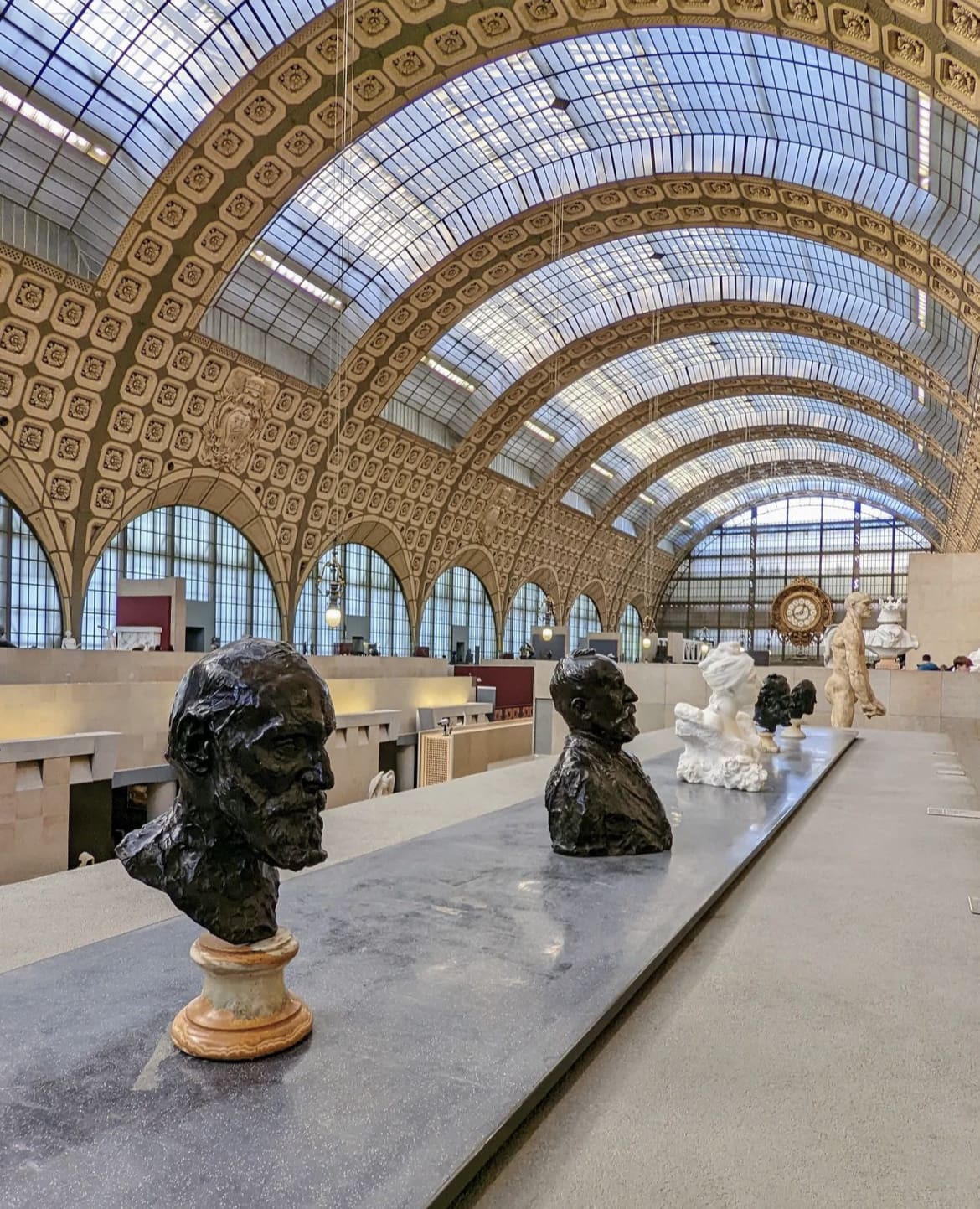
8. Shop in Le Marais
Le Marais is not only one of the most historic districts of Paris but also a top destination for shopping enthusiasts. Here, you can find everything from high-end boutiques to vintage shops offering unique finds. The area retains a distinctly medieval feel with its narrow streets and historic buildings, adding to the shopping experience.
Tips for Visiting: Spend some time wandering through the streets like Rue des Rosiers and Rue des Francs-Bourgeois. Don't miss the concept stores and independent fashion boutiques that reflect Paris's reputation as a fashion capital. Sundays are particularly lively in Le Marais, as most shops remain open while other parts of the city might close.
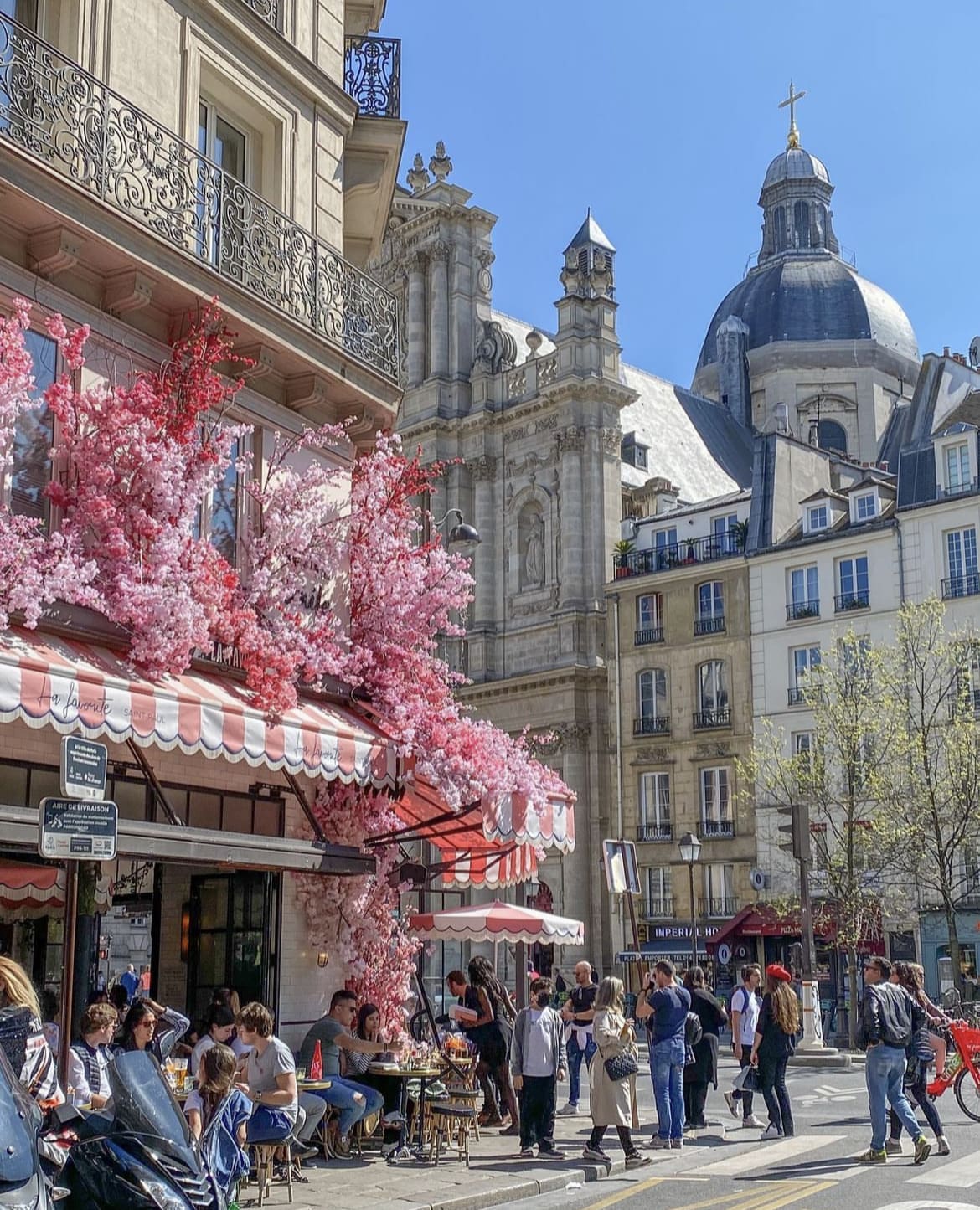
9. Watch a Show at the Moulin Rouge
For a truly Parisian night out, nothing beats the experience of watching a cabaret show at the famous Moulin Rouge. Known for its French Cancan and extravagant performances, the Moulin Rouge offers a glimpse into the glamorous Belle Époque period. The theater's rich history and vibrant atmosphere make it a must-visit for anyone seeking the quintessential Paris nightlife.
Tips for Visiting: It's advisable to book your tickets well in advance as shows can sell out quickly, especially during tourist seasons. Opt for a dinner-show package to enjoy some exquisite French cuisine while you watch the performance. Dress elegantly as the venue maintains a strict dress code to match its upscale ambiance.
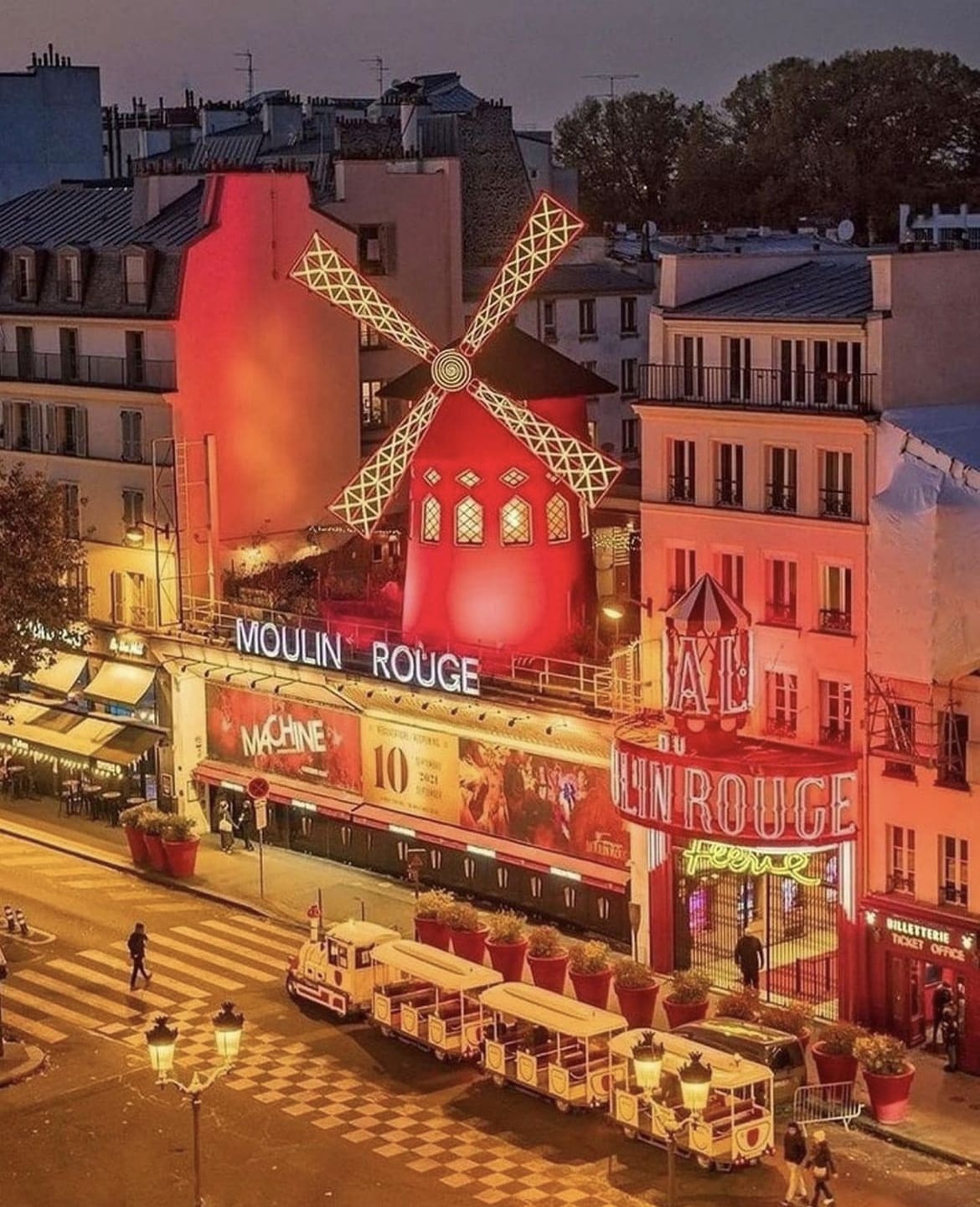
10. Visit the Sainte-Chapelle
Located within the medieval Palais de la Cité, the Sainte-Chapelle is a hidden treasure of Paris. This stunning chapel, known for its breathtaking stained glass windows, features 1,113 scenes from the Old and New Testaments. The upper chapel, particularly, radiates with light and color, creating a mesmerizing effect that draws visitors from around the world.
Tips for Visiting: Try to visit on a sunny day when the natural light brings out the vivid colors of the stained glass to full effect. Buying a "skip-the-line" ticket can save you time, allowing more of your day to explore other nearby attractions like the Conciergerie.
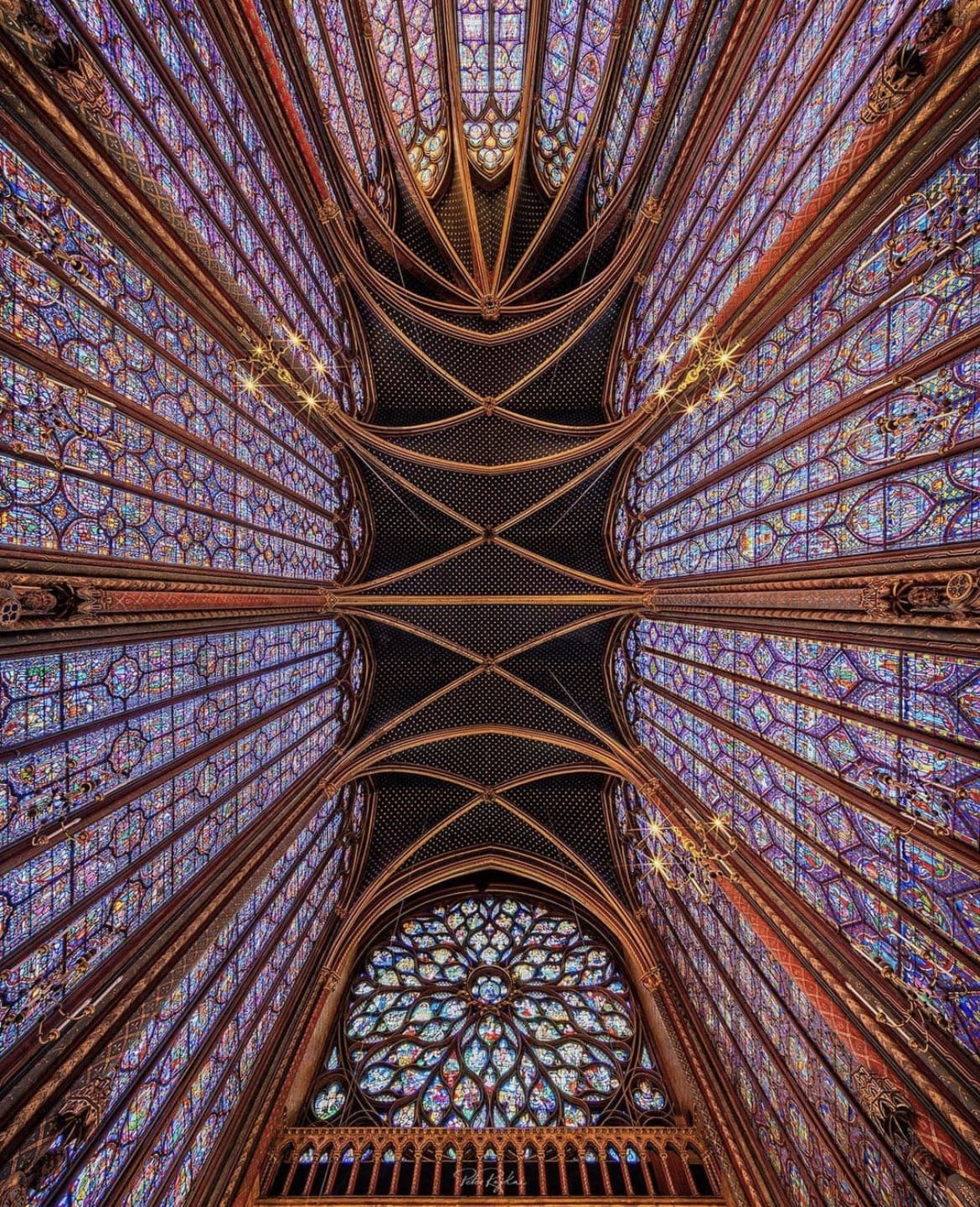
11. Sample French Cuisine in a Bistro
No trip to Paris would be complete without indulging in the local cuisine at a traditional French bistro. From escargot and foie gras to coq au vin and ratatouille, the flavors of French cuisine can best be experienced in the casual yet intimate setting of a Parisian bistro.
Tips for Visiting: Look for bistros where locals eat, often slightly off the main tourist paths. Don't hesitate to try the plat du jour, which is usually a well-prepared dish using seasonal ingredients. Pair your meal with a glass of French wine, recommended by the house for a truly local dining experience.
12. Walk Along the Champs-Élysées
The Champs-Élysées, often referred to as "the world's most beautiful avenue," stretches from the Place de la Concorde to the Arc de Triomphe. This iconic boulevard is lined with cinemas, cafes, and luxury specialty shops, making it a premier destination for anyone looking to soak in Parisian luxury and bustling street life.
Tips for Visiting: Visit during a festive season like Christmas when the avenue is spectacularly lit up, or on Bastille Day for an impressive military parade. While the avenue is known for its high-end shopping, don't miss the less obvious cultural spots like the Grand Palais, which often hosts major art exhibitions and events.
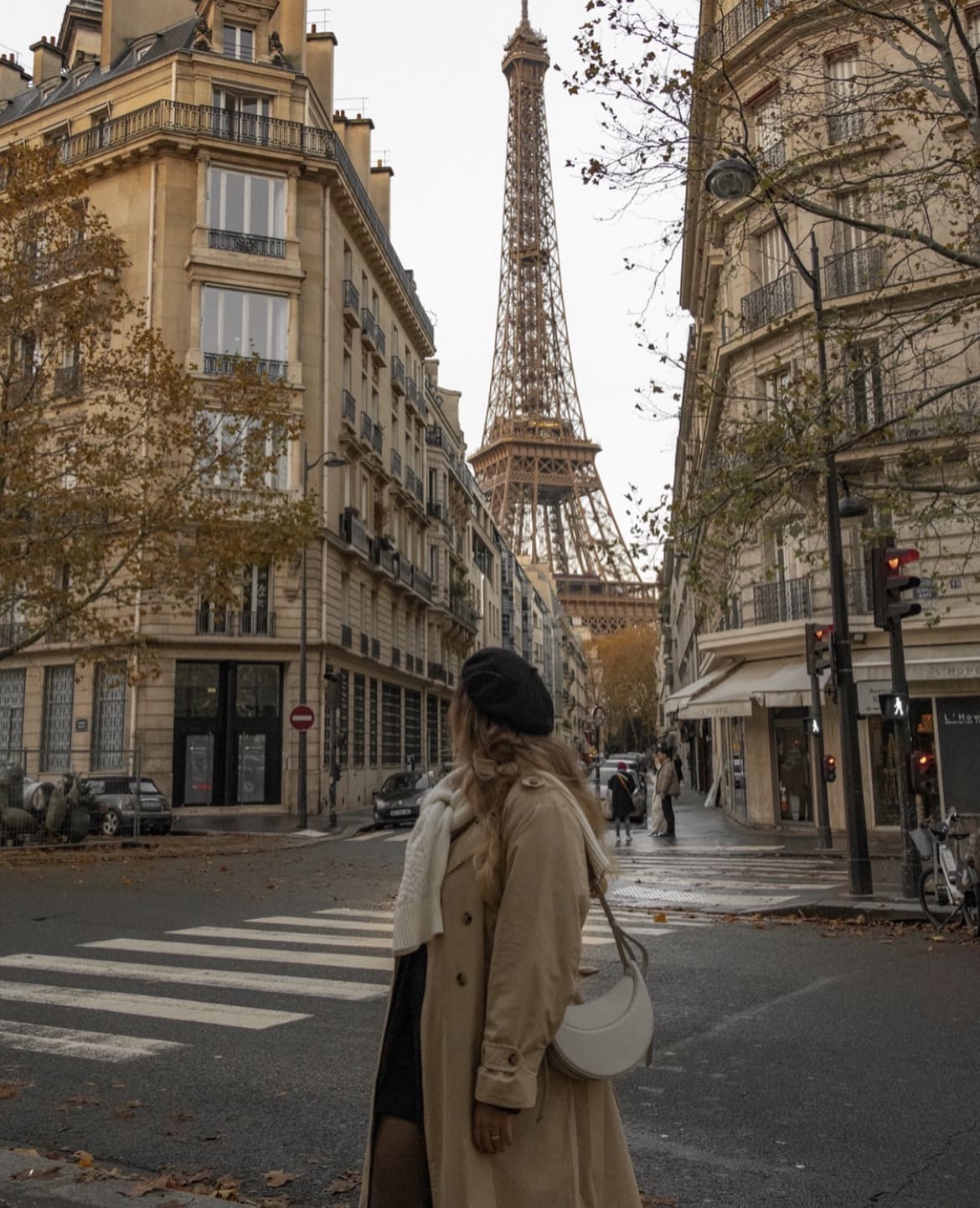
13. Explore the Catacombs of Paris
Beneath Paris's streets lies a shadowy underworld known as the Catacombs, a network of old quarry tunnels repurposed to hold the remains of over six million people. This macabre but fascinating attraction provides a unique glimpse into the history of Paris and the solution to its historic cemetery overcrowding.
Tips for Visiting: The Catacombs are cooler than street level, so bring a sweater. Tickets often sell out due to visitor limits, so book in advance and be prepared for a descent and ascent of narrow stairs. Remember, it's not suitable for those claustrophobic or uncomfortable with human remains.
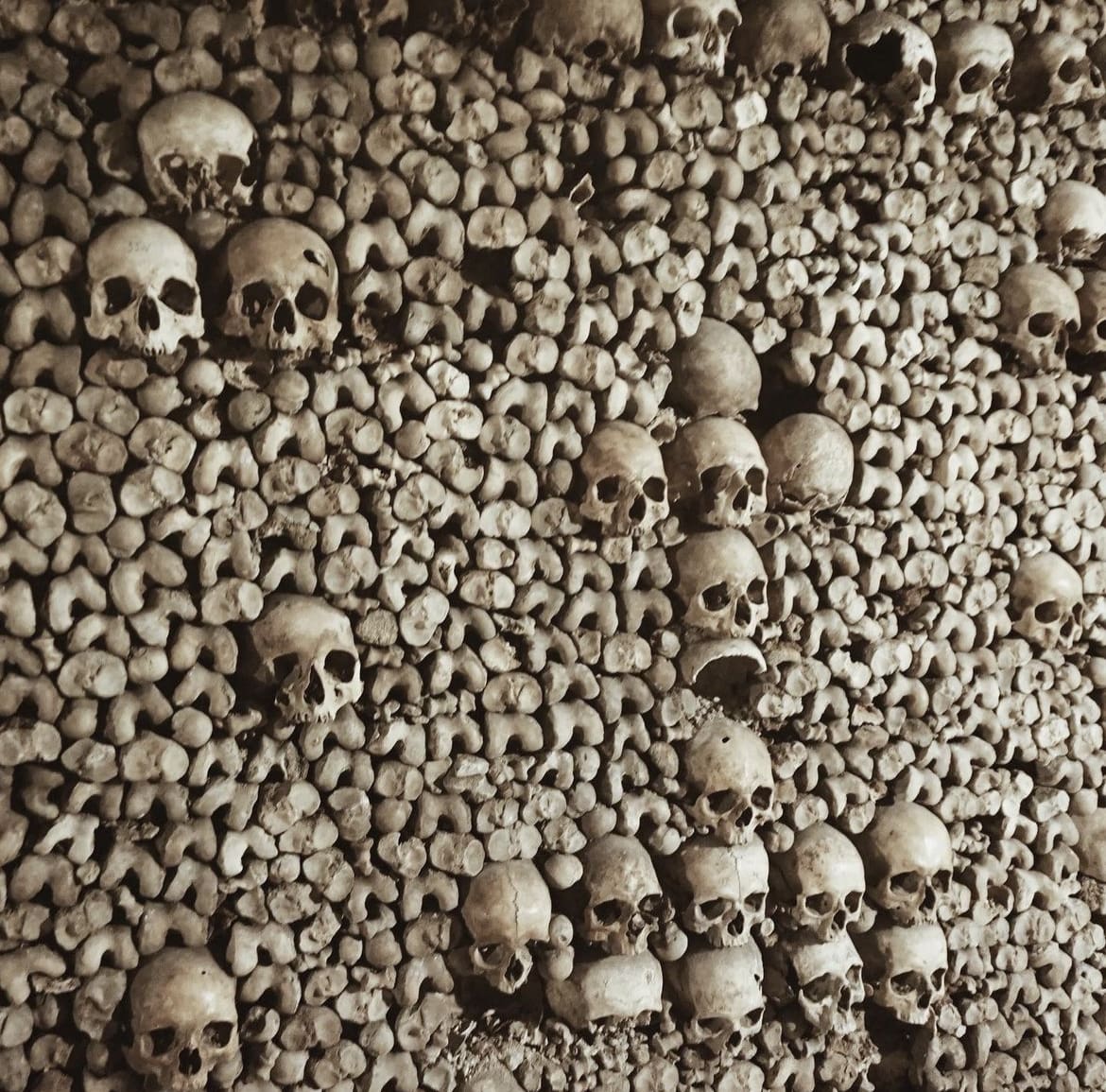
14. Visit the Palace of Versailles
The Palace of Versailles is a symbol of the absolute monarchy of the Ancien Régime and is as stunning today as it was centuries ago. With its opulent architecture, sprawling gardens, and the famous Hall of Mirrors, Versailles offers a remarkable insight into French royal history and extravagance.
Tips for Visiting: Travel to Versailles early in the day to avoid crowds, especially in the palace. Consider renting a golf cart or bike to explore the extensive gardens, or plan your visit on a day when the musical fountains show is scheduled, adding an extra layer of beauty to the gardens.
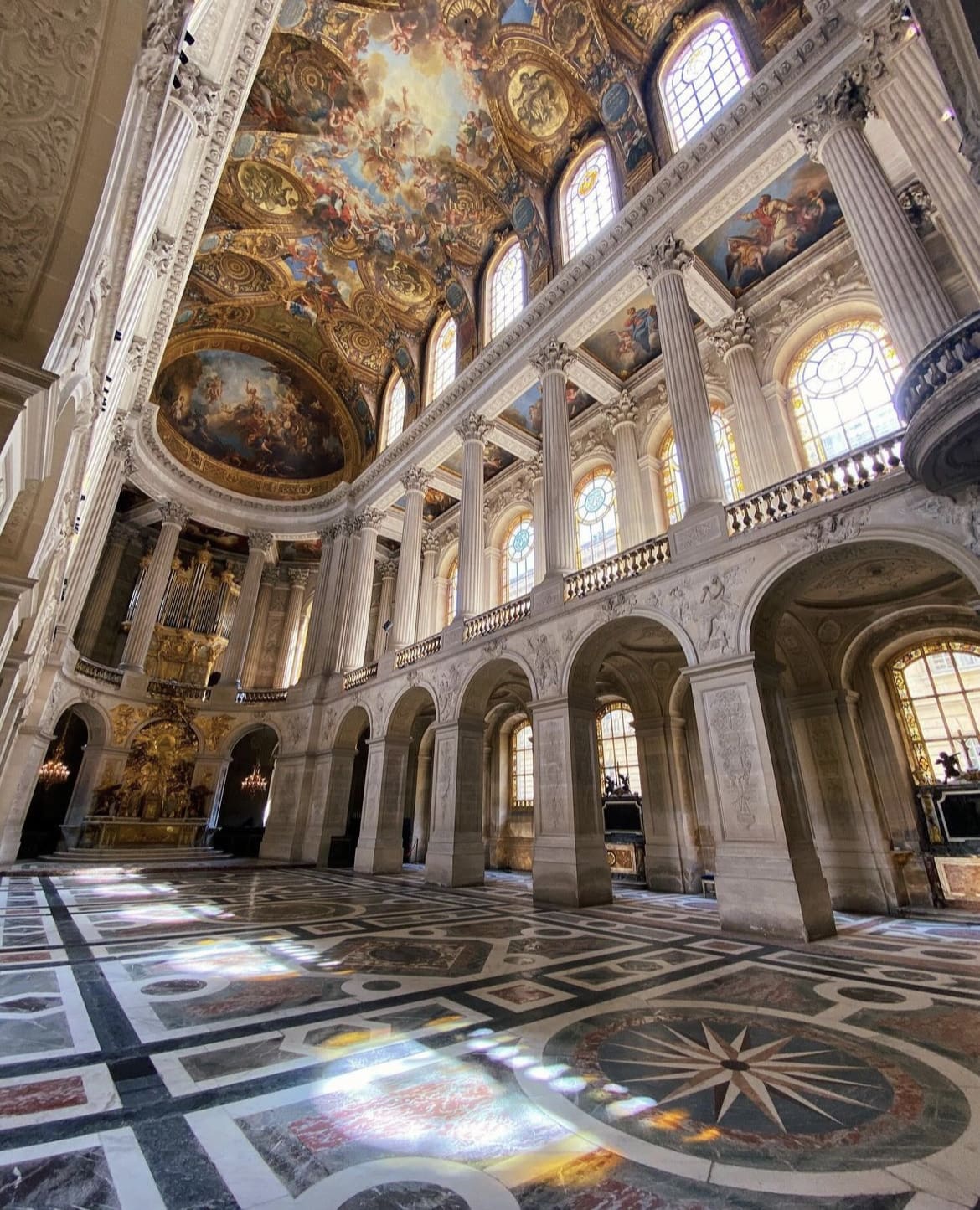
15. Attend a Cooking Class
Embrace the culinary arts by participating in a cooking class where you can learn to make classic French dishes and pastries. These classes provide a hands-on way to understand and appreciate the nuances of French cooking, from sourcing the best ingredients to mastering the perfect techniques.
Tips for Visiting: Choose a class that includes a market visit to experience how locals shop for fresh produce. Look for small-group classes for a more personalized instruction, and make sure the class is in English, unless you're comfortable following along in French.
16. Relax in the Café Culture
NCafés are not just places to drink coffee, but are institutions where locals and visitors alike can watch the world go by, read a book, or enjoy lively conversations. The café terraces that line the streets offer a perfect spot to relax and soak in the atmosphere of Paris.
Tips for Visiting: Choose a café off the beaten path to avoid the tourist markups and to find a more authentic experience. Café de Flore and Les Deux Magots in Saint-Germain-des-Prés are renowned for their literary history and are worth a visit for those wanting to channel the spirits of past intellectuals and artists.
17. Picnic in the Parc des Buttes-Chaumont
One of the largest and most enchanting parks in Paris, the Parc des Buttes-Chaumont offers a lush landscape of cliffs, bridges, waterfalls, and paths that provide a picturesque escape from urban life. It’s a popular spot for picnics, especially by the lake beneath the towering Temple de la Sibylle.
Tips for Visiting: Bring a blanket and some locally sourced cheese, bread, and wine for the ultimate Parisian picnic. The park also features puppet shows and free concerts during the summer months, making it a great location for families and romantic outings alike.
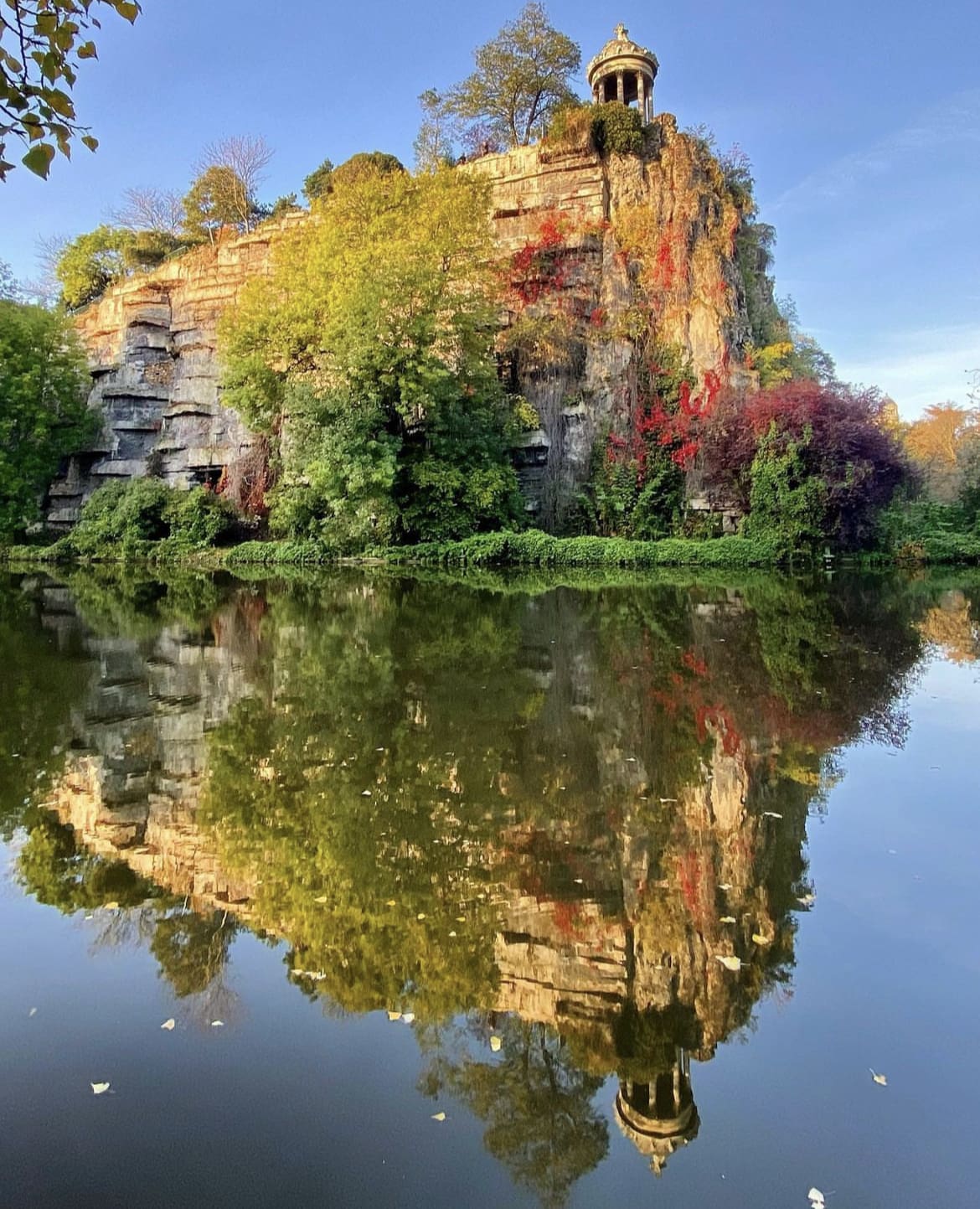
18. Explore the Latin Quarter
Known for its student life, bustling bistros, and vibrant nightlife, the Latin Quarter is one of Paris's most dynamic districts. Here, history meets modernity with landmarks like the Panthéon and the Sorbonne juxtaposed against lively street markets and funky bookshops.
Tips for Visiting: Wander through the narrow streets and discover the area’s many hidden treasures, such as the Shakespeare and Company bookstore, an iconic English-language bookstore where you can catch readings and literary events. Don’t miss the local cinemas which often show independent films.
19. Visit the Pompidou Center
A cultural hub in the heart of Paris, the Pompidou Center not only offers an extensive collection of modern and contemporary art but also houses a public library and a rooftop terrace with stunning views of the city. The building itself, with its innovative 'inside-out' architecture, is a work of art.
Tips for Visiting: Check out the schedule of live performances and exhibitions, which often include cutting-edge works by contemporary artists. The rooftop offers one of the best views of Paris, so be sure to visit at sunset for a breathtaking experience.
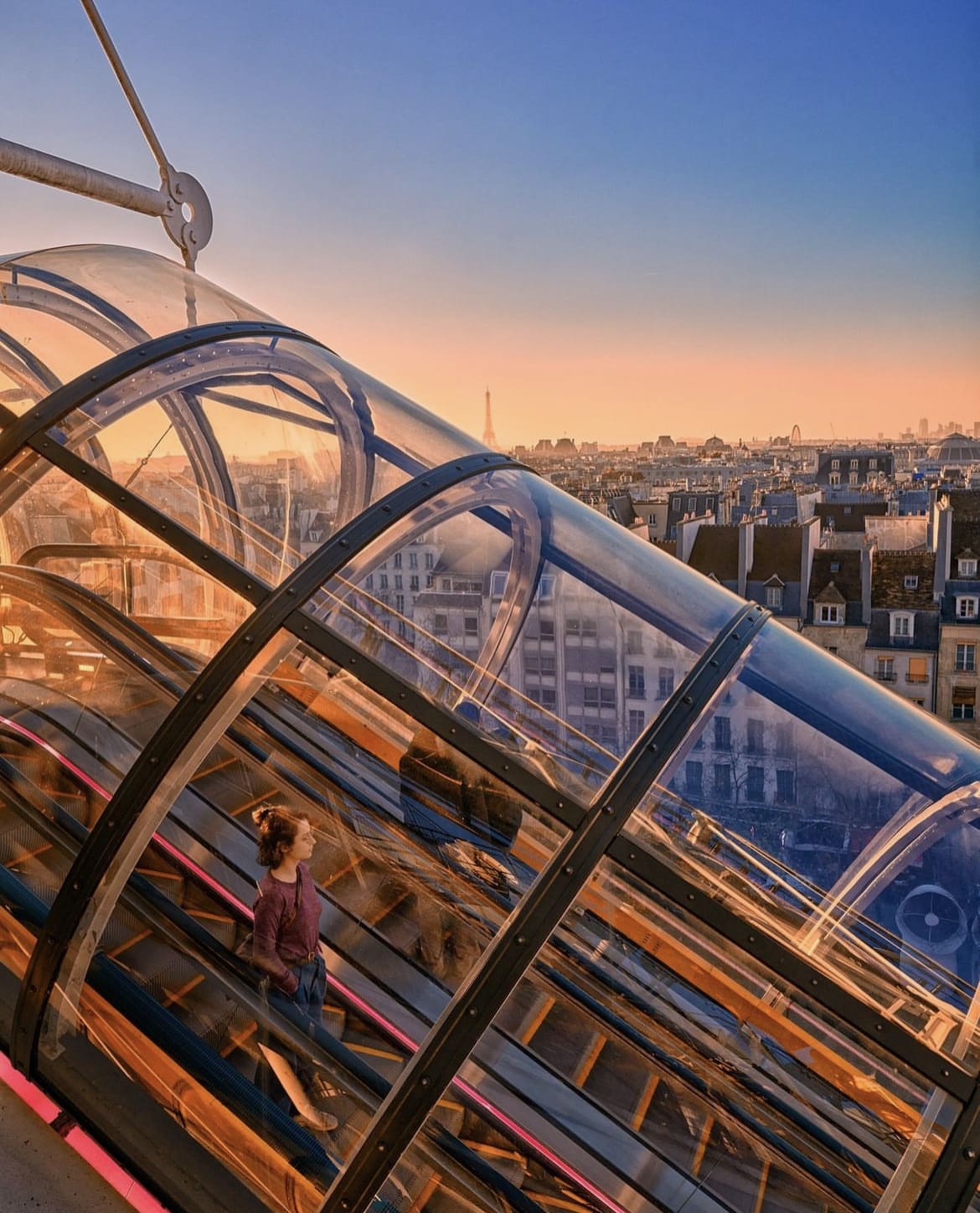
20. Shopping at Galeries Lafayette
For those looking to indulge in a bit of retail therapy, Galeries Lafayette is the go-to destination. This historic department store is not only a shopper’s paradise but also an architectural marvel with a stunning stained glass dome. It offers everything from high-end fashion brands to gourmet food.
Tips for Visiting: Head to the rooftop terrace for free, panoramic views of Paris, including the Eiffel Tower. The store also offers fashion shows on certain days, which can be a unique addition to your shopping experience.
21. Visit the Arc de Triomphe
Standing proudly at the western end of the Champs-Élysées, the Arc de Triomphe is one of Paris’s most famous monuments. Commissioned by Napoleon in 1806 to celebrate his victories, the arch towers over the bustling Place Charles de Gaulle, a site of national pride and history. Visitors can climb to the top for sweeping views of the twelve radiating avenues and a bird’s eye view of the city.
Tips for Visiting: Access to the Arc de Triomphe involves climbing 284 steps, so be prepared for a bit of a workout. It's best to visit early in the morning or later in the evening to avoid the crowds and to capture the perfect photo of the Parisian skyline during golden hour. Additionally, every evening a flame is rekindled at the Tomb of the Unknown Soldier under the arch, which makes for a poignant moment to witness.

Paris offers an endless array of activities that cater to all tastes, from the heights of the Eiffel Tower to the depths of the Catacombs. This guide has barely scratched the surface, but with these 20 activities, you'll experience the breadth of what Paris has to offer.
Whether you’re seeking art, history, gastronomy, or just a leisurely stroll through beautiful gardens, Paris is a city that will enchant you with its timeless charm and vibrant atmosphere.
10 Beautiful Tulip Gardens Near Amsterdam
April 10, 2024
Tulip Mania: A Vibrant Guide to Amsterdam's Tulip Havens
Welcome to the rainbow that touches the ground! Amsterdam during tulip season is nothing short of a technicolor dream, a spectacle so dazzling it draws visitors from all corners of the globe. Here, the humble tulip isn't just a flower; it's a national obsession, a symbol of historical intrigue, and the star of the springtime show.
If you're looking to dive headfirst into this floral fantasy, you've clicked on the right guide. Buckle up, as we take you through the most breathtaking tulip havens near Amsterdam, where the flowers are not just seen but truly experienced.
1. Keukenhof Gardens, Lisse
The Floral Wonderland
Imagine stepping into a painting where the grass is greener, and the colors are so vivid they almost seem unreal. That's Keukenhof Gardens for you, often hailed as the "Garden of Europe." Just a short drive from Amsterdam, this floral paradise unfurls over 32 hectares, showcasing more than 7 million bulbs in bloom. From tulips to daffodils and hyacinths, Keukenhof is where spring makes its grand entrance.
Why You Can't Miss It: It's not every day you get to witness the sheer variety of over 800 tulip species painting the landscape in every hue imaginable. The garden's thematic sections, including the Japanese Garden, Natural Garden, and the Historical Garden, offer a multitude of floral experiences.
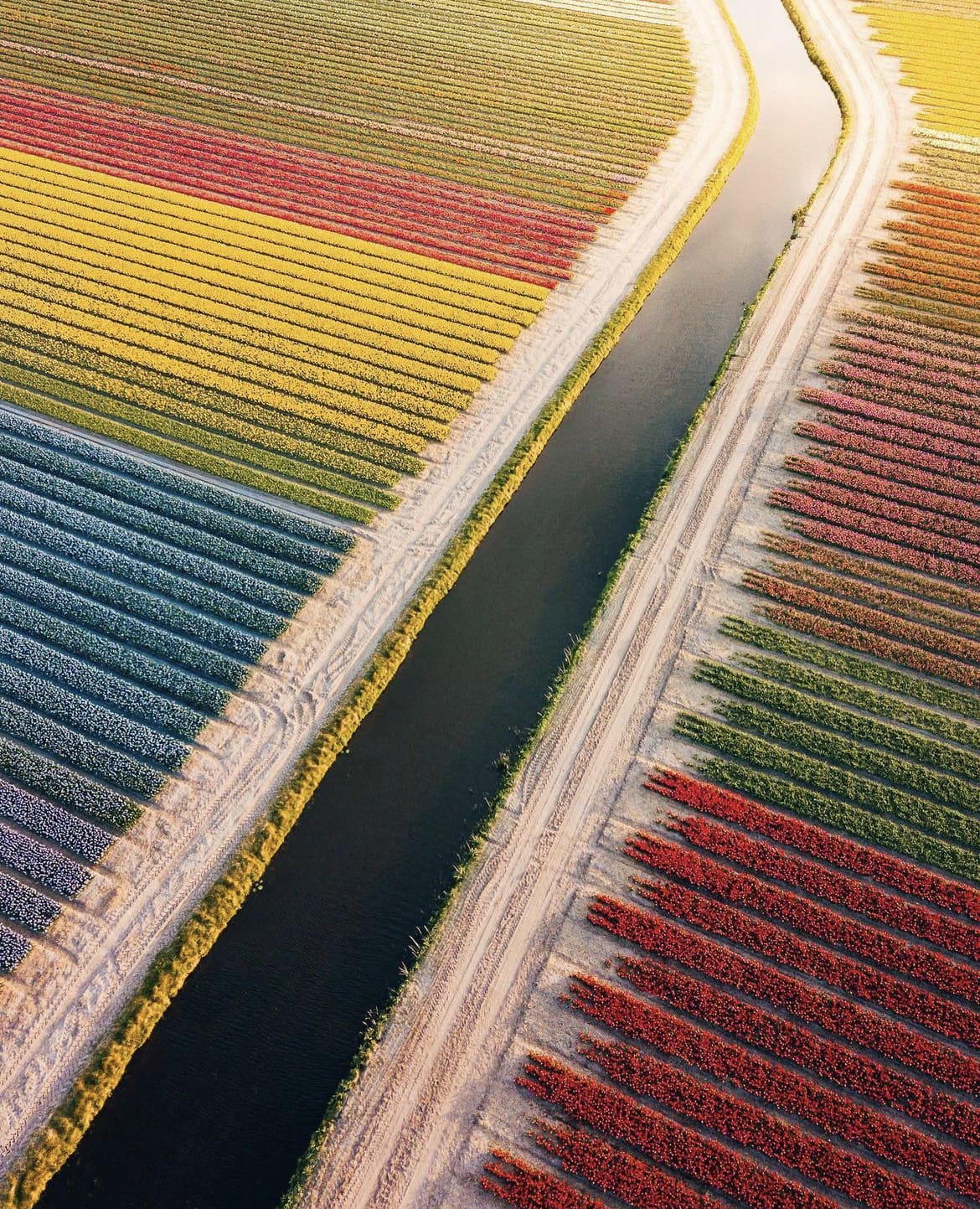
Pro Tips for the Tulip Enthusiast:
- Timing is Everything: Mid-April to early May is the sweet spot for catching the full spectacle. However, Keukenhof opens from late March to mid-May, giving you a broad window to plan your visit.
- Skip the Line: Tickets sell like hotcakes! Buy yours online to dodge the long queues.
- Explore Beyond the Petals: Don't rush off after the tulip gazing. The windmill and boat tours offer a unique perspective of the surrounding flower fields.
Keukenhof Gardens tickets are your golden ticket to a floral utopia. Secure them early and prepare for an unforgettable spring day out.
2. Zaanse Schans Tulip Gardens
A Time Capsule in Bloom
Next up, let's whirlwind you to Zaanse Schans, a scenic village that seems to have leaped out of a Dutch Golden Age painting, windmills, wooden houses, and all. But come spring, it's the tulip fields surrounding this historic setup that steal the spotlight. Picture this: vibrant tulips with the backdrop of spinning windmills – it's the Netherlands encapsulated in one frame.
Why You Can't Miss It: Zaanse Schans isn't just about tulips; it's a cultural dive into Dutch heritage. The tulip fields add layers to this living museum, enhancing its charm and appeal.
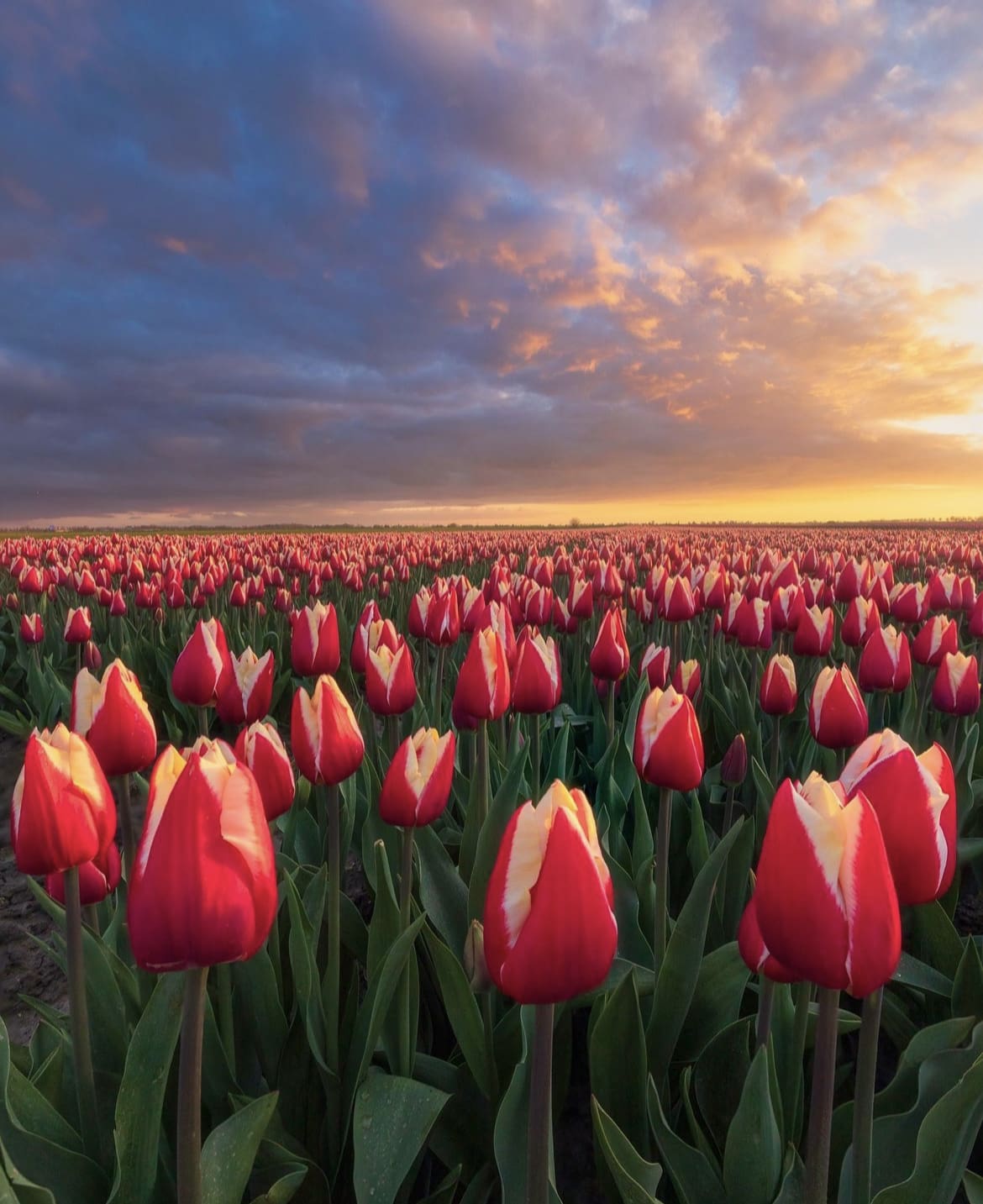
Pro Tips for the Tulip Enthusiast:
- Make it a Day Trip: There's more to Zaanse Schans than tulips. Explore the cheese factory, watch clogs being made, and visit the windmills for a full Dutch cultural immersion.
- Timing: Though the tulips are in bloom throughout the spring, visiting in April ensures you see them at their peak.
- Photography Paradise: Early morning or late afternoon offers the best light for your photos, minus the crowds.
Zaanse Schans Tulip Gardens not only offer a floral feast for your eyes but also a journey back in time. It’s a perfect blend of history, culture, and natural beauty, making it a must-visit spot during your tulip escapade near Amsterdam.
3. Tulip Fields of Lisse
A Carpet of Color
Lisse acts as the heartbeat of the Netherlands' tulip obsession. This town, nestled in the heart of the flower-growing region, transforms into a kaleidoscope of colors come spring. The fields stretch as far as the eye can see, draped in the most vivid tulips you'll ever lay eyes on.
Why You Can't Miss It: If there's a place that captures the essence of Dutch spring, it's here. The vast, uninterrupted fields of Lisse offer a tulip experience that's both immersive and breathtaking.
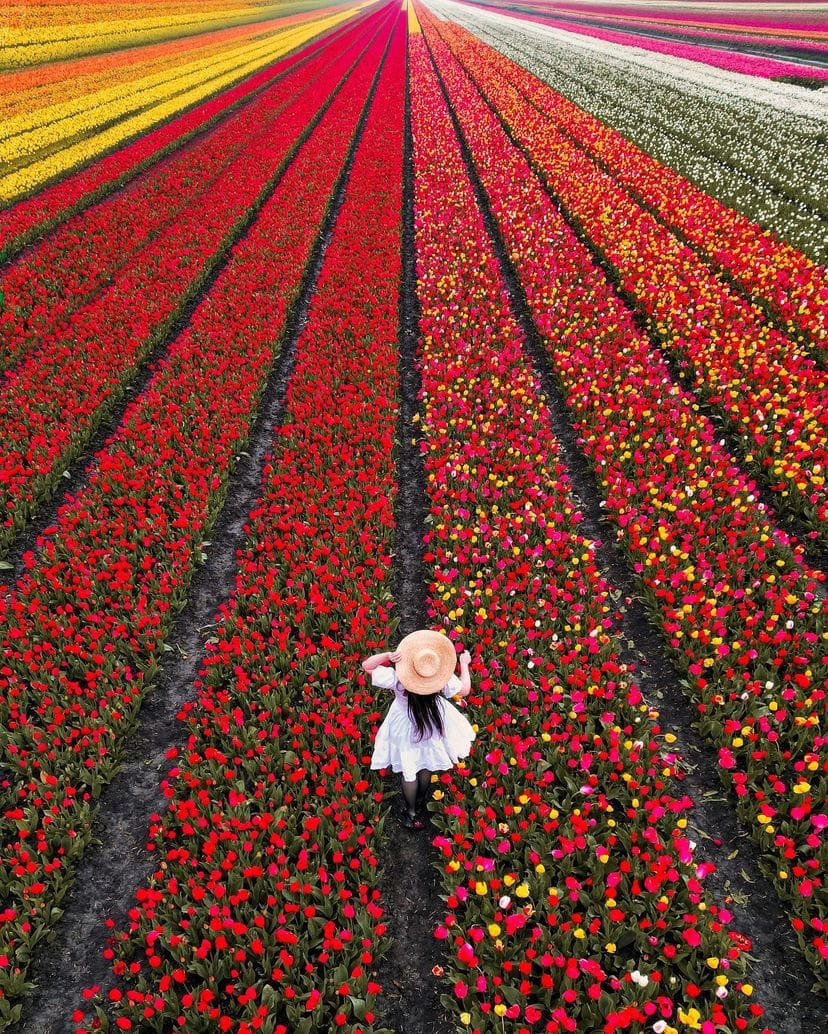
Pro Tips for the Tulip Enthusiast:
- Bike it Out: The best way to experience Lisse's tulip fields is on two wheels. Rent a bike and glide through the floral avenues for an up-close encounter with the tulips.
- Sunrise and Sunset: For photographers, these golden hours transform the fields into a magical landscape. Plus, you'll avoid the midday crowds.
- Local Insight: Stop by local cafés and shops to get insider tips on the best fields to visit. The locals always know the hidden gems.
Cycling through the tulip fields of Lisse is an iconic Dutch experience. With paths winding through endless blooms, it's a journey that embodies the spirit of spring in the Netherlands.
4. Hortus Bulborum, Limmen
A Living Tulip Museum
Venture a bit further to Limmen, and you'll discover Hortus Bulborum, a garden with a twist. This isn't your typical flower garden but a genetic conservatory dedicated to preserving rare and historic bulb varieties. With tulips that date back to the 16th century, Hortus Bulborum offers a fascinating glimpse into the tulip's journey through time.
Why You Can't Miss It: For the tulip enthusiast with a love for history, Hortus Bulborum is a treasure trove. It's a chance to see tulip varieties that are no longer commercially grown, each with its own story.
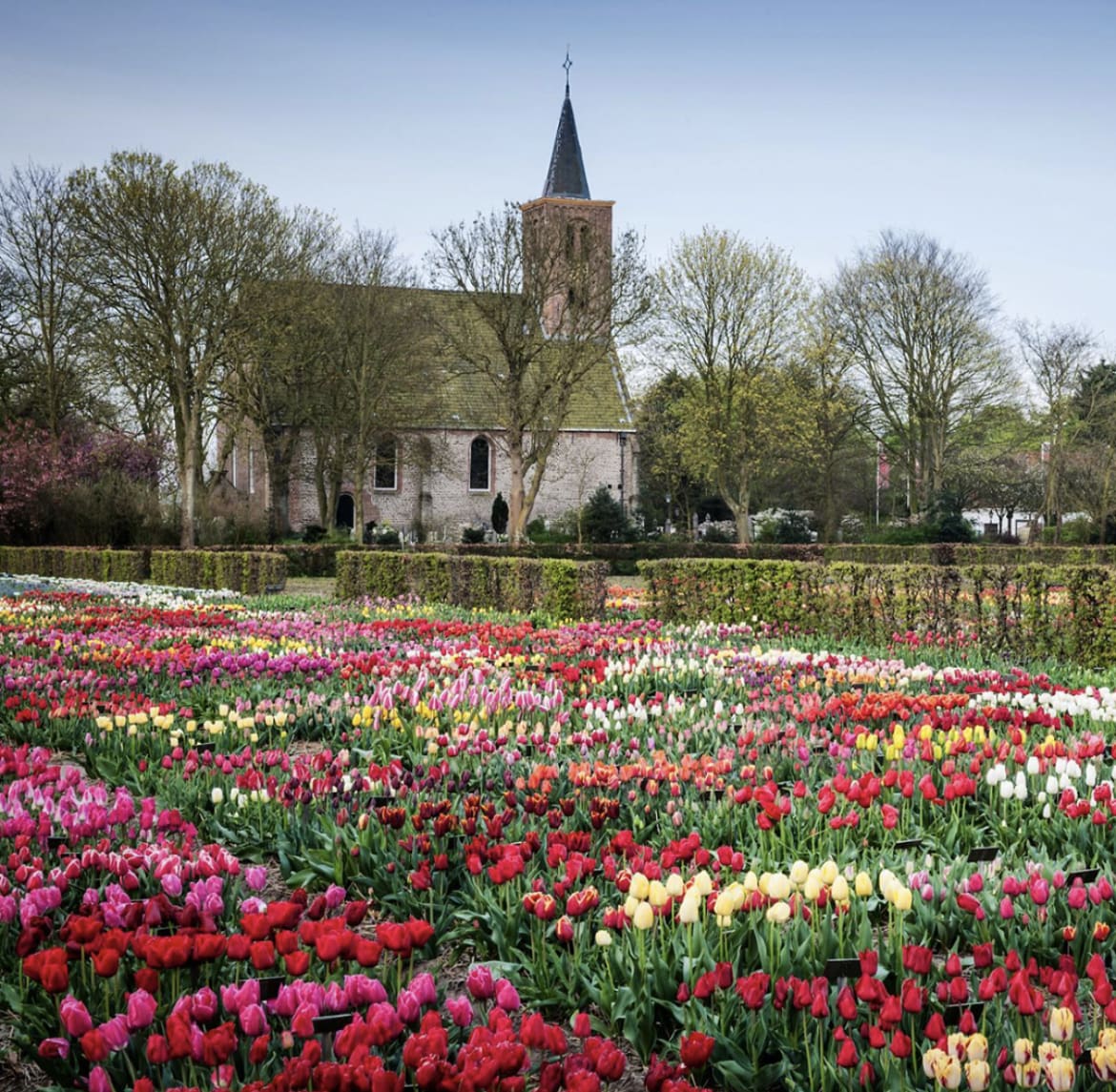
Pro Tips for the Tulip Enthusiast:
- Plan Your Visit: Open only during the spring, check the garden's schedule before you go. The collection is at its best in April.
- Guided Tours: Opt for a guided tour to enrich your visit with stories and insights into the garden's rare specimens.
- Photography Must: The unique varieties make for extraordinary photos, capturing the diversity of tulips beyond the common selections.
Hortus Bulborum Limmen stands as a testament to the tulip's rich heritage. It's a unique destination that offers more than just beauty—it offers a lesson in the bloom's vibrant history.
5. Flower Strip (Bollenstreek)
A Blossoming Route
Between Haarlem and Leiden lies the Flower Strip, or Bollenstreek, a region that turns into a living rainbow each spring. This area is renowned for its sweeping flower fields, with tulips taking the lead in a spectacle of color and scent. The Flower Strip offers a scenic route that's as enchanting by bike as it is by car.
Why You Can't Miss It: The Flower Strip provides an unparalleled opportunity to witness the diversity of the Netherlands' bulb-growing industry. It's a vibrant corridor that connects various tulip gardens and fields, showcasing the flower in all its glory.
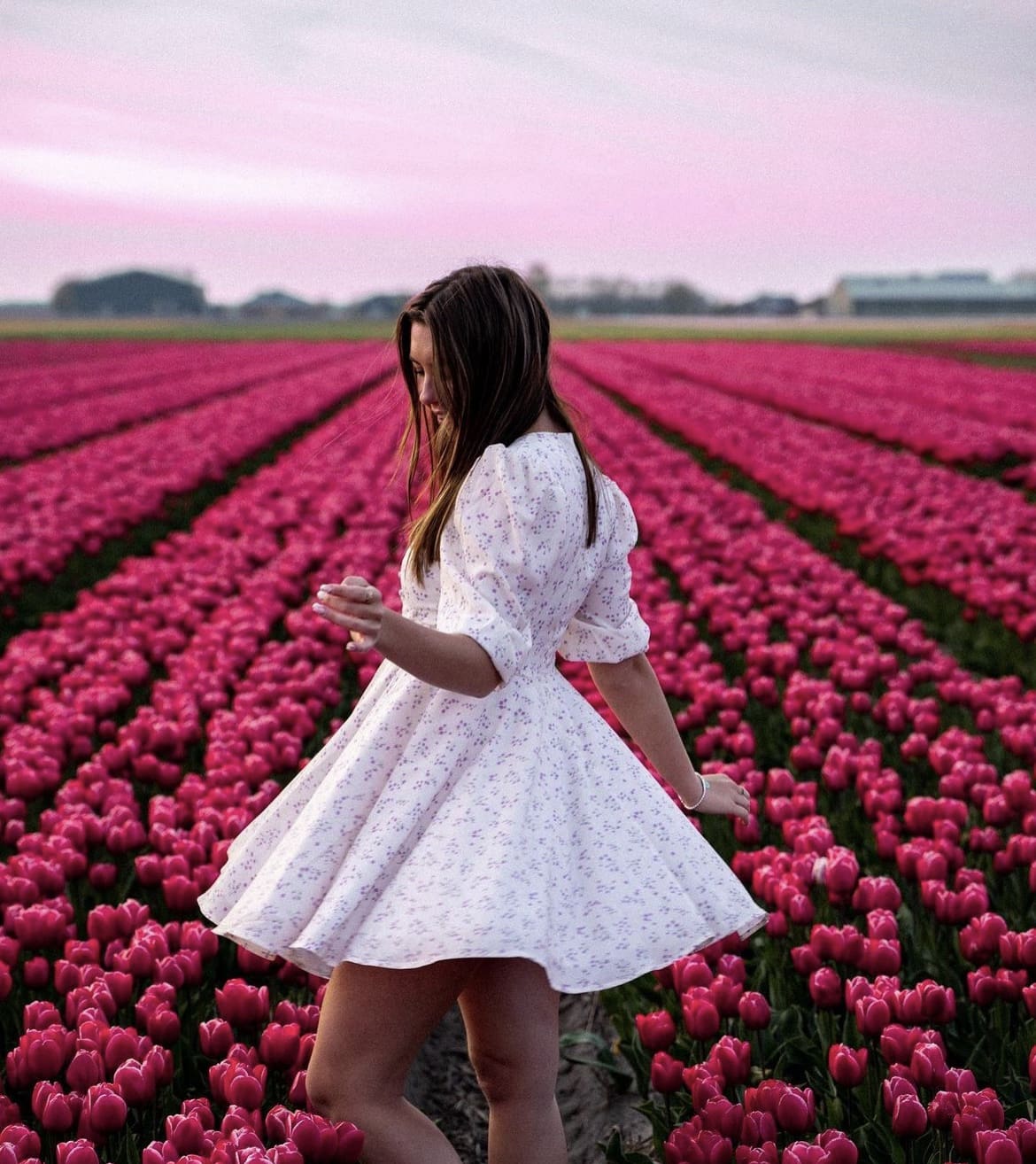
Pro Tips for the Tulip Enthusiast:
- Scenic Routes: Whether you choose to drive or cycle, follow the marked Flower Route for the most stunning displays. The route is well-signposted and takes you through the heart of tulip country.
- Timing is Key: Visit from late March to mid-May, but for the peak tulip bloom, aim for mid-April. This is when the Flower Strip is at its most vibrant.
- Local Festivals: Keep an eye out for flower parades and tulip festivals along the Bollenstreek. These events add a cultural flavor to your floral adventure.
The Flower Strip Bollenstreek is your road to floral paradise. It's a journey that intertwines natural beauty with the art of tulip cultivation, offering endless opportunities for discovery and enchantment.
6. Amsterdam Tulip Museum
A Cultural Bloom
While exploring the tulip fields offers a feast for the senses, delving into the history and impact of this flower on Dutch culture provides depth to your experience. The Amsterdam Tulip Museum, located in the heart of the Jordaan district, is a compact yet comprehensive homage to the tulip's journey through Dutch history.
Why You Can't Miss It: This museum presents a fascinating narrative, from the tulip's wild origins to its role in the economy and art. It's a story that adds layers to your understanding and appreciation of the tulips you've been admiring in the fields.
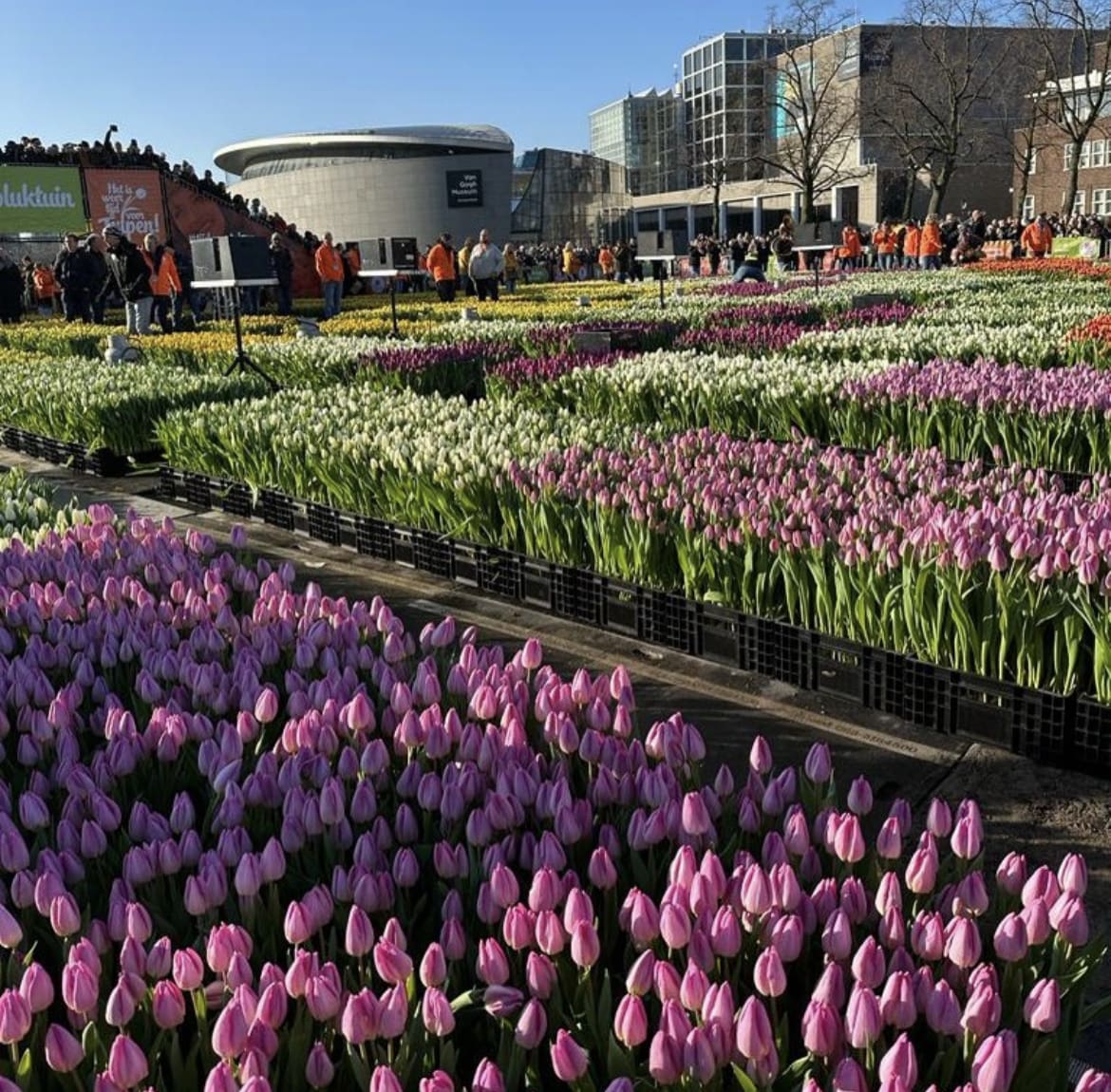
Pro Tips for the Tulip Enthusiast:
- Combine with a Canal Walk: The museum's location is ideal for pairing your visit with a stroll along Amsterdam's picturesque canals. It's a perfect blend of culture and relaxation.
- Shop for Tulip Bulbs: The museum shop offers a selection of tulip bulbs that can be legally transported abroad. Bring a piece of your Dutch adventure home with you.
- Check for Exhibits: The museum occasionally hosts special exhibits. Check their schedule in advance to catch these insightful displays.
The Amsterdam Tulip Museum not only educates but also inspires. It's a crucial stop for anyone looking to fully grasp the tulip's role in shaping Dutch identity and landscape.
7. Noordwijkerhout
A Village Embraced by Tulips
Nestled in the heart of the Bollenstreek, Noordwijkerhout offers a picturesque setting that seems to have sprung from a painting. This village is surrounded by some of the most spectacular tulip fields in the Netherlands, making it a prime location for those seeking the quintessential Dutch spring experience.
Why You Can't Miss It: Beyond its charm, Noordwijkerhout serves as a perfect starting point for exploring the surrounding tulip fields. It's a quieter alternative to the more crowded spots, allowing for a more intimate experience with the flowers.
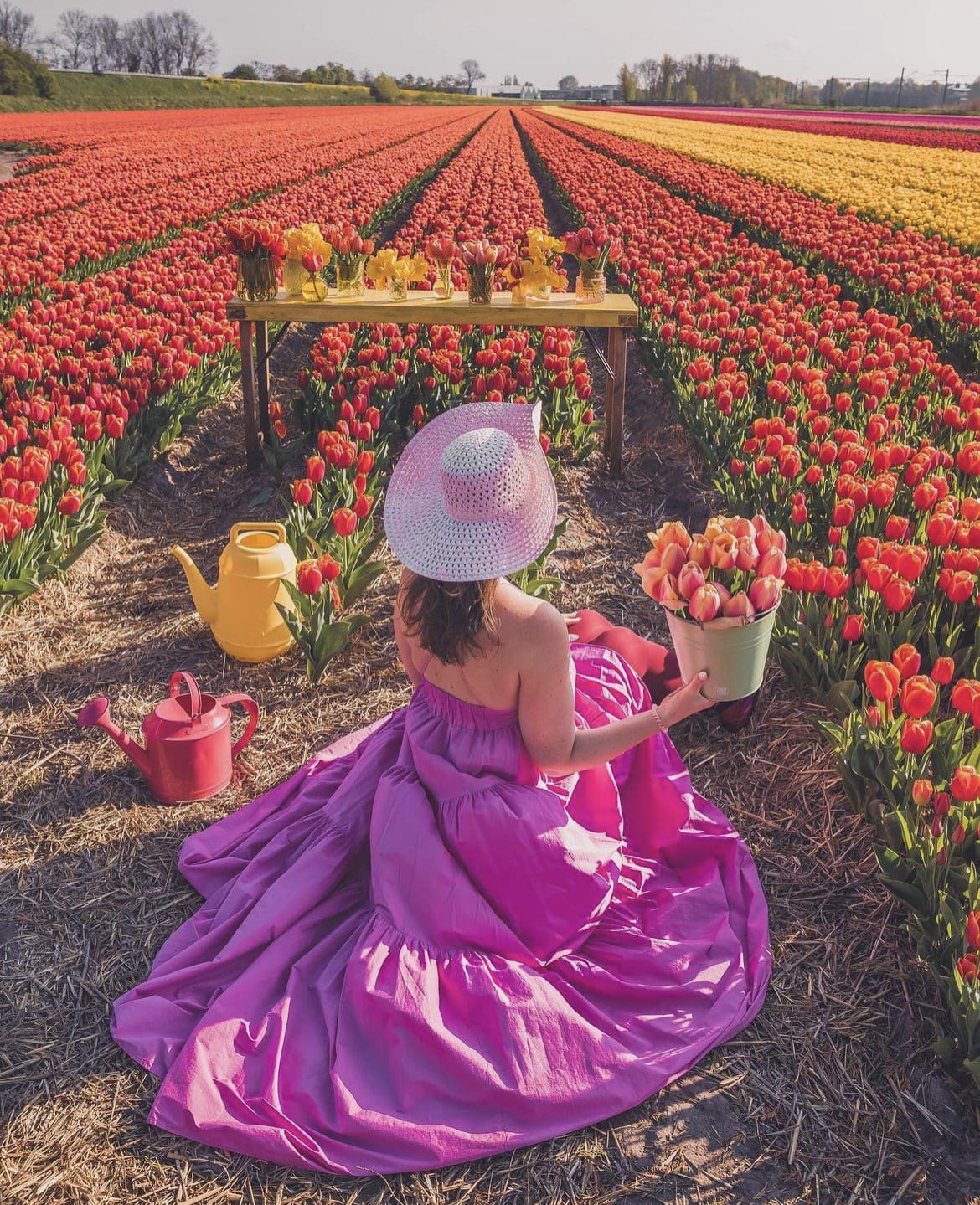
Pro Tips for the Tulip Enthusiast:
- Stay Local: Consider booking a stay in Noordwijkerhout to fully immerse yourself in the tulip-filled landscape. Waking up to a view of tulip fields is an experience unto itself.
- Bike Tours: Many local businesses offer bike tours that take you through the best fields. It's an eco-friendly way to enjoy the beauty around.
- Festival Fun: If your visit coincides with the local tulip festival, don't miss it. These festivals often feature parades, markets, and a lot of local color.
Noordwijkerhout tulip fields are a hidden gem in the Netherlands' floral crown. They offer a serene backdrop to your tulip adventures, away from the hustle and bustle.
8. Haarlem
Tulips Amidst Historical Elegance
A short train ride from Amsterdam, Haarlem blooms into a vibrant display of tulips each spring, especially within its historic Hofjes. These almshouses, built around tranquil courtyards, become secret gardens of sorts, adorned with tulips and other spring flowers.
Why You Can't Miss It: Haarlem combines floral beauty with architectural grace. The city offers a unique setting to enjoy tulips, where they complement the historical context and add a splash of color to the ancient brick and stone.
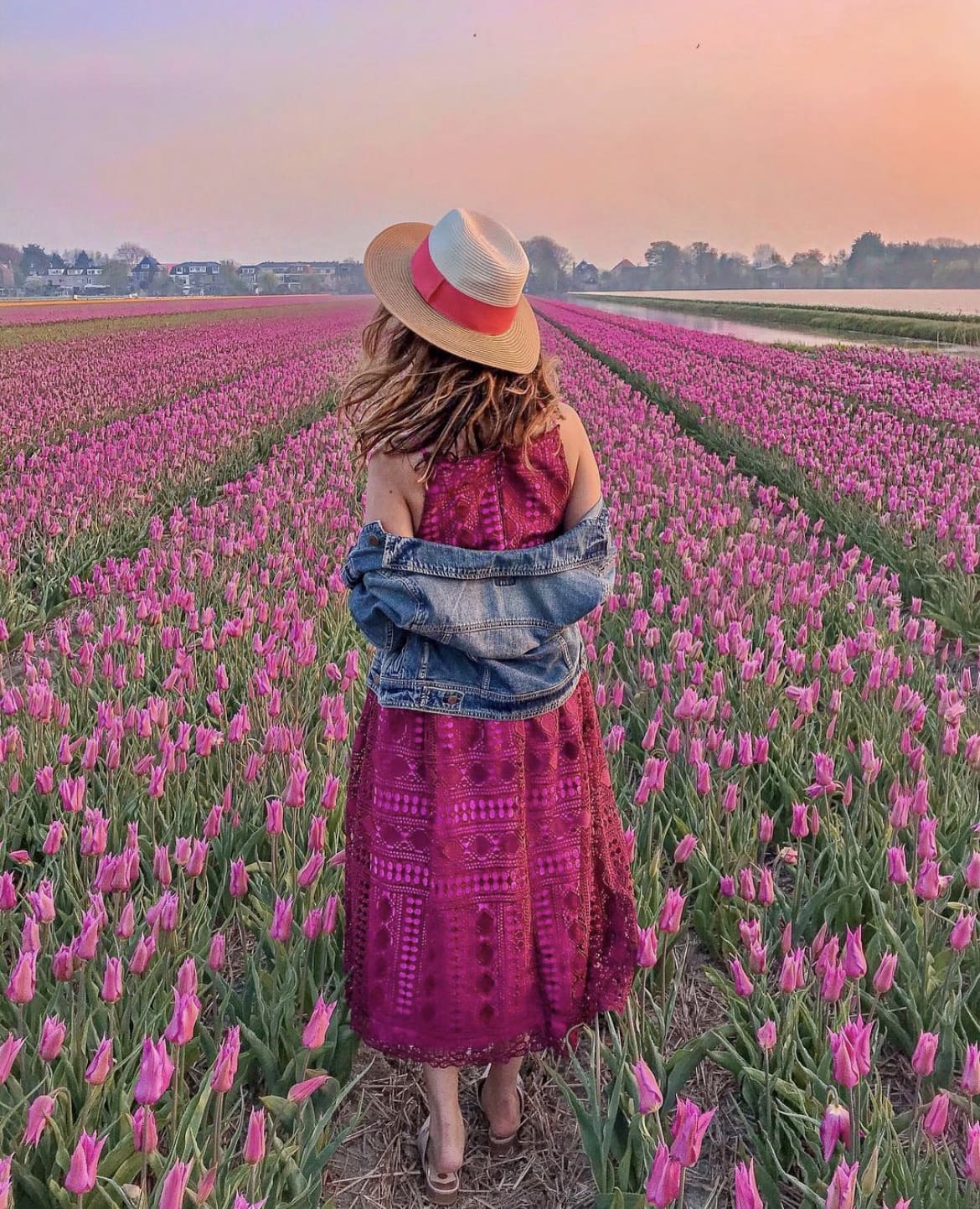
Pro Tips for the Tulip Enthusiast:
- Hofjes Exploration: Many Hofjes are open to the public. Take a self-guided tour to discover these peaceful courtyards and their blooming gardens.
- Enjoy the Cultural Scene: Haarlem is known for its museums and art galleries. Pair your tulip viewing with a visit to the Frans Hals Museum or the Teylers Museum for a full cultural immersion.
- Culinary Delights: After a day of tulip admiration, indulge in Haarlem's culinary scene. The city boasts several Michelin-starred restaurants and cozy cafes perfect for reflecting on the day's beauty.
Haarlem tulip gardens offer a blend of floral splendor and historical charm. It's an exquisite setting for those looking to enrich their tulip season with a touch of cultural depth.
9. Amstelveen Tulip Route
Suburban Blooms and Urban Escapes
Just a stone's throw away from the bustling city life of Amsterdam, Amstelveen offers a breath of fresh air with its annual Tulip Route. During spring, this suburb transforms into a floral spectacle, with designated paths leading enthusiasts through parks, residential areas, and open spaces adorned with a variety of tulips.
Why You Can't Miss It: The Amstelveen Tulip Route is a testament to the tulip's integration into daily Dutch life, showcasing how beauty and urban living coexist. It offers a different perspective, one that combines the charm of suburban tulip viewing with the convenience of urban accessibility.
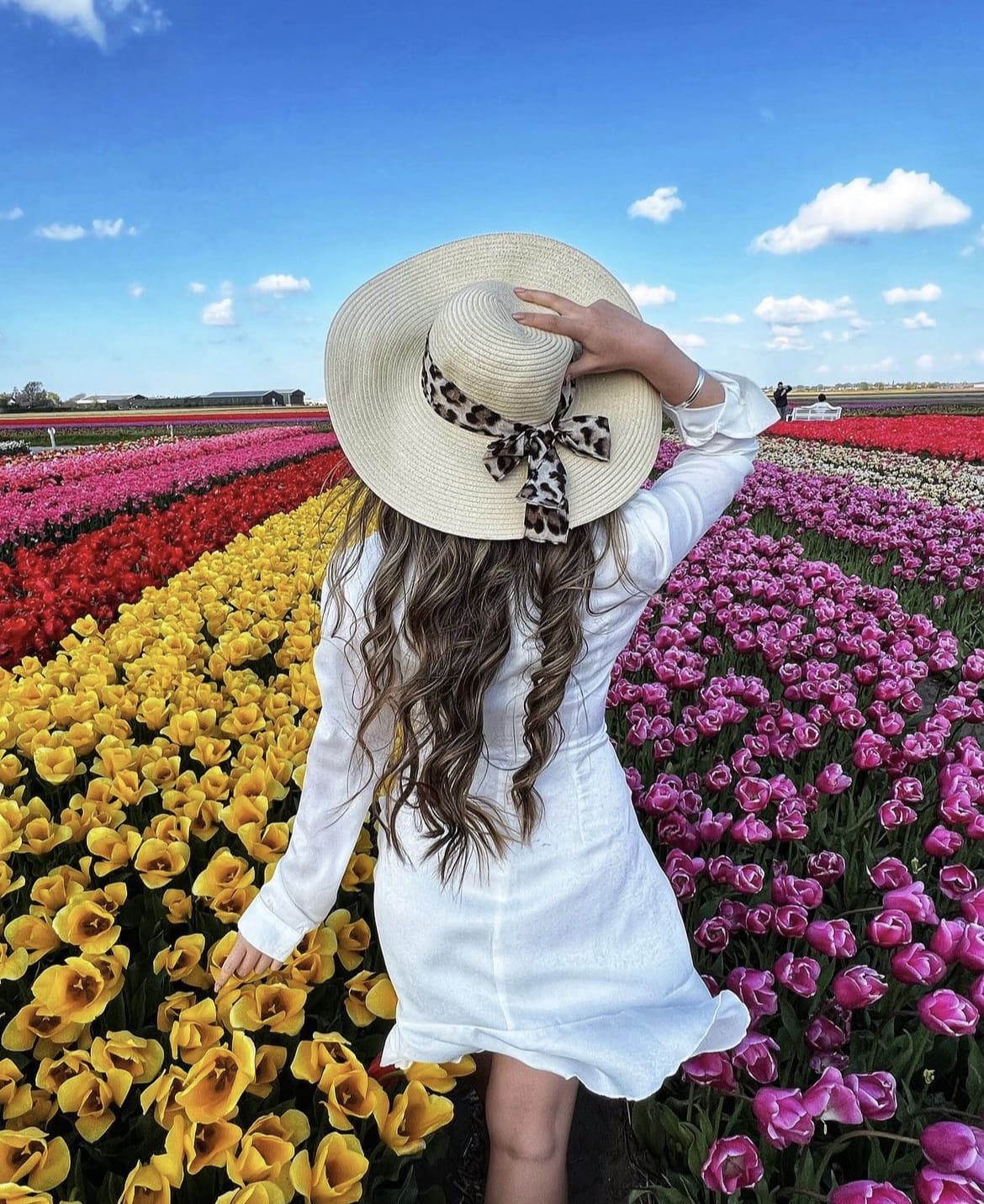
Pro Tips for the Tulip Enthusiast:
- Download the Route Map: Before you head out, make sure to download or pick up a map of the Tulip Route. It’s updated annually to highlight the best viewing spots.
- Picnic Among the Petals: Several parks along the route are perfect for a tulip-side picnic. Pack a lunch and enjoy the colors of spring in a relaxed setting.
- Photography Friendly: The diversity of settings along the route provides unique backdrops for photographers. Capture tulips framed by modern architecture, serene ponds, and family gardens.
The Amstelveen Tulip Route is a modern twist on the traditional tulip experience. It’s perfect for those looking to blend a floral expedition with the amenities of city life.
10. Vondelpark, Amsterdam
An Urban Oasis of Tulips
Amsterdam's largest and most famous park, Vondelpark, becomes a canvas of color each spring. While the park is a year-round destination for both locals and tourists, the tulip season adds a special allure, with beds of meticulously planted tulips blooming in harmony with the park's natural landscape.
Why You Can't Miss It: Vondelpark offers the unique opportunity to enjoy tulips within the urban context of Amsterdam. It's a lively hub of activity where the beauty of spring flowers can be appreciated amidst the backdrop of the city's vibrant life.
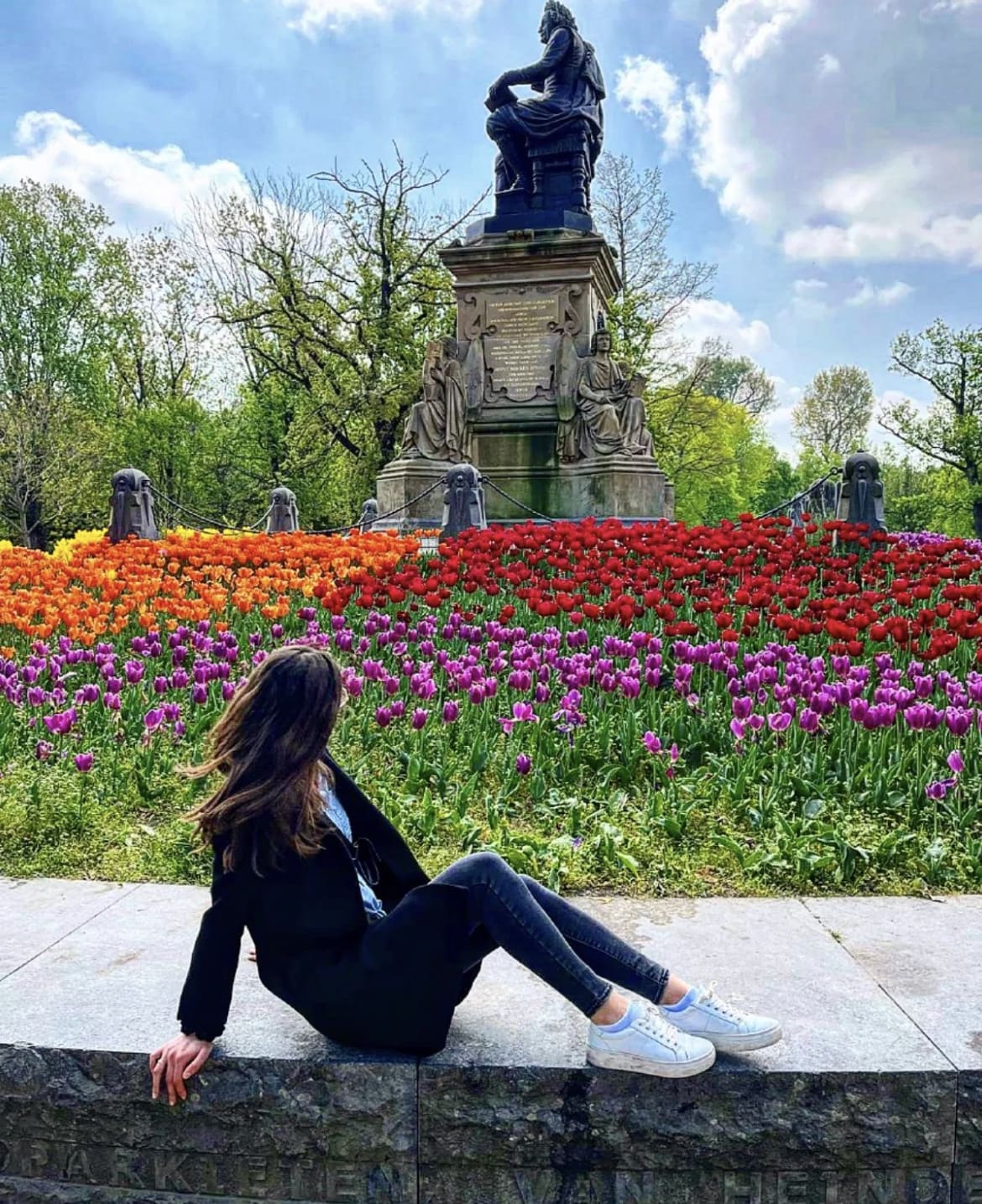
Pro Tips for the Tulip Enthusiast:
- Morning Walks: For a tranquil tulip experience, visit Vondelpark early in the morning. You’ll avoid the crowds and catch the soft morning light, which illuminates the tulips beautifully.
- Combine with Cultural Visits: Surrounding Vondelpark are some of Amsterdam's top museums. Plan your day to include both tulip viewing in the park and a visit to nearby cultural institutions like the Van Gogh Museum or the Rijksmuseum.
- Bike or Stroll: Take advantage of the park's extensive paths to either bike or stroll through the tulip displays. It’s a perfect way to see the variety of colors and species planted in the park.
Vondelpark Amsterdam tulips present a picturesque slice of Dutch spring, right in the heart of the city. It's an ideal spot for those who wish to combine the leisure of tulip viewing with the dynamic atmosphere of Amsterdam.
Additional Tips for Your Tulip Tour
Embarking on a tulip tour through the Netherlands is an adventure that calls for some planning and insider knowledge. Here are a few additional tips to make your experience as vibrant and smooth as possible:
- Best Time to Visit: Timing your visit is crucial. Although tulip season can start as early as late March, the prime time to see the fields at their most colorful is from mid-April to early May.
- Respect the Flowers: Remember, the tulip fields are often on private farmland. Enjoy the view from the paths and don't trespass or pick the tulips. Keep the beauty intact for everyone to enjoy.
- Weather Check: Dutch weather can be unpredictable. Dress in layers and be prepared for sudden showers. A sunny day can quickly turn cloudy (and vice versa), enhancing the tulip viewing experience in unique ways.
- Getting Around: Renting a bike is an authentic Dutch way to explore the tulip areas, but if cycling isn't your thing, consider renting a car or using public transport for longer distances.
- Stay Hydrated: With all the walking and biking through the fields, it's easy to get dehydrated. Carry water with you, especially on sunny days.
- Local Delights: Don't miss out on the local cuisine. The Netherlands offers more than just cheese and herring. Explore local bakeries, cafés, and restaurants for some culinary surprises.
- Souvenir Tulips: Want to take a piece of the Netherlands home? Many places sell tulip bulbs that are ready for export. Just make sure they are certified for international travel to avoid any customs issues.
As our tulip tour comes to a close, it's clear that the beauty of these blooms is more than just visual; it's a journey through history, culture, and the breathtaking landscapes of the Netherlands. Whether you're wandering through the expansive fields of Keukenhof, cycling the picturesque routes of Lisse, or exploring the urban tulip spots in Amsterdam, the experience is sure to leave an indelible mark on your heart.
The tulip season is a fleeting marvel, a reminder to seize the moment and embrace the beauty that nature offers. It's a time for renewal, celebration, and, above all, appreciation for the simple yet profound joy that flowers can bring into our lives. So, when you visit the Netherlands during this magical time, let the tulips guide you through a world of color, tradition, and wonder. Who knows? You might just find yourself returning year after year, chasing the endless bloom of the Dutch spring.
And remember, each tulip has its own story, as does every traveler. What will yours be?
The Most Exclusive Rooftop Bars in London, UK
April 4, 2024
Imagine this: the sun dips below the horizon, painting the London skyline in hues of fiery orange and soft pinks. Iconic structures like The Shard, the London Eye, and the Gherkin stand silhouetted against the twilight, each light flickering to life like stars being born. This isn't just another evening in London; it's a prelude to an unforgettable night above the city's bustling streets, on the exclusive decks of the most coveted rooftop bars.
Rooftop bars in London are more than mere drinking spots. They are sky-high sanctuaries where the vibrancy of the city meets the tranquility of the clouds. This guide is your golden ticket to the crème de la crème of London’s rooftop experiences, where the cocktails are as mesmerizing as the views.
Why Rooftop Bars?
Rooftop bars possess a certain je ne sais quoi that ground-level establishments can hardly match. Is it the panoramic views that give drinkers a sense of freedom and elevation beyond the physical? Or is it the exclusive atmosphere, where the hustle and bustle of the city seem distant, yet simultaneously beneath your feet?
The allure lies in the blend of open skies, innovative mixology, and the pulse of music that resonates with the heartbeat of London itself. From the London skyline bars that offer an eagle-eye view of the city’s architectural marvels to "exclusive rooftop bars London" that serve up luxury in every sip, these elevated havens are about more than just altitude. They're about an attitude—a declaration of love for nights filled with starry skies, spirited conversations, and clinking glasses.
The Ultimate List of London’s Most Exclusive Rooftop Bars
Let's take you on a tour of the most exclusive, must-visit rooftop bars in London. Each offers not just a drink, but a dive into a unique atmosphere that can only be described as, well, elevated.
1. Radio Rooftop Bar
Perched on the 10th floor of the ME London hotel, Radio Rooftop Bar offers panoramic views that sweep from the Strand over the Thames to the Shard. It's a hotspot for fashion-forward crowds and the occasional celebrity sighting.
What to Drink: Try the 'Radioactive Sunset'—a cocktail that blends the fiery colors of dusk with a tangy twist.
Insider Tip: The magic hour just as the sun sets is when this place truly shines. Arrive early to snag the best spot.
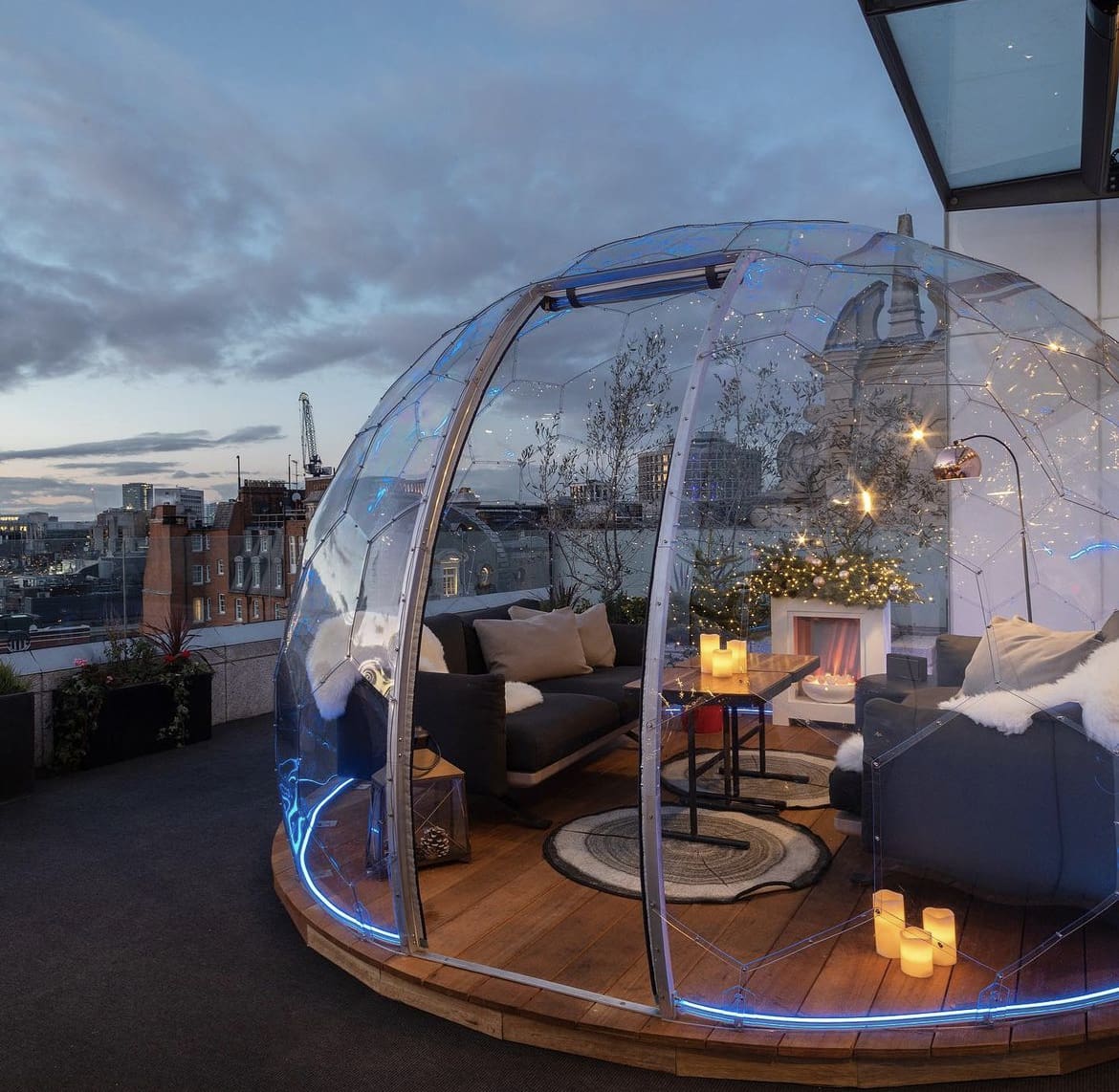
2. Sushisamba
Hovering on the 38th and 39th floors of the Salesforce Tower, Sushisamba serves up a unique blend of Japanese, Brazilian, and Peruvian cuisine. The views are as spectacular as the fusion flavors, with London laid out like a neon-lit feast below.
What to Eat: Don't leave without trying the Samba London Roll, a sushi creation that's as visually stunning as it is delicious.
Insider Tip: Reservations are a must, especially if you're aiming for a window seat. Book well in advance to avoid disappointment.
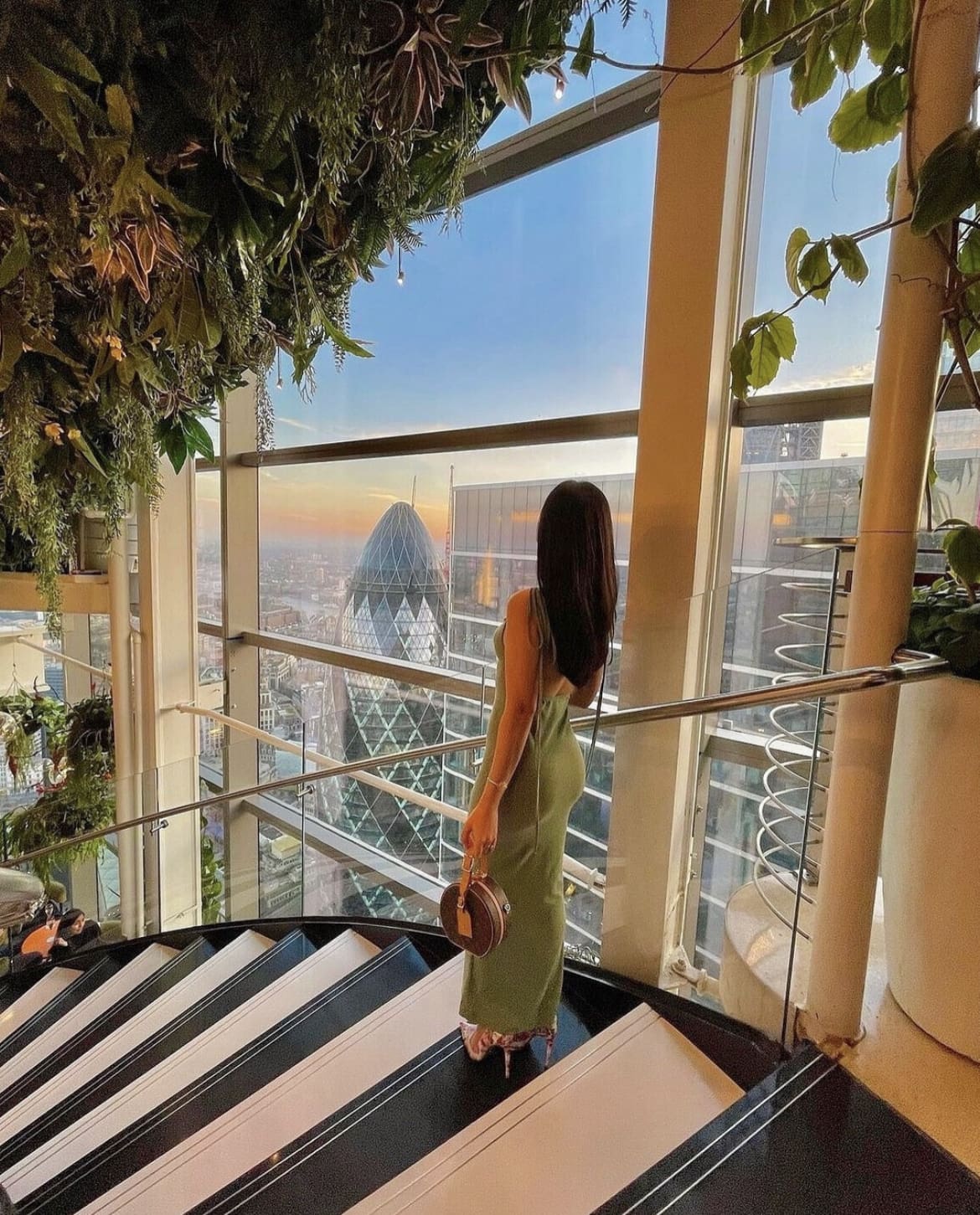
3. The Rooftop St. James
With an unobstructed view over Trafalgar Square, The Rooftop St. James is an epitome of sophistication in the sky. It's where classic cocktails meet modern innovation, all wrapped up in a chic, inviting atmosphere. This is the spot to soak in iconic London sights while indulging in some of the city’s finest drinks.
What to Drink: The 'Trafalgar Tea' is a must-try—a refreshing blend that pays homage to the area's rich history, with a twist that's as contemporary as the bar's stylish decor.
Insider Tip: The Rooftop St. James can get quite breezy, even on a summer evening. They provide blankets, but it’s wise to bring an extra layer to ensure you stay cozy as you sip and sightsee.

4. Savage Garden
Perched atop the DoubleTree by Hilton Hotel London, Savage Garden is a place of contrasts. Its wild, edgy interior design, with touches of the untamed and the mystical, makes it a unique find in the city’s rooftop scene. Here, the cocktails are as bold and innovative as the décor, making it a hit among those looking to venture beyond the classic bar experience.
What to Drink: Dive into the 'Savage Heart'—a cocktail that's as fierce as the bar's name suggests, with a mix of flavors that’s both surprising and satisfying.
Insider Tip: Savage Garden is known for its themed nights and special events. Check their schedule in advance to align your visit with an evening that might offer live music, DJ sets, or a unique cocktail menu.
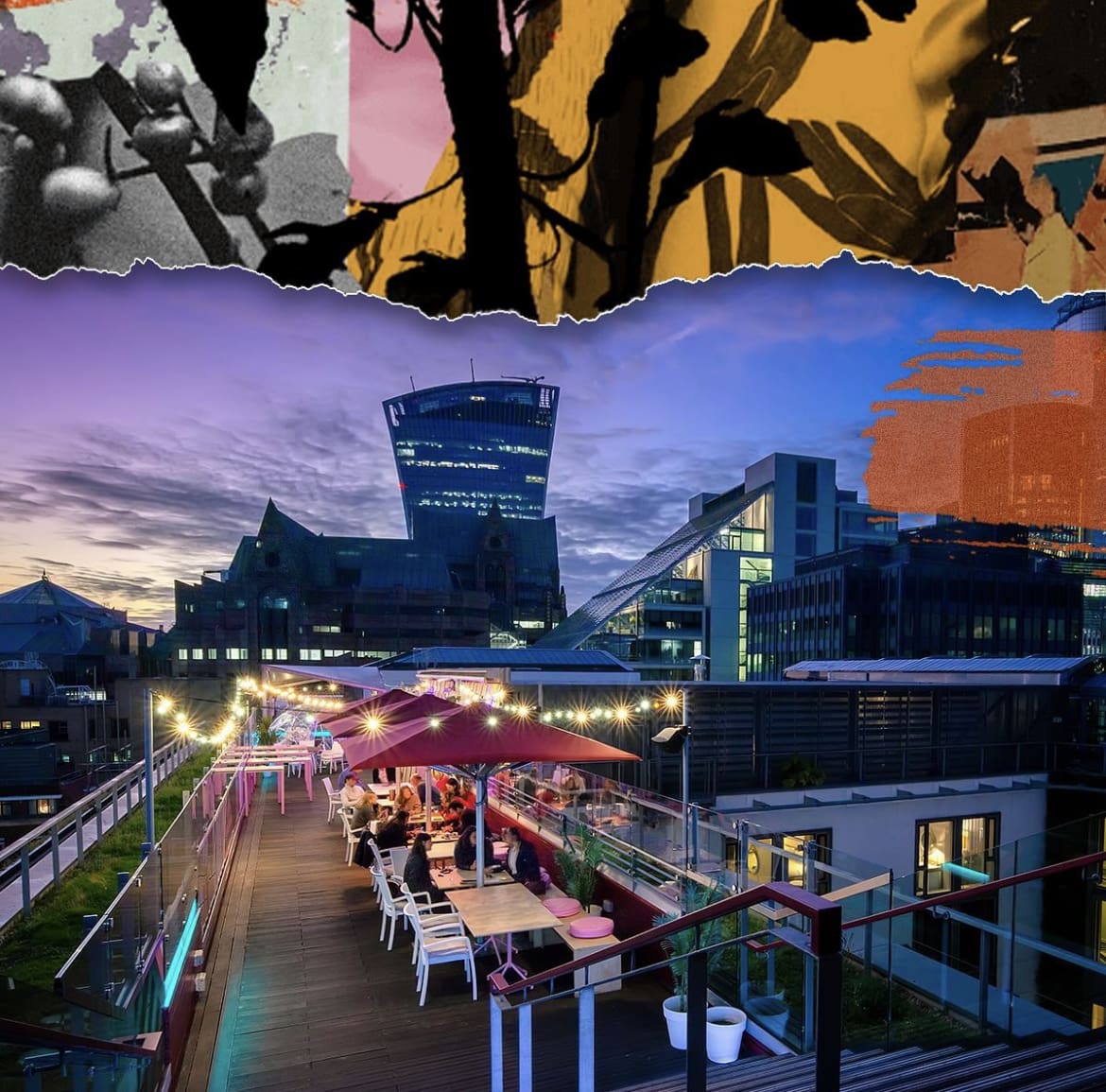
5. 12th Knot
This vibrant spot on the South Bank boasts not just eclectic decor but some of the most mesmerizing views of the River Thames. The atmosphere here is electric, making it a perfect backdrop for those Instagram-worthy moments. The 12th Knot seamlessly blends the casual with the sophisticated, inviting guests to unwind and revel in the urban chic vibe.
What to Drink: The signature cocktail, 'Thames Fizz,' offers a bubbly tribute to the river views it overlooks. It's refreshing, with just the right amount of zest.
Insider Tip: The outdoor terrace is fantastic during the summer months, but its popularity means it can get crowded. Arriving early not only guarantees a good spot but also treats you to the spectacle of the city transitioning from day to night.
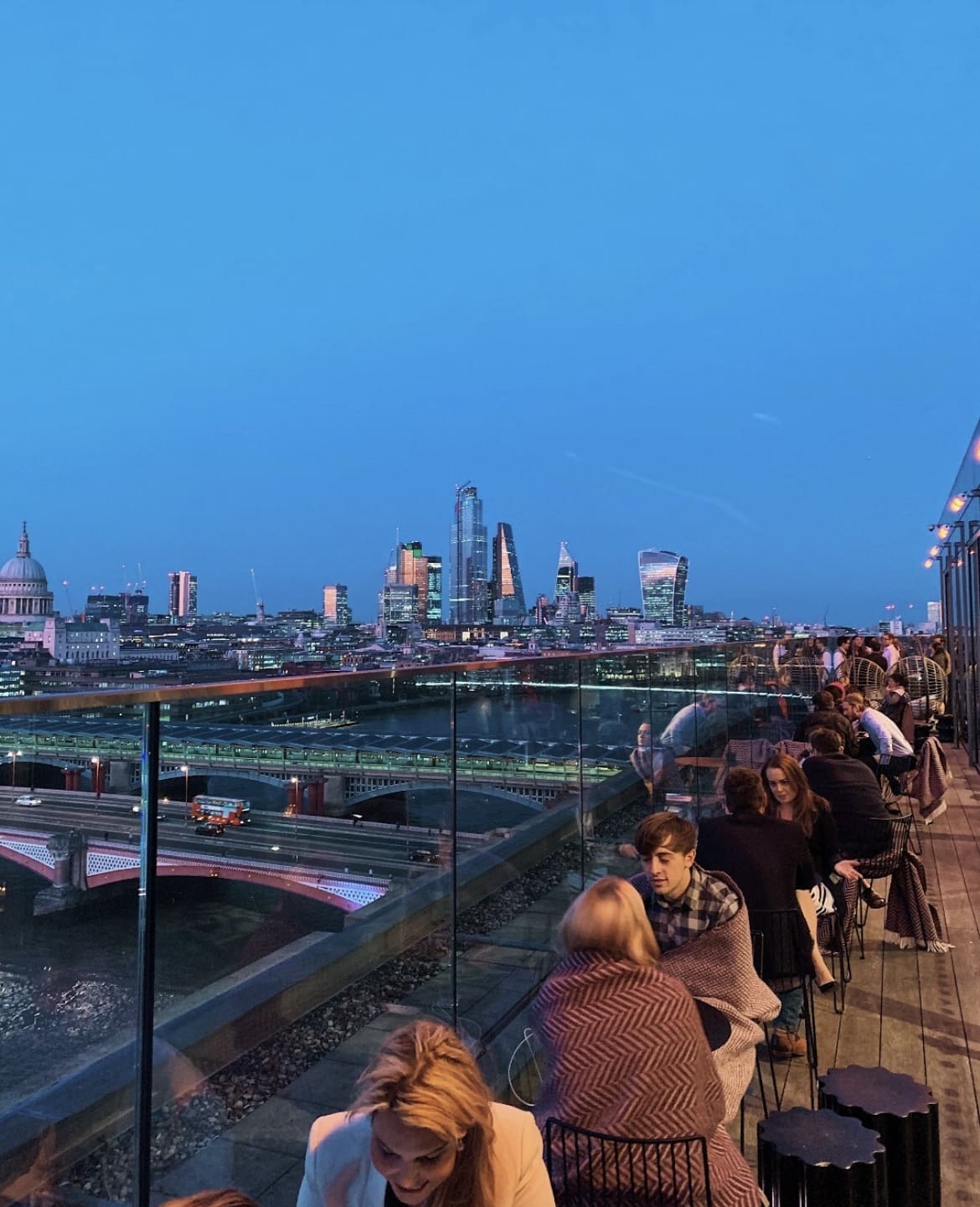
6. Jin Bo Law
Located in Aldgate, Jin Bo Law offers a rooftop experience that is quintessentially London. With a panoramic view that includes The Shard, Tower Bridge, and the Gherkin, it's a place where the city's iconic architecture feels within reach. The interior is sleek and modern, with Asian-inspired design elements that reflect the sophistication of its cocktail menu.
What to Drink: The 'Dragon's Gate' is an exotic mix that pays homage to the bar's Asian influences, combining traditional ingredients with a modern flair.
Insider Tip: Jin Bo Law attracts a fashionable crowd, especially on weekends. Dress to impress and be prepared for a night where luxury and style take center stage.
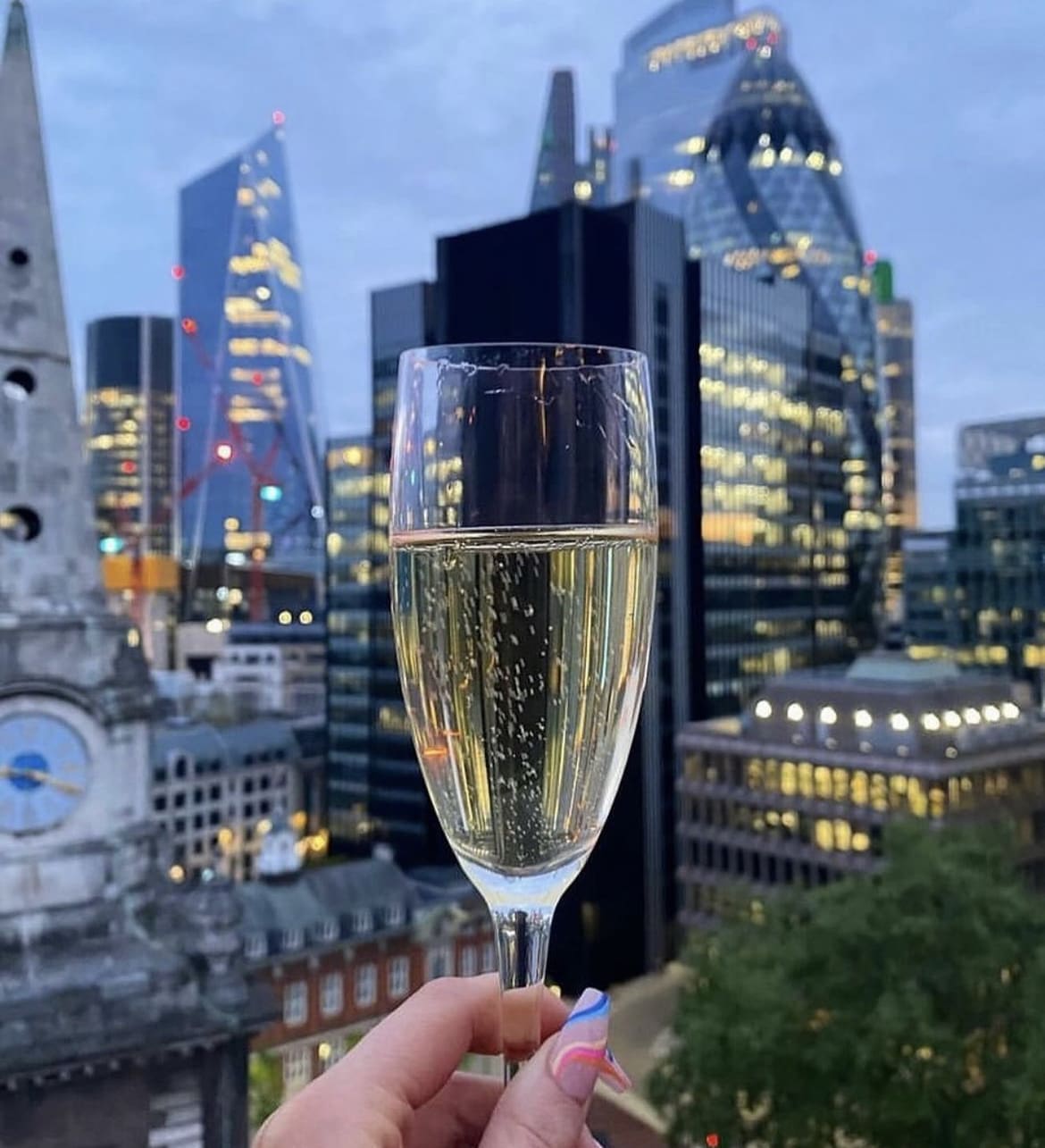
7. The Nest in Treehouse
Nestled in the heart of London, The Nest in Treehouse offers an eco-conscious retreat amidst the urban jungle. Its terraces provide panoramic views of the city skyline, with lush greenery adding a touch of tranquility to the bustling atmosphere. This rooftop oasis combines sustainability with style, inviting guests to sip cocktails while surrounded by nature.
What to Drink: Opt for the 'Green Goddess' cocktail, a refreshing blend of botanical flavors that perfectly complements the verdant surroundings.
Insider Tip: The Nest in Treehouse is popular for its weekend brunches. Make a reservation to secure a spot and indulge in a leisurely mid-morning feast with a view.
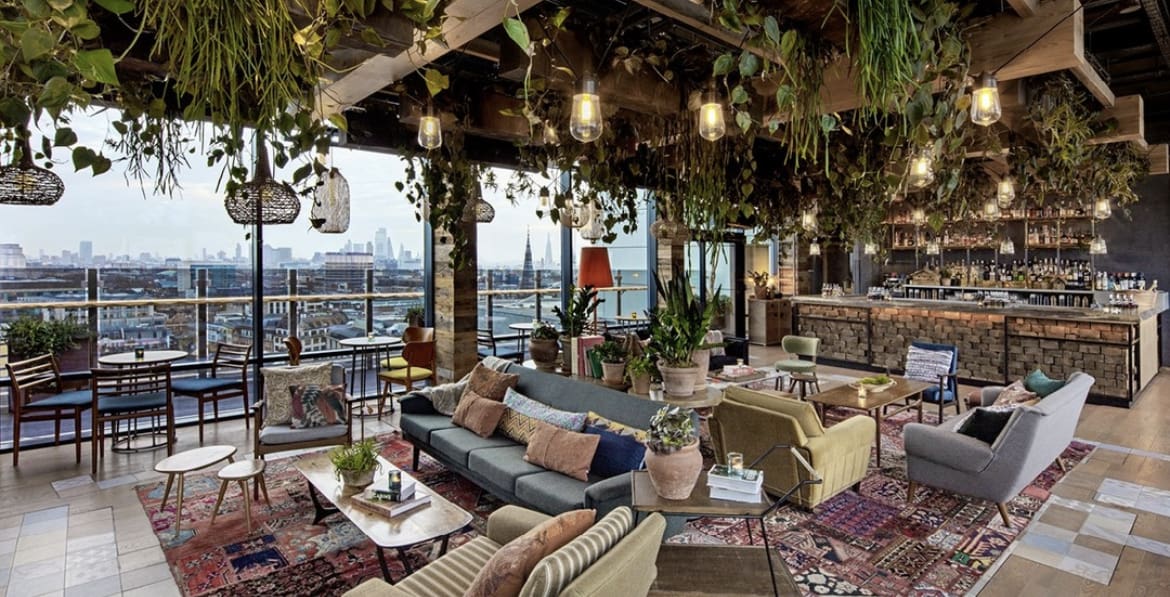
8. Aviary London
Perched on the 10th floor of the Montcalm Royal London House in Finsbury Square, Aviary London offers a luxurious rooftop escape with stunning views of the city skyline. Its spacious outdoor terraces provide the perfect setting for alfresco dining and cocktail sipping, while the contemporary interiors exude elegance and sophistication.
What to Drink: Try the 'Skyline Spritz,' a light and refreshing cocktail that captures the essence of London's skyline with its blend of citrus and botanical notes.
Insider Tip: Aviary London hosts live music performances on select evenings, adding an extra layer of ambiance to your rooftop experience. Check their events calendar for upcoming performances and plan your visit accordingly.
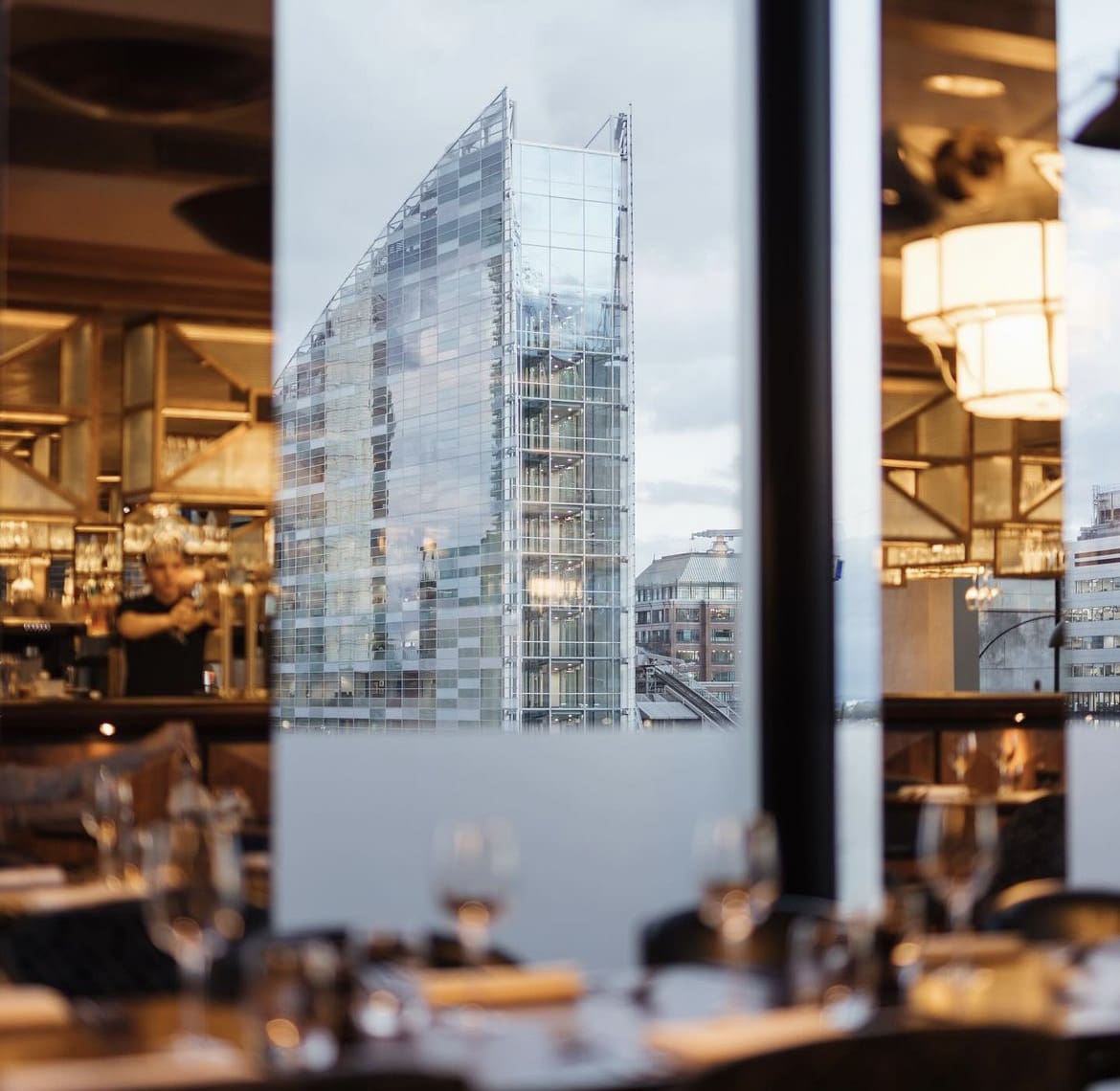
9. Madison
Madison, overlooking St. Paul's Cathedral, is where sophistication meets skyline views. Its expansive terrace offers unparalleled vistas of the iconic dome, while the chic interior provides a stylish setting for sipping cocktails and socializing. Whether you're after a romantic evening or a lively night out with friends, Madison delivers an unforgettable rooftop experience.
What to Drink: The 'St. Paul's Sipper' is a Madison signature, featuring a blend of premium spirits and fruit flavors that perfectly complement the stunning backdrop.
Insider Tip: Arrive early to secure a spot on the terrace and witness the sunset casting a golden glow over the city—an Instagram-worthy moment not to be missed.
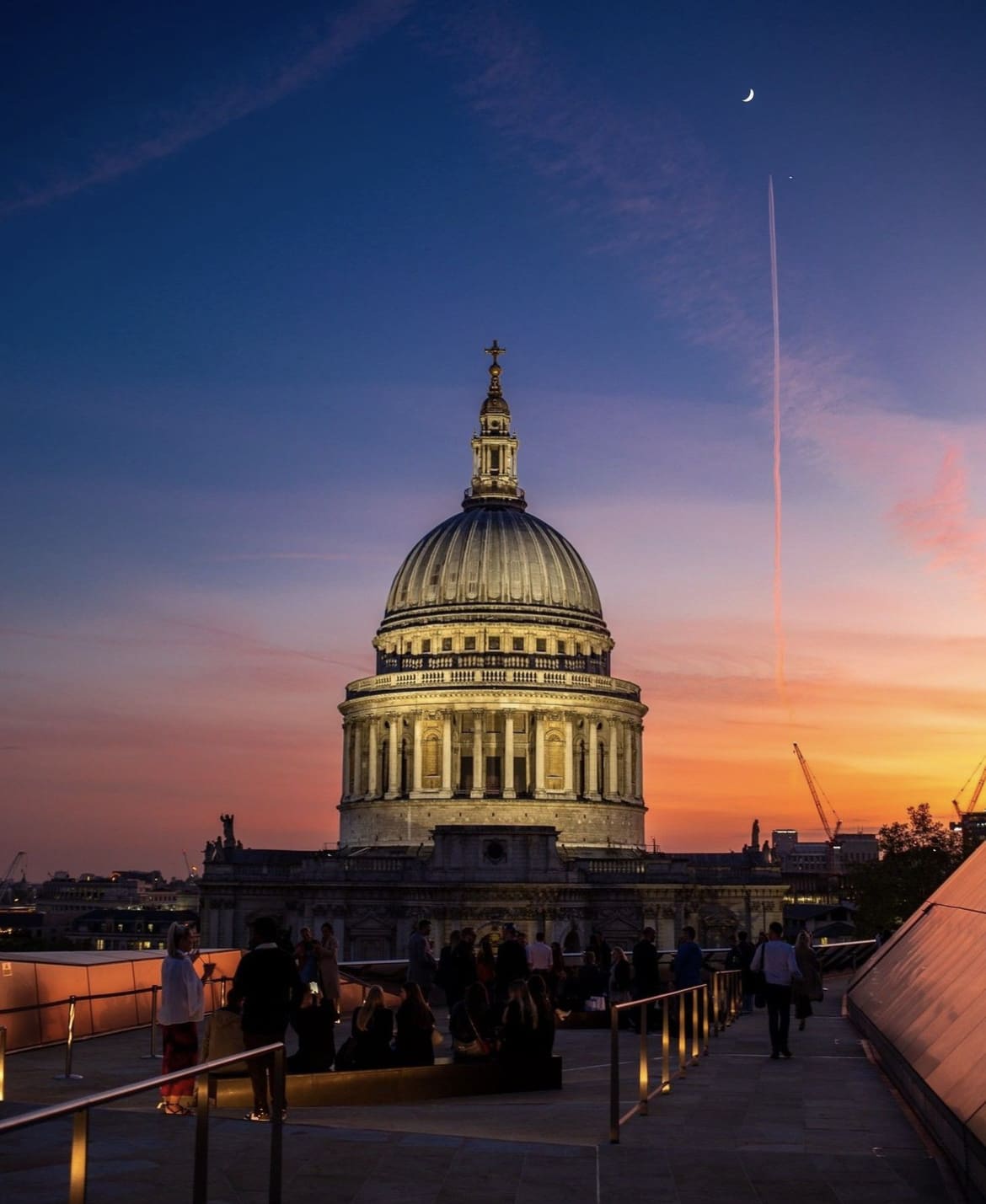
10. Coq d'Argent
Set amidst the architectural marvels of the City of London, Coq d'Argent offers an elevated dining experience in every sense of the word. Its garden setting atop No.1 Poultry provides a serene escape from the hustle and bustle below, while the French-inspired cuisine and extensive wine list ensure a feast for the senses.
What to Drink: Indulge in a glass of champagne or choose from their selection of expertly crafted cocktails to accompany your meal.
Insider Tip: Coq d'Argent is a popular spot for business lunches and special occasions. Make a reservation in advance, especially if you're planning to dine during peak hours.
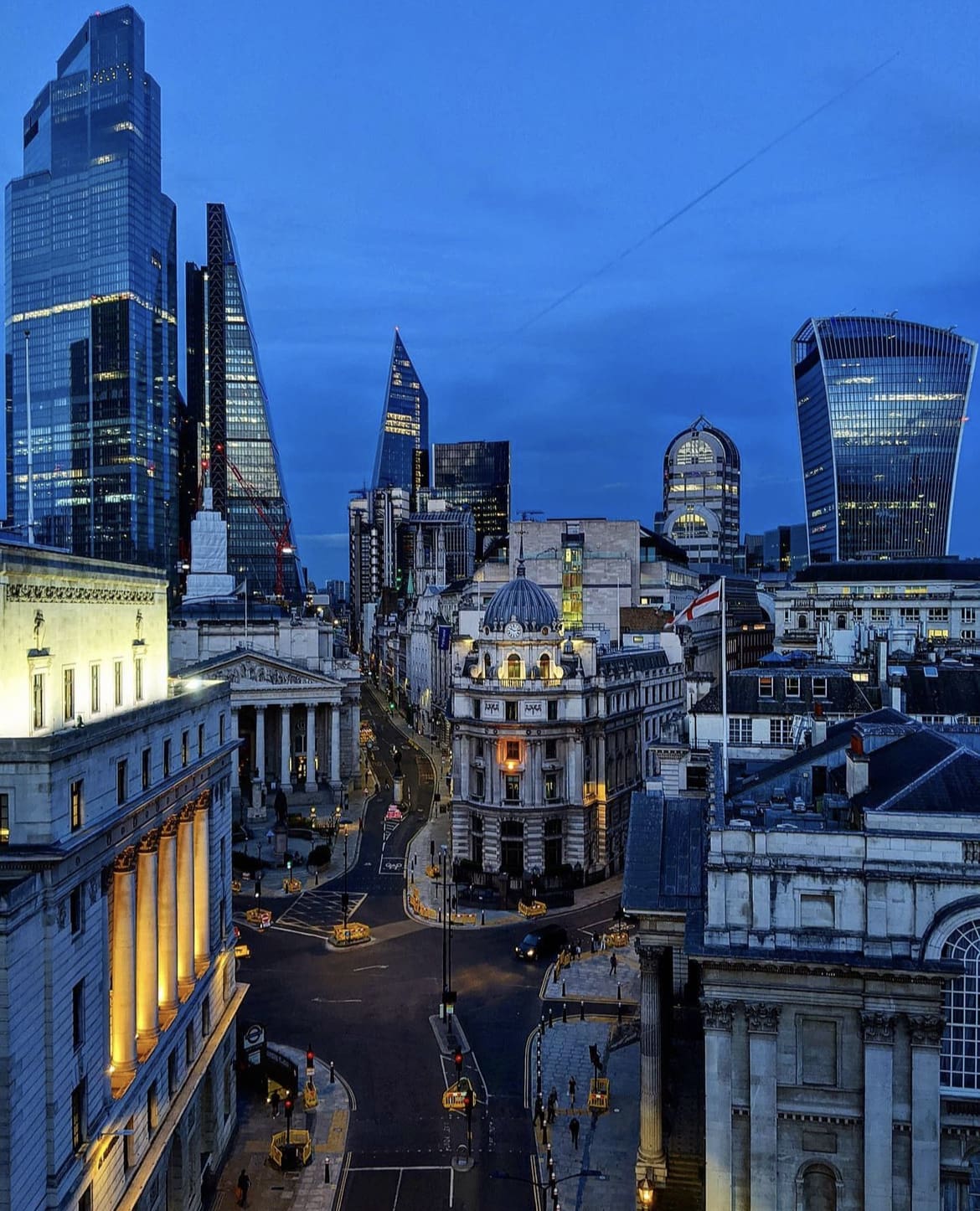
11. Pergola Paddington
Pergola Paddington is an urban oasis nestled in the heart of Paddington Central. Its sprawling rooftop terrace is adorned with lush greenery, creating a vibrant and inviting atmosphere. With a rotating selection of street food vendors and a well-stocked bar, Pergola Paddington offers a relaxed yet lively setting for enjoying delicious bites and refreshing drinks with friends.
What to Drink: Cool off with a 'Pergola Punch,' a fruity and refreshing cocktail that's perfect for sipping in the sun.
Insider Tip: Pergola Paddington can get busy, especially on weekends. Arrive early to secure a table or consider visiting during off-peak hours for a more laid-back experience.
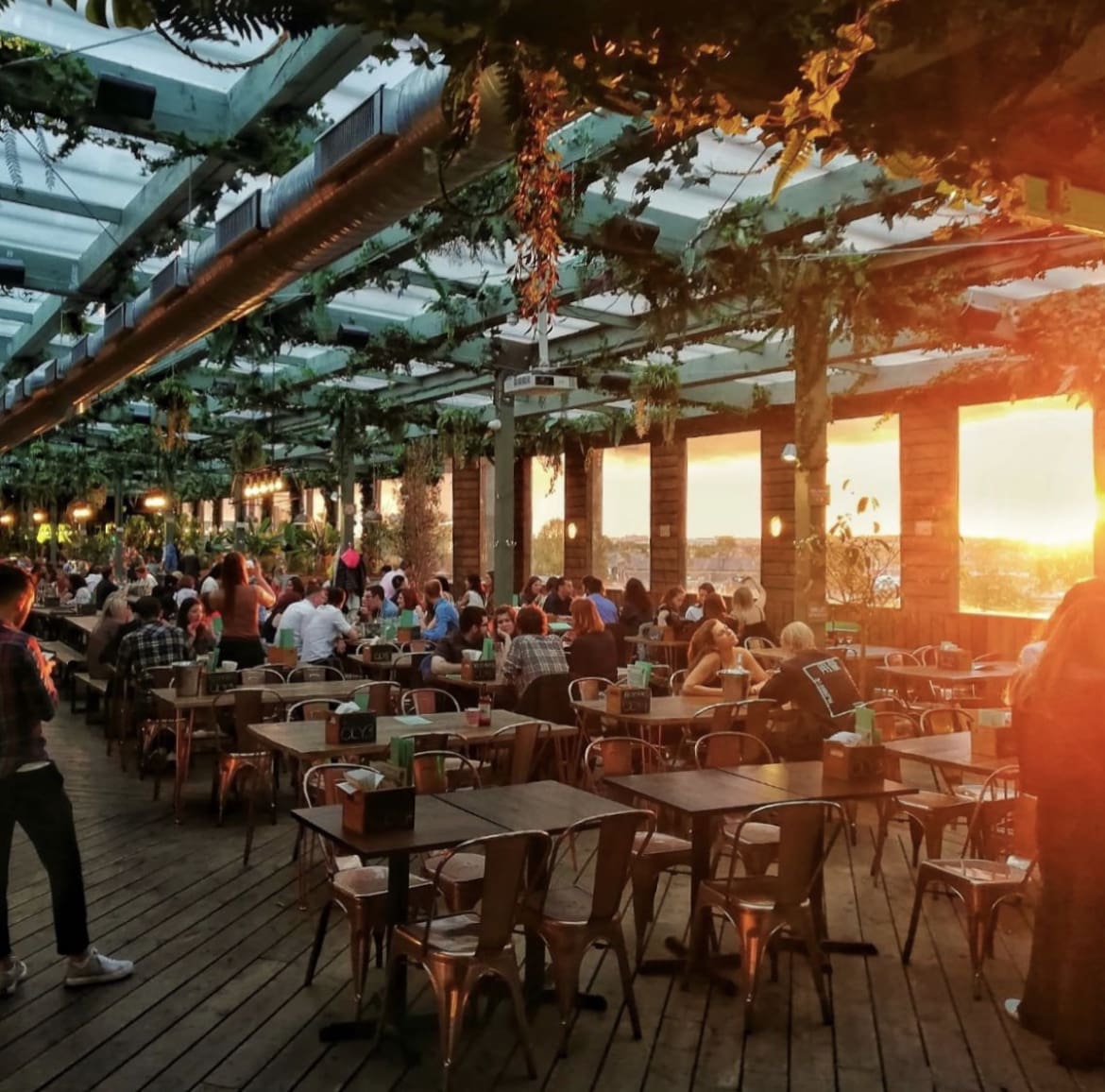
12. Frank's Cafe
Perched atop a multi-story car park in Peckham, Frank's Cafe is a seasonal rooftop bar that has become a beloved fixture of London's summer scene. Its unpretentious vibe, panoramic views of the city skyline, and eclectic crowd make it a must-visit destination for locals and visitors alike. With its colorful umbrellas and artsy decor, Frank's Cafe exudes a hip and relaxed atmosphere that perfectly complements its stunning surroundings.
What to Drink: Keep it simple with a classic G&T or opt for one of their rotating selection of craft beers.
Insider Tip: Frank's Cafe is only open during the summer months, typically from May to September. Make the most of the season and plan your visit accordingly to catch one of London's best-kept rooftop secrets.
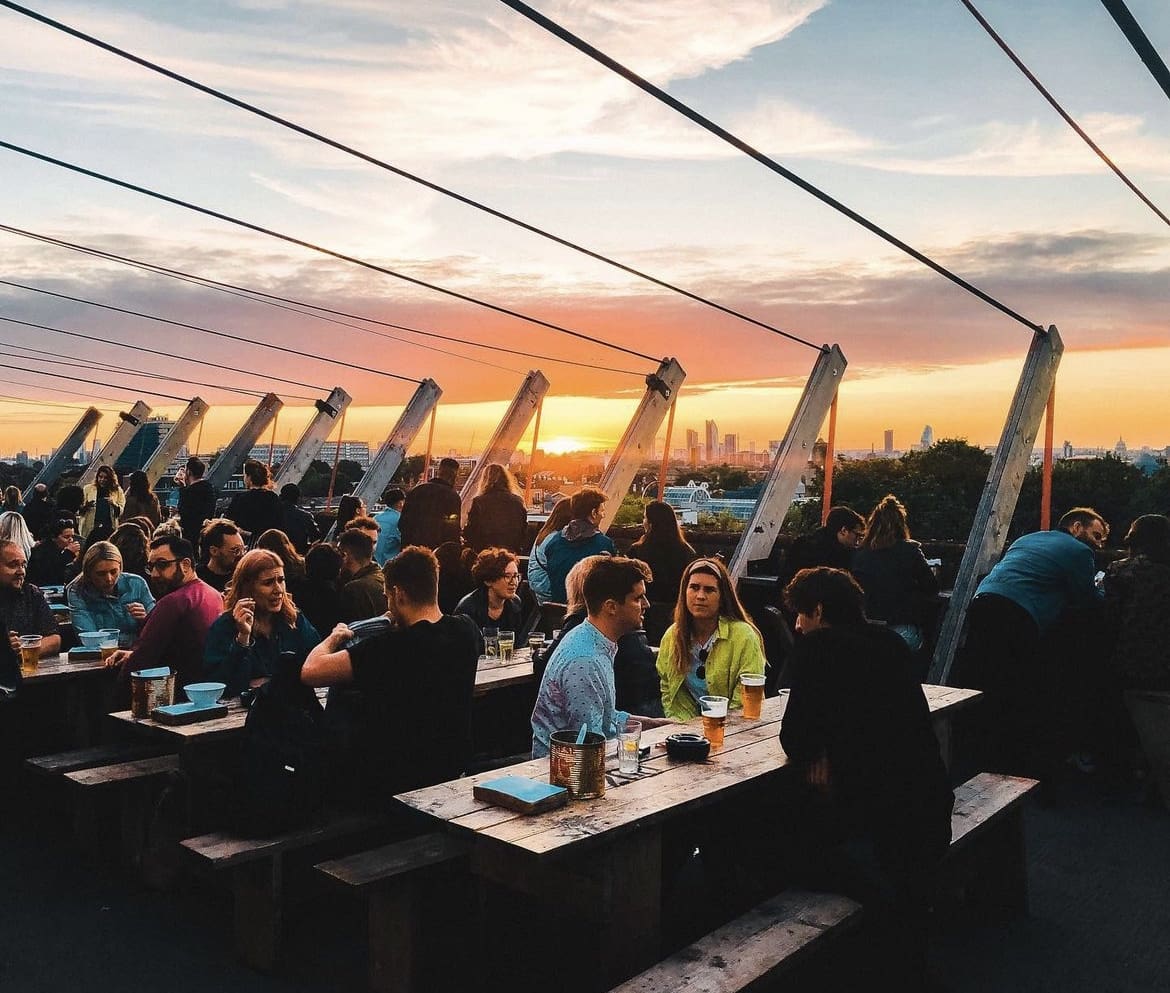
How to Choose the Perfect Rooftop Bar In London, for You
Choosing the right rooftop bar is an art form. Consider what you're after: Are panoramic views at the top of your list, or are you more about the vibe? Maybe it's a specific cocktail or cuisine you're craving. Remember, the best choice blends ambiance with flavor, offering a night that’s as delicious as it is unforgettable.
Making the Most of Your London Rooftop Bar Experience
To ensure an elevated evening, keep these tips in mind:
- Book in Advance: Many of these spots are exclusive for a reason. Secure your spot to avoid being turned away.
- Dress Code: Most rooftop bars have a dress code—think smart casual or chic. It's all about matching the sophistication of the setting.
- Weather Wise: The British weather can be unpredictable. Check the forecast and choose a bar with indoor options just in case.
Experiencing London from its rooftop bars is to see the city in a new light—literally. It’s about embracing the night, the city’s skyline, and the myriad flavors each bar brings to your glass. So, here's to high spirits and even higher views. May your nights be as dazzling as the city lights below.
Neon Lights & City Nights: The Best Night Clubs in London
April 4, 2024
London, a city where the night shines as brightly as the day, and the sound of music leads you down its historic lanes into the heart of its pulsating nightlife. Beyond the shadow of the city's iconic landmarks, the neon lights of London's night clubs beckon with the promise of unforgettable adventures.
This isn't just about dancing the night away; it's about experiencing the vibrancy of cultures, sounds, and spirits that make London's night scene one of the most dynamic on the planet.
Whether you're a hardcore electronic music enthusiast or a live music lover, this guide dives into the best night clubs in London, offering not just a night out, but a journey into the soul of the city's night.
1. Fabric
Tucked away in the historic Farringdon area, Fabric has been the cornerstone of London's electronic music scene since its opening in 1999. With a reputation that crosses borders, Fabric is not just a club; it's an institution, famed for its groundbreaking sound system and body-sonic dancefloor that lets you feel the bass coursing through your veins.
Fabric's heart beats to the rhythm of electronic music, hosting a roster of international DJs and emerging talent. It's a melting pot where music lovers of all types converge, from techno heads to drum and bass aficionados.
Be prepared for a cover charge that varies from £10 to £25, depending on the night and the line-up. Fridays are legendary for their drum and bass sessions, while Saturdays offer a mix of techno, house, and everything in between. Remember, Fabric operates a strict face control, so bring your ID and a spirit ready to embrace the night.
As one of the top London clubs for music lovers, Fabric offers an unparalleled night out for those looking to experience the cutting edge of the electronic music scene.
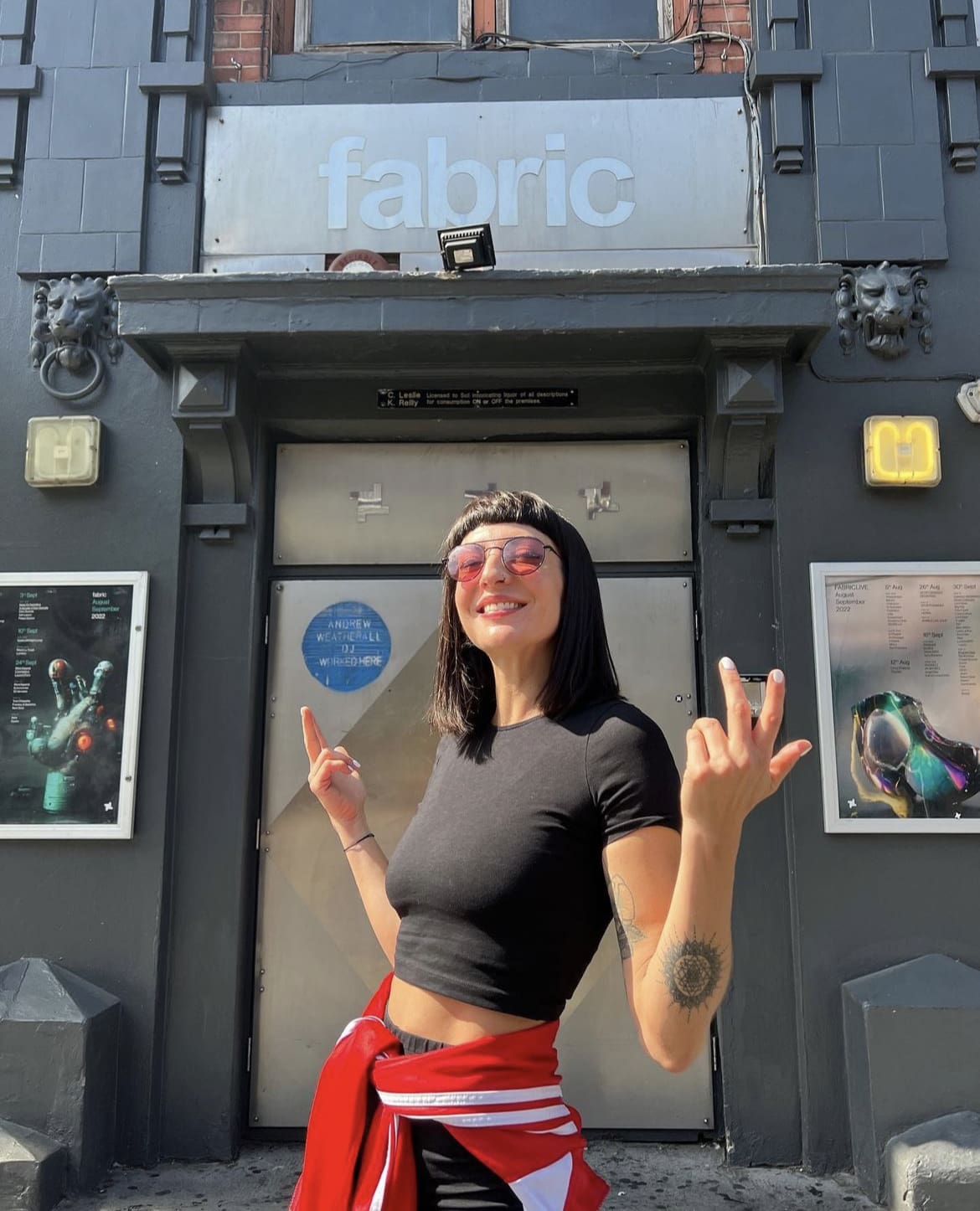
2. Ministry of Sound
In the heart of Elephant & Castle, Ministry of Sound stands as a titan of London's clubbing landscape. Since its inception in 1991, it has evolved from a derelict bus garage into one of the world's most famous night clubs, with a sound system that's become the stuff of legend.
The Ministry of Sound is a sanctuary for house and techno enthusiasts. Its dance floors are filled with dedicated music fans from across the globe, drawn by world-class DJ line-ups and the club's relentless pursuit of the perfect sound experience.
Membership options offer a range of benefits, including queue jumps and access to exclusive areas. Tickets for events vary, but planning ahead can secure you a spot in one of London's most iconic dance music venues. Themed nights and special events are frequent, so checking their calendar is a must.
Ministry of Sound is undeniably one of the exclusive London night clubs, a must-visit for anyone looking to dive deep into the heart of the city's electronic music culture.
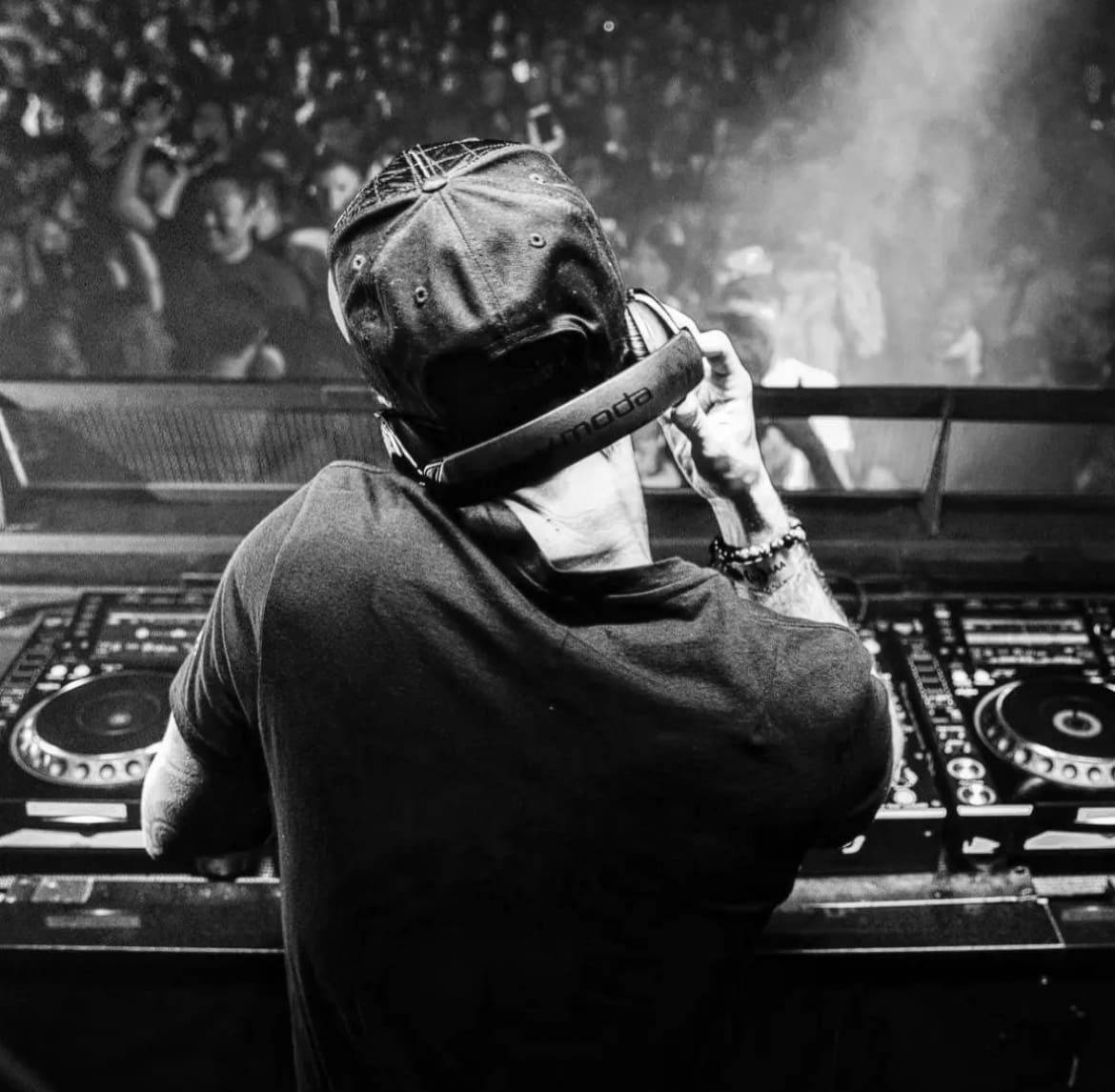
3. XOYO
XOYO, nestled in the vibrant Shoreditch area, has quickly established itself as a beacon for clubbers seeking an intimate yet electrifying night out. Since opening its doors in 2010, XOYO has been dedicated to offering a space where music is the unchallenged hero.
The club spans two floors, with a layout that encourages immersion into the music and connection with the crowd. Its no-frills decor keeps the focus on what matters most: the sound, the DJ, and the dance floor.
XOYO's line-up is a carefully curated mix of established names and rising stars in the electronic, house, and techno scenes. It's a place where music aficionados and casual clubbers alike can discover new sounds and lose themselves in the beats.
XOYO operates a more accessible pricing strategy, with entry fees typically ranging from £5 to £20. The club's residency series, where DJs play consecutive weekends, offers a unique opportunity to see artists develop their sound over time. Advance ticket purchases are recommended to avoid disappointment.
For those exploring the London clubbing scene, XOYO represents the perfect blend of intimacy and energy, making it a key destination in the city's vibrant nightlife tapestry.
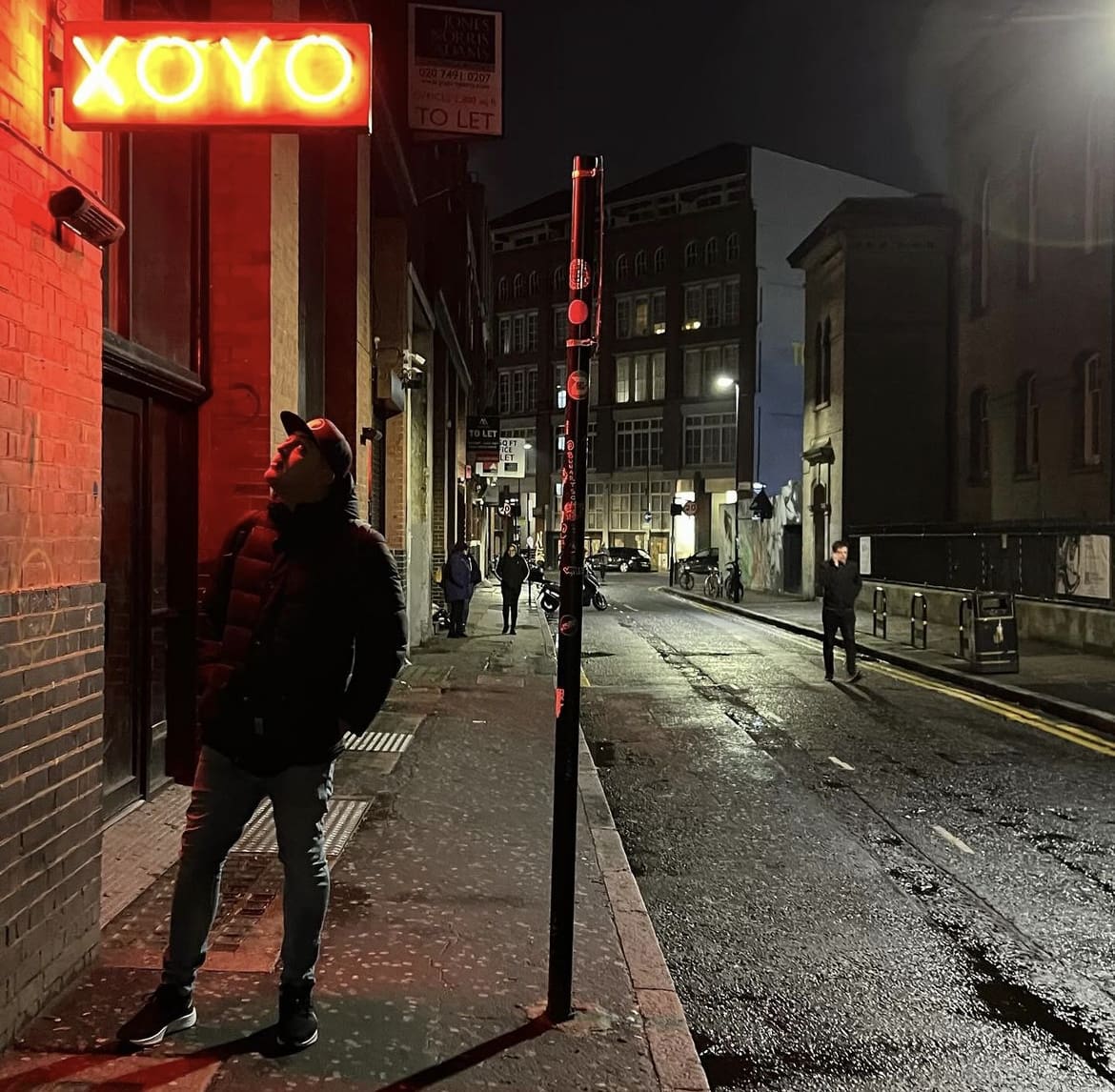
4. Corsica Studios
Nestled in the heart of Elephant & Castle, Corsica Studios is a hidden gem renowned for its underground music scene and gritty, industrial vibe. Since its inception, Corsica Studios has been a hub for electronic music enthusiasts seeking cutting-edge sounds and immersive clubbing experiences.
Situated in two railway arches, Corsica Studios exudes an underground charm that sets it apart from traditional club venues. Its intimate spaces and raw industrial aesthetic create an immersive atmosphere that transports clubbers to the forefront of London's underground music scene.
Corsica Studios is known for its eclectic lineup of electronic music events, featuring a mix of techno, house, experimental, and avant-garde sounds. Its commitment to pushing the boundaries of underground music attracts a diverse crowd of music enthusiasts, united by their passion for innovative sounds and immersive clubbing experiences.
Corsica Studios operates a cash-only bar, so it's advisable to come prepared with cash. Additionally, the venue's programming often includes niche events and experimental performances, so it's worth checking their website for upcoming events and ticket availability.
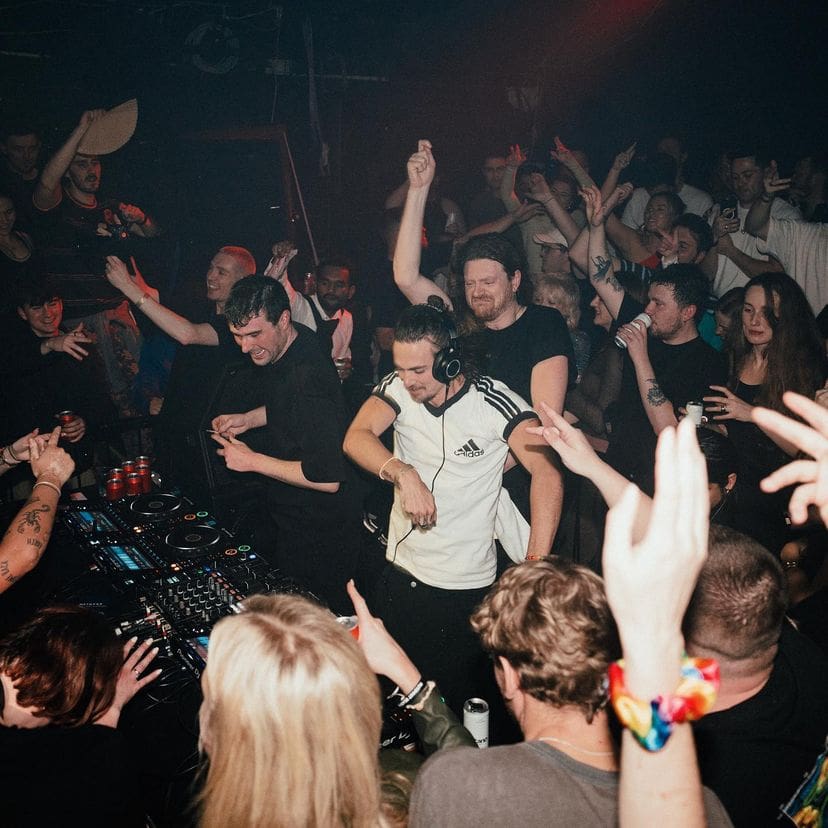
5. Heaven
Stepping into Heaven is like entering a realm where the party never stops, and everyone is welcome. Located near Charing Cross, this legendary venue has been at the forefront of LGBTQ+ nightlife since the early '80s, hosting iconic pop and dance nights that have become a staple of London's night scene.
With a capacity of over 1,000 people, Heaven is one of London’s largest and most famous gay clubs, known for its electrifying atmosphere and inclusive vibe.
Heaven’s stage has seen performances from some of the biggest names in pop, along with hosting regular club nights that feature a mix of chart-topping hits and dance anthems. The crowd is as diverse as the music, creating a welcoming space for all.
G-A-Y nights are especially popular, offering cheap entry and drink specials. It’s a good idea to buy tickets in advance for big events, as Heaven’s reputation often means a full house.
For those seeking London nightlife tips, Heaven is a must-visit for its historic significance, top-tier entertainment, and unbeatable party atmosphere.
6. Egg London
Nestled in the industrial landscapes of Kings Cross, Egg London is a true gem in the city’s clubbing crown. Known for its all-night parties and captivating indoor and outdoor spaces, Egg provides a sanctuary for those looking to dance until the sun comes up.
The club boasts a multi-level layout, including a garden for those summer night vibes and various rooms each offering different musical styles. Its recent renovations have only enhanced its reputation as a space where clubbing feels like an adventure.
Egg London is a haven for electronic and techno enthusiasts, with a keen ear for international DJs and emerging talent. The crowd is energetic, diverse, and ready to embrace the club’s ethos of freedom and expression through dance.
Egg operates a more relaxed dress code, focusing on comfort and self-expression. While the door policy is tight to ensure a safe environment for all, arriving early can help avoid long waits. Membership and VIP options provide perks like fast-track entry and access to exclusive areas.
Egg London embodies the essence of nightlife in London with its immersive electronic beats, sprawling dance floors, and unparalleled atmosphere, making it a beacon for night owls and music lovers alike.
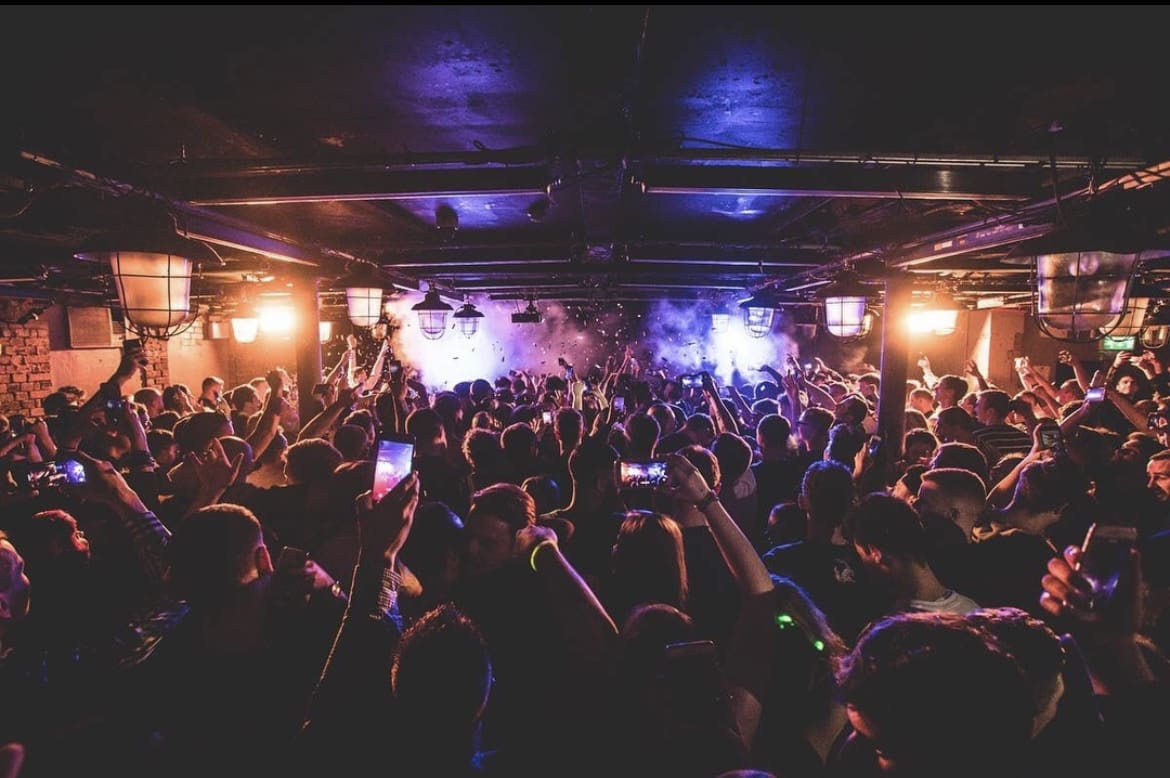
7. Printworks London
Nestled in a former printing press in Canada Water, Printworks London is a monumental venue that redefines the clubbing experience. With its industrial architecture and massive event spaces, Printworks has become synonymous with immersive, multi-sensory club nights that leave a lasting impression.
Printworks' vast halls and raw industrial aesthetic provide the perfect backdrop for its cutting-edge events. The venue's scale is awe-inspiring, creating an atmosphere that's both intimate and grandiose.
Printworks hosts a diverse range of events, from electronic music showcases to live performances and cultural festivals. Its programming attracts a wide spectrum of music lovers, united by their passion for unforgettable experiences.
Due to its popularity, tickets for Printworks events often sell out quickly. It's advisable to purchase tickets in advance and keep an eye on their website for upcoming events and special offers. Additionally, arriving early can help avoid long queues and ensure you have ample time to explore the venue's expansive spaces.
As one of the exclusive London night clubs, Printworks offers a truly immersive clubbing experience that transcends traditional boundaries, making it a must-visit destination for those seeking unforgettable nights out in the city.
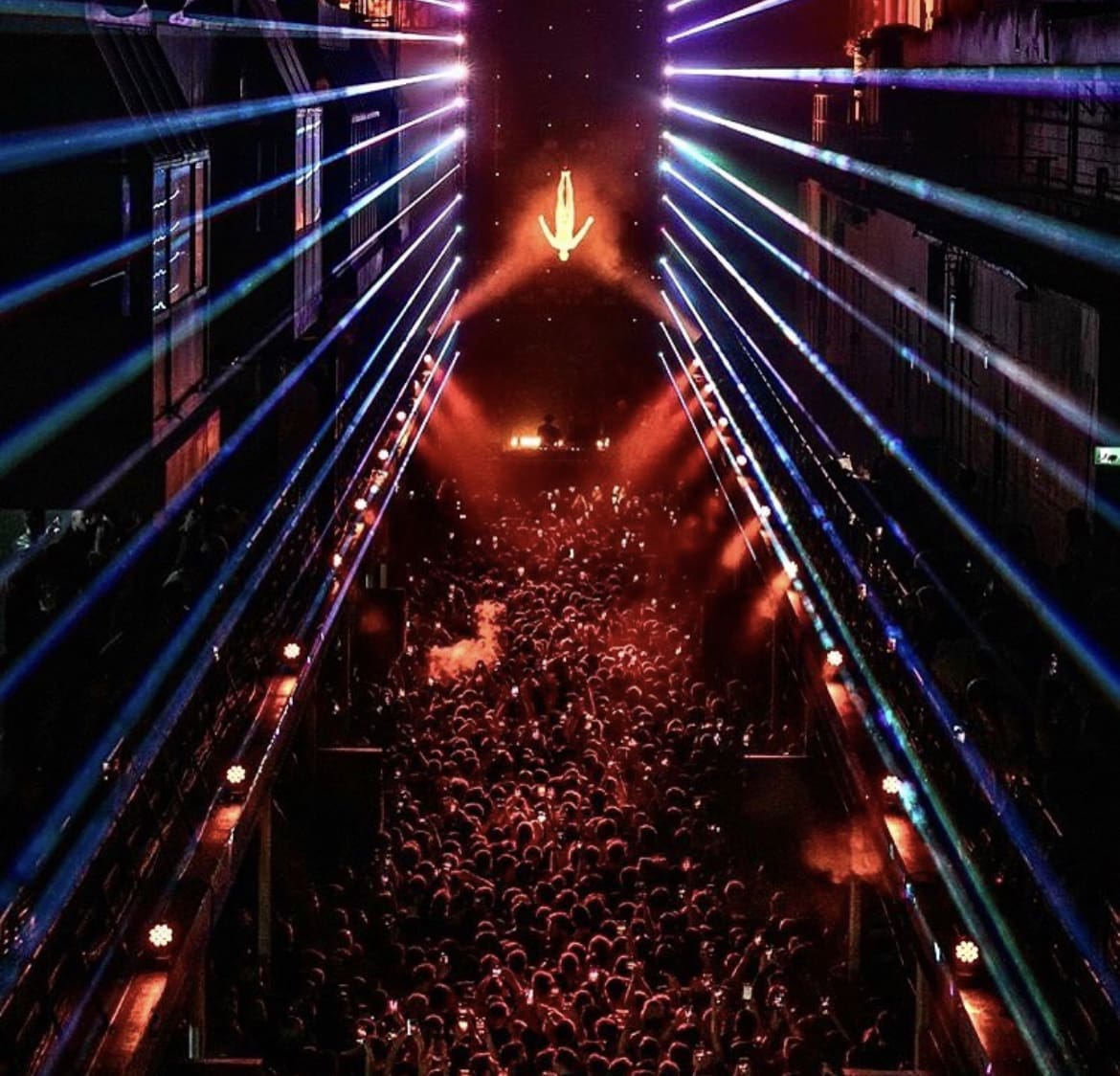
8. The Jazz Cafe
Tucked away in the vibrant Camden Town, The Jazz Cafe is a legendary venue that celebrates the rich history and soulful sounds of jazz, soul, funk, and beyond. Since opening its doors in 1990, The Jazz Cafe has been a mecca for music enthusiasts seeking intimate live performances and electrifying club nights.
The Jazz Cafe exudes a cozy yet vibrant atmosphere, with its intimate stage and warm, welcoming ambiance. The venue's intimate size creates an immersive experience where audiences can connect with artists on a personal level.
The Jazz Cafe boasts a diverse lineup of live performances and DJ sets, spanning genres from jazz and soul to funk, reggae, and beyond. Its eclectic programming attracts a diverse crowd of music lovers, united by their appreciation for quality live music and unforgettable performances.
The Jazz Cafe offers a range of ticket options, including general admission tickets for live performances and club nights, as well as VIP packages for those seeking a more exclusive experience. It's advisable to check the venue's website for upcoming events and ticket availability, as well as any special offers or promotions.
Renowned for its live music offerings, The Jazz Cafe is one of the London clubs with live music, offering unforgettable performances and electrifying club nights that celebrate the rich tapestry of musical genres.
9. Studio 338
In the vibrant Greenwich Peninsula, Studio 338 is a cutting-edge venue that pushes the boundaries of clubbing culture. With its innovative design, state-of-the-art sound system, and sprawling outdoor terrace, Studio 338 offers an unparalleled clubbing experience that blurs the lines between indoor and outdoor nightlife.
Studio 338's futuristic design and immersive atmosphere set the stage for unforgettable club nights and outdoor events. The venue's sleek, industrial aesthetic creates a dynamic backdrop for its cutting-edge programming and world-class performances.
Studio 338 is renowned for its diverse lineup of electronic music events, featuring some of the biggest names in techno, house, and electronic music. Its forward-thinking approach to programming attracts a diverse crowd of music enthusiasts, united by their passion for cutting-edge sounds and unforgettable clubbing experiences.
Studio 338 offers a range of ticket options, including general admission tickets for club nights and outdoor events, as well as VIP packages for those seeking a more exclusive experience. It's advisable to purchase tickets in advance and check the venue's website for upcoming events and ticket availability.
As one of the best night clubs in London, Studio 338 offers a dynamic clubbing experience that pushes the boundaries of traditional nightlife, making it a must-visit destination for music enthusiasts and clubbers alike.
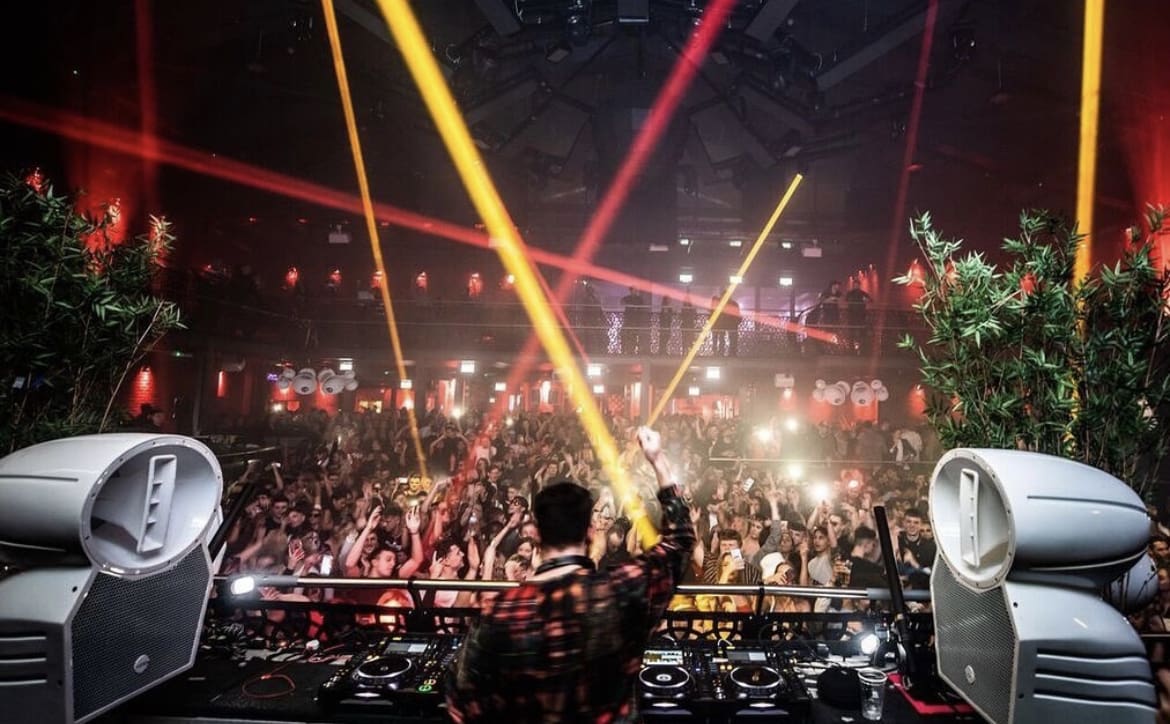
10. Phonox
Situated in the vibrant neighborhood of Brixton, Phonox stands out as a beacon of London's clubbing scene. With its stripped-back design and focus on high-quality sounds, Phonox offers an intimate yet exhilarating clubbing experience.
Located beneath the bustling streets of Brixton, Phonox boasts an underground vibe that sets the stage for unforgettable nights. Its minimalist decor and state-of-the-art lighting create an ambiance that's both inviting and electric.
Phonox is renowned for its diverse lineup of electronic music, featuring everything from house and techno to disco and funk. Its carefully curated events attract a mixed crowd of music enthusiasts, united by their love for quality beats and vibrant atmospheres.
Phonox operates a ticketed entry system, with tickets often available for purchase online in advance. It's recommended to check their website for upcoming events and secure your spot early. Additionally, Phonox offers a cloakroom service for storing belongings during your night out.
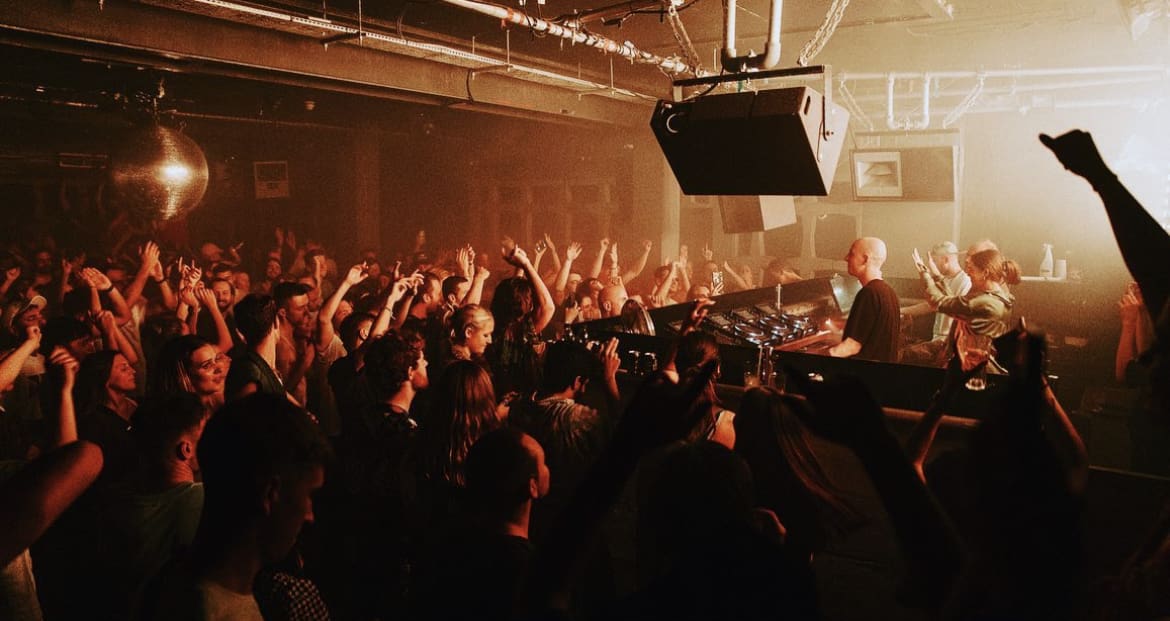
11. The Pickle Factory
Adjacent to Oval Space in the vibrant Bethnal Green, The Pickle Factory is a hidden gem known for its intimate atmosphere and top-notch sound system. Since its opening, The Pickle Factory has carved out a niche as a destination for discerning clubbers seeking quality sounds and intimate clubbing experiences.
Housed in a former pickle factory, The Pickle Factory exudes a unique charm that sets it apart from traditional club venues. Its intimate size and minimalist aesthetic create an immersive atmosphere that places the focus squarely on the music and the dance floor.
The Pickle Factory's programming focuses on quality over quantity, with a lineup that showcases underground talent and cutting-edge sounds across a range of electronic music genres. Its discerning audience appreciates the venue's commitment to pushing the boundaries of clubbing culture and discovering new sounds.
The Pickle Factory's intimate size means that tickets for popular events often sell out quickly, so it's advisable to purchase tickets in advance. Additionally, the venue operates a strict no photography policy, so be sure to respect the club's rules and focus on enjoying the music and the atmosphere.
Renowned for its intimate atmosphere and top-notch sound system, The Pickle Factory is one of the hip hop clubs in London that offers a unique clubbing experience for music enthusiasts and clubbers alike.
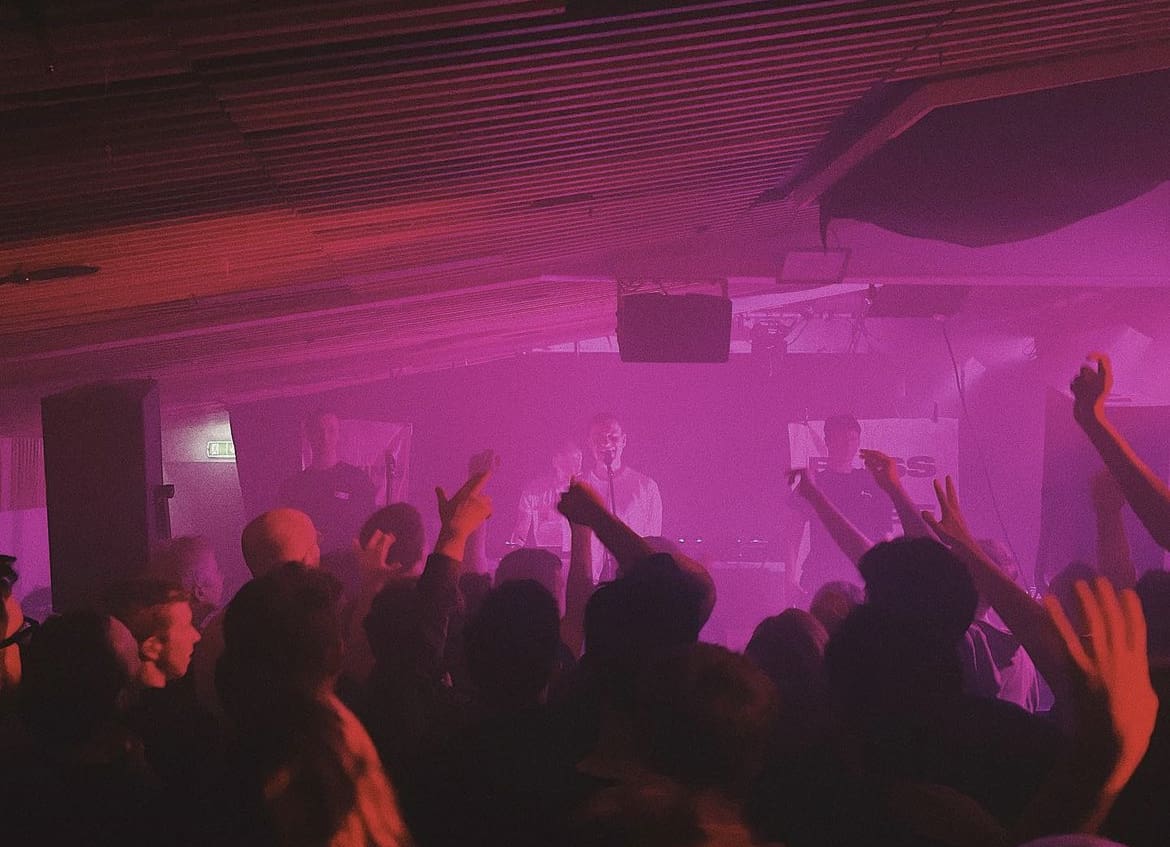
12. Electric Brixton
Located in the heart of Brixton, Electric Brixton is a historic venue that has been revitalized as a premier destination for live music and club nights. With its iconic Art Deco architecture and state-of-the-art sound system, Electric Brixton offers a unique blend of old-world charm and modern clubbing sophistication.
Housed in a former cinema, Electric Brixton exudes an old-world charm that sets it apart from traditional club venues. Its grand Art Deco facade and spacious interior create a sense of grandeur that adds to the excitement of club nights and live performances.
Electric Brixton's programming spans a wide range of musical genres, from electronic and dance to live bands and DJs. Its eclectic lineup attracts a diverse crowd of music enthusiasts, united by their passion for quality sounds and unforgettable clubbing experiences.
Electric Brixton offers a range of ticket options, including general admission tickets for club nights and live performances, as well as VIP packages for those seeking a more exclusive experience. It's advisable to purchase tickets in advance and check the venue's website for upcoming events and ticket availability.
Known for its historic charm and modern clubbing sophistication, Electric Brixton is one of the London night clubs guide that offers a unique clubbing experience for music lovers and clubbers alike.
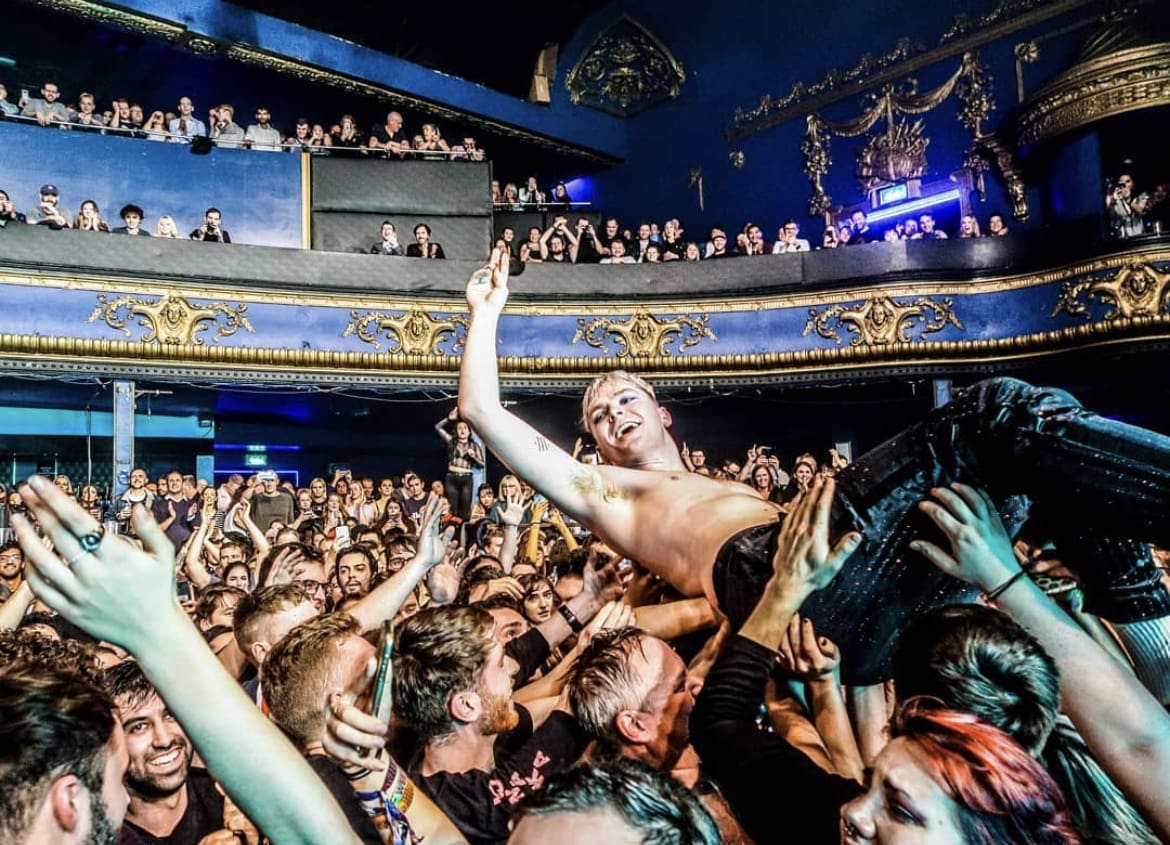
14. Oval Space
Adjacent to The Pickle Factory in Bethnal Green, Oval Space is a versatile venue that blurs the lines between clubbing, live music, and cultural events. With its spacious interior, panoramic views of East London, and commitment to showcasing innovative talent, Oval Space offers a dynamic and immersive clubbing experience that's second to none.
Oval Space boasts a spacious and versatile interior, with multiple rooms and outdoor spaces that offer panoramic views of East London. Its industrial-chic aesthetic and state-of-the-art sound system create an ambiance that's both modern and timeless.
Oval Space's programming spans a wide range of musical genres, from electronic and dance to live bands and DJs. Its diverse lineup attracts a mixed crowd of music enthusiasts, united by their passion for quality sounds and unforgettable clubbing experiences.
Oval Space operates a ticketed entry system, with tickets available for purchase in advance online. It's advisable to check the venue's website for upcoming events and ticket availability, as well as any special offers or promotions. Additionally, Oval Space offers a range of food and drink options to keep you fueled throughout the night.
Renowned for its panoramic views and dynamic programming, Oval Space is one of the best dance clubs in London that offers a unique clubbing experience for music enthusiasts and clubbers alike.
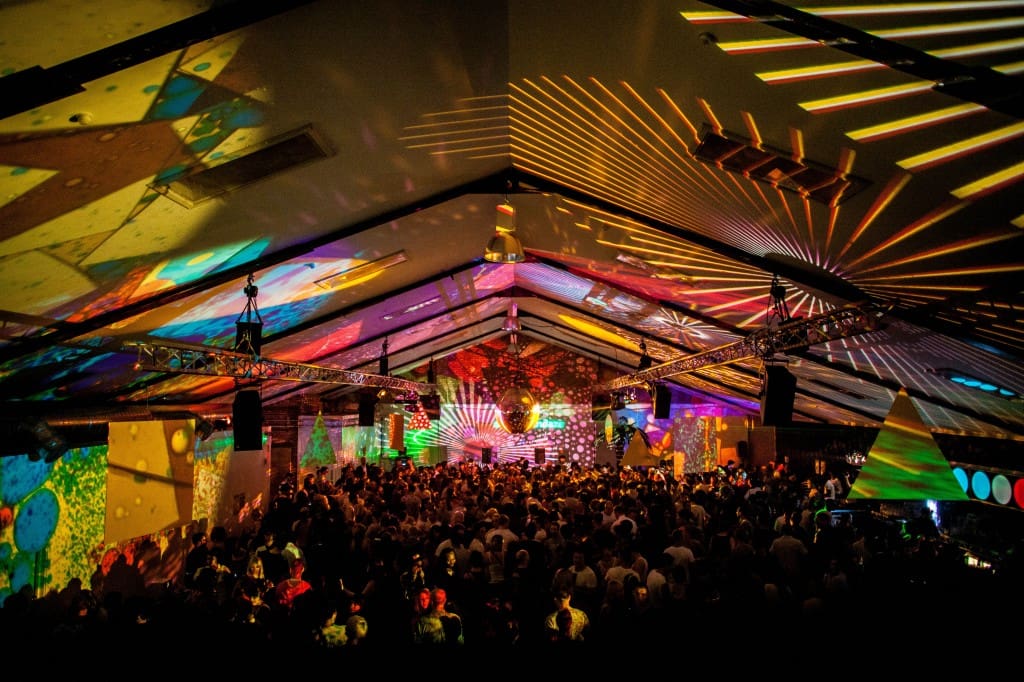
15. The Cross
Once rumored to make a comeback, The Cross was a legendary clubbing destination that left an indelible mark on London's nightlife scene. While its revival remains uncertain, The Cross's legacy lives on in the memories of those who experienced its iconic parties and groundbreaking events.
The Cross was located in the heart of King's Cross, a vibrant and eclectic neighborhood that served as the perfect backdrop for its legendary parties. Its spacious interior and cutting-edge design created an atmosphere that was both immersive and exhilarating.
The Cross's programming was as diverse as its crowd, featuring a mix of electronic music genres and underground sounds. Its legendary parties attracted a loyal following of music enthusiasts, united by their passion for quality sounds and unforgettable clubbing experiences.
While The Cross's future remains uncertain, its legacy lives on in the memories of those who experienced its iconic parties and groundbreaking events. Keep an eye out for any announcements or updates regarding its potential revival, and be ready to experience a piece of London's clubbing history if the opportunity arises.
As one of the London night clubs near me, The Cross holds a special place in the hearts of those who experienced its legendary parties and groundbreaking events, serving as a testament to the city's vibrant and ever-evolving nightlife scene.
Cool Clubs in Amsterdam – 12 Must-Visit Spots!
April 2, 2024
When the sun sets and the city lights of Amsterdam begin to shimmer on the canals, there's an electric buzz that fills the air, promising unforgettable nights. This city, known for its artistic heritage, elaborate canal system, and narrow houses with gabled facades, holds a secret nightlife that's as diverse as its history.
For the urban explorer, the night is not just a time to rest but a canvas of opportunities, a chance to dive into the vibrant, eclectic mix that makes Amsterdam's club scene one of a kind. From underground techno basements to majestic church venues, this guide is your insider's passport to the coolest, trendiest spots in the city.
Packed with practical tips and sprinkled with a bit of local know-how, we're about to embark on a journey through Amsterdam's 12 must-visit clubs. Whether you're a night owl, a music aficionado, or simply in it for the vibe, get ready to explore the heart of Amsterdam's nightlife. Let's dance through the unique, the iconic, and the unabashedly fun venues that define the night in this unparalleled city.
1. Supperclub
Overview: In a city celebrated for its dynamic nightlife and culinary experiences, The Supperclub offers an unrivaled fusion of both. Located in the heart of Amsterdam, this venue isn't just about dining; it's an immersive experience that combines innovative cuisine, performance art, and music into a feast for the senses.
What Makes It Unique: What sets The Supperclub apart is its commitment to the unexpected. Guests are invited to dine on beds instead of traditional seating, offering a relaxed yet engaging environment. Throughout the evening, a variety of performances unfold around the diners, ranging from avant-garde dance to live music, making each visit a unique adventure. After dinner, the space transforms into a vibrant club where the energy ramps up, and the night takes on a life of its own.
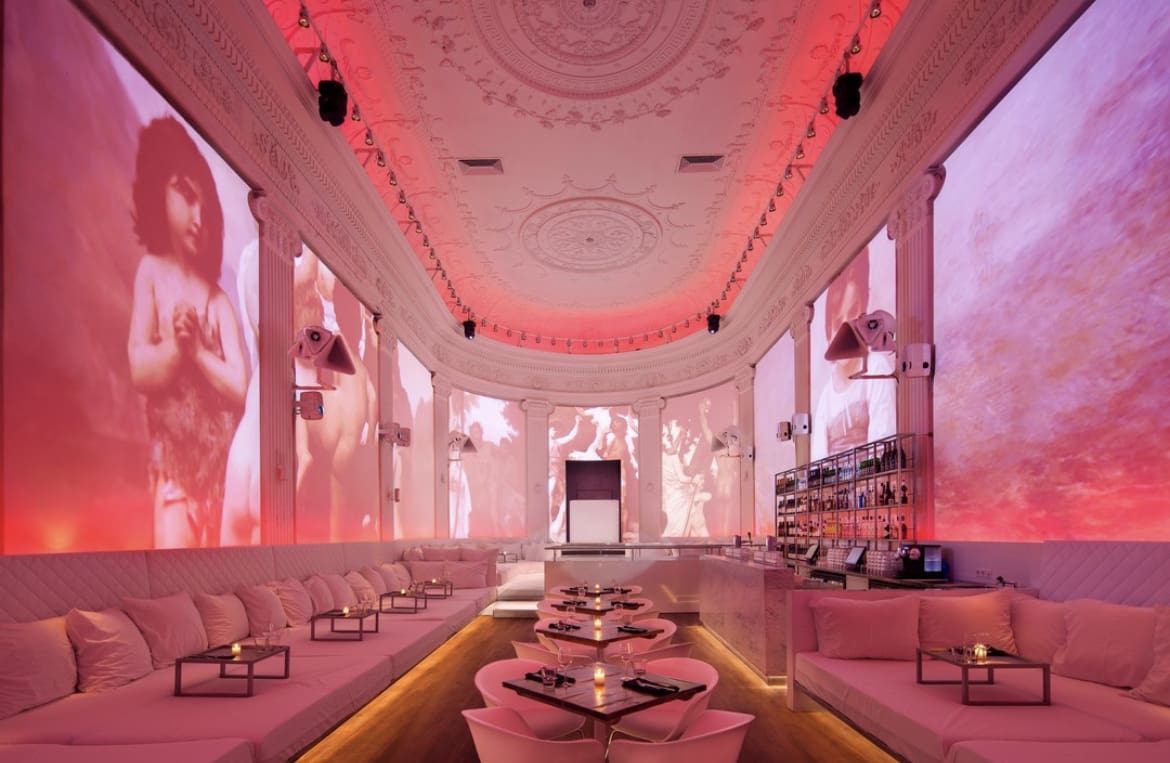
Practical Tips: Reservations for The Supperclub are highly recommended, as this popular experience tends to book up quickly. When planning your visit, keep an open mind and be ready for anything; the night's theme can range from the extravagant to the surreal. Dressing up is encouraged, aligning with the evening's theme or simply showcasing your personal style adds to the immersive experience.
Navigating The Supperclub
- Dining Experience: Embrace the unconventional dining setup and be prepared for a menu that's as creative and varied as the performances. Dietary preferences can usually be accommodated with advance notice.
- Transition to Club: Post-dinner, the venue transitions into a full-blown nightclub. Stick around to enjoy a variety of DJ sets and music genres, perfect for working off the evening's indulgences on the dance floor.
2. Paradiso
Overview: What was once a reverent congregation's church has transformed into one of Amsterdam's most sacred music temples. Paradiso, located near the bustling Leidseplein, is an iconic venue that has welcomed everyone from Pink Floyd to Lady Gaga, serving as a musical mecca for over half a century.
What Makes It Unique: The beauty of Paradiso lies not just in its stained glass windows or the majestic balcony arches but in its incredible acoustics and intimate atmosphere, no matter the scale of the event. It's a place where the barrier between artist and audience feels remarkably thin, creating unforgettable live music experiences. The venue's lineup is a kaleidoscope of genres, offering everything from rock and indie to electronic and hip-hop, making every visit a unique discovery.
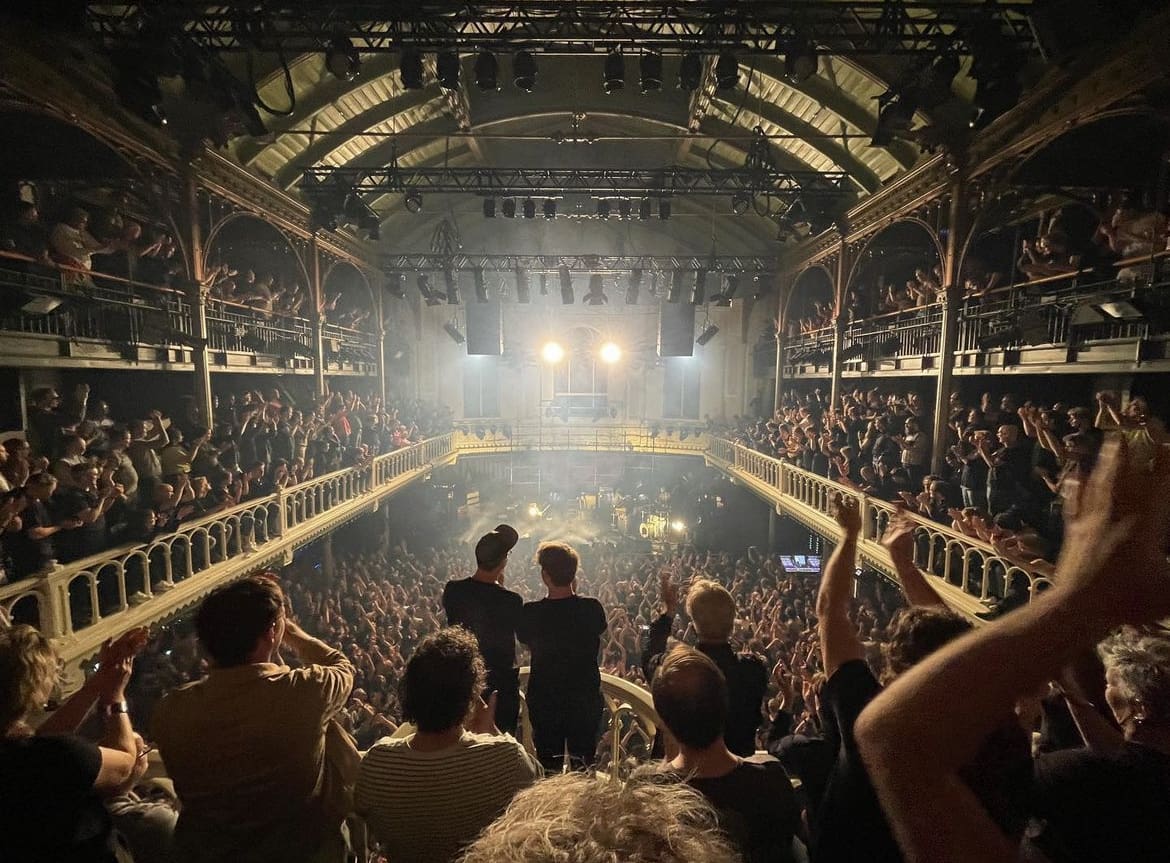
Practical Tips: Tickets for shows at Paradiso can sell out fast, especially for big names, so snagging them early is wise. While the venue itself is a must-see, don't miss the chance to explore the surrounding area of Leidseplein, teeming with late-night eateries and bars for pre or post-concert gatherings. The club operates a cloakroom, so you can dance and jump without baggage literally hanging off your shoulders.
Navigating Paradiso
- Membership Requirement: Paradiso operates with a membership system, but fear not—this can often be included in the ticket price for a nominal fee, granting you access to a world of musical enchantment.
- Arrival Tips: Given its central location, Paradiso is easily reachable by tram or bike, Amsterdam's preferred modes of transport. Arriving a bit early can help you avoid long lines and secure a good spot, especially for sold-out shows.
3. Melkweg
Overview: A stone's throw away from Paradiso, Melkweg (The Milky Way) offers its own universe of cultural and musical exploration. Originating as a dairy factory, this multi-room venue now hosts an eclectic mix of concerts, club nights, cinema screenings, and art exhibitions, making it a cornerstone of Amsterdam's cultural scene.
What Makes It Unique: Melkweg's charm lies in its ability to offer something for everyone. Whether you're there for an indie band, a hip-hop act, or a techno DJ, the venue ensures a close-up experience with your favorites. Its programming is diverse, featuring rising stars and established names, and the multiple spaces within mean you can often choose between different vibes on the same night.
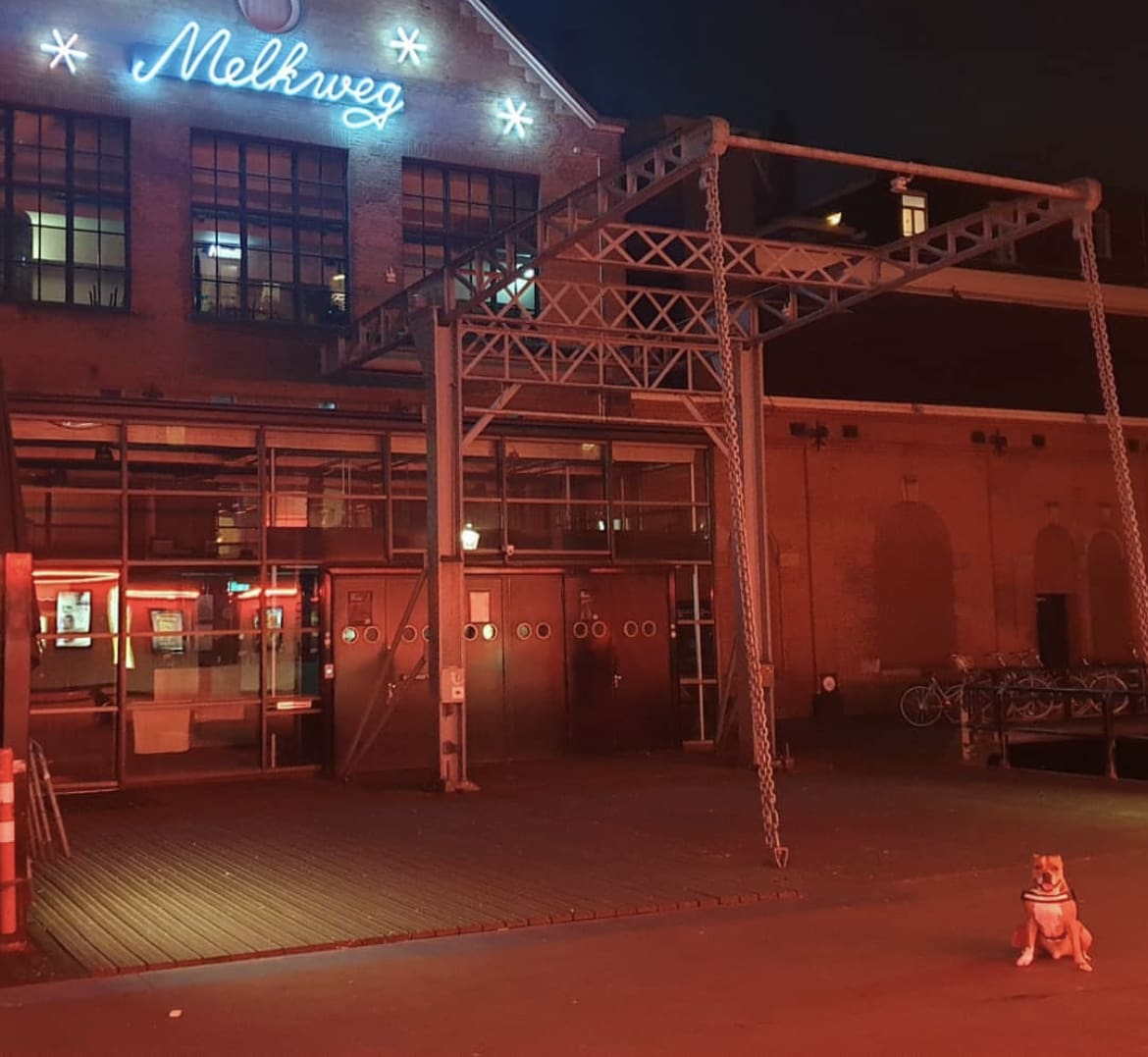
Practical Tips: Like Paradiso, Melkweg also operates on a membership model, but this is typically included in the ticket price for ease. Checking out the lineup in advance and booking tickets online is recommended, as events can sell out quickly. Don't forget to explore the Lijnbaansgracht canal area around the venue, perfect for a serene stroll to end the night.
Navigating Melkweg
- Best Spots for Shows: The venue has several spaces, from the intimate Oude Zaal (Old Hall) to the larger Max, each offering a different experience. Depending on the show, arriving early can help you get a spot close to the stage or a comfortable balcony view in the Max.
- Late-Night Snacks: The area around Melkweg is ripe with options for post-gig cravings. From classic Dutch fries to international cuisine, you won't have to venture far to find a satisfying end to your night.
4. Shelter
Overview: Tucked away beneath the A'DAM Tower's looming presence, just a swift ferry ride across the IJ River from Central Station, Shelter offers an underground haven for techno enthusiasts. Its location is as symbolic as it is practical, representing a threshold between the mainstream and the underground, a literal and figurative journey into the depths of Amsterdam's nightlife.
What Makes It Unique: Shelter's commitment to quality sound and an immersive experience is unparalleled. With a state-of-the-art sound system that reverberates through the body, the club is a pilgrimage site for those who worship at the altar of techno. The minimalist design, accentuated by the club's meticulous attention to lighting, sets the perfect stage for losing yourself in the music.
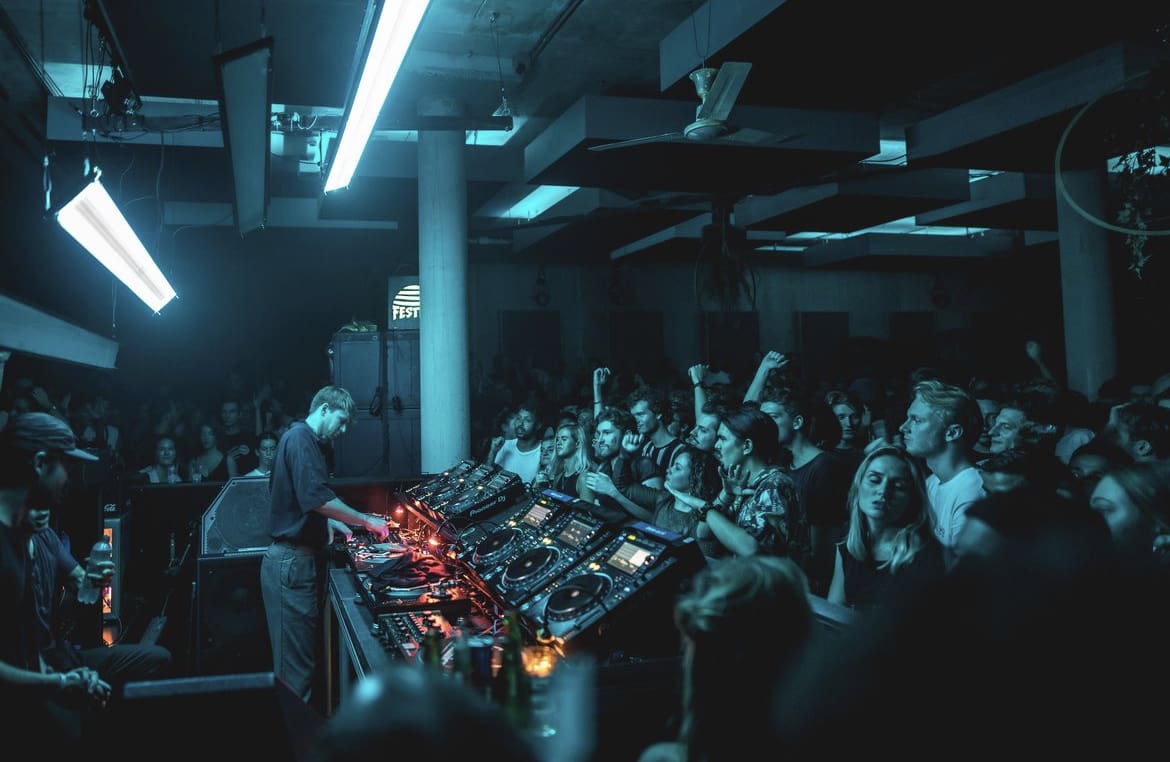
Practical Tips: The club's somewhat secluded location makes it a journey worth planning. The free ferry service from Central Station to the A'DAM Tower is not only convenient but offers stunning nighttime views of the IJ River, setting the mood for the night ahead. Shelter operates with a no-photo policy, encouraging a fully present experience and a chance to disconnect from the digital world.
Navigating Shelter
- Door Policy: Shelter is known for its inclusive but selective door policy, aiming to cultivate a safe and respectful atmosphere. Being polite and patient with the door staff is key.
- After Hours: As one of the few clubs in Amsterdam with a 24-hour license, Shelter often hosts after-parties that stretch well into the morning, perfect for night owls and early birds alike.
5. Club NYX
Overview: A vibrant splash on the canvas of Amsterdam's nightlife, Club NYX is a three-story venue in the Reguliersdwarsstraat area, the heart of the city's LGBTQ+ scene. Named after the Greek goddess of the night, NYX embodies a space where freedom and self-expression are not just welcomed but celebrated.
What Makes It Unique: Club NYX's atmosphere is a kaleidoscope of diversity, reflecting the city's inclusive spirit. Each floor offers a different musical flavor, from pop anthems on the ground floor to deep house and techno in the basement. The club's decor, featuring eclectic art and unexpected installations (including a urinal DJ booth), underscores its playful, anything-goes vibe.
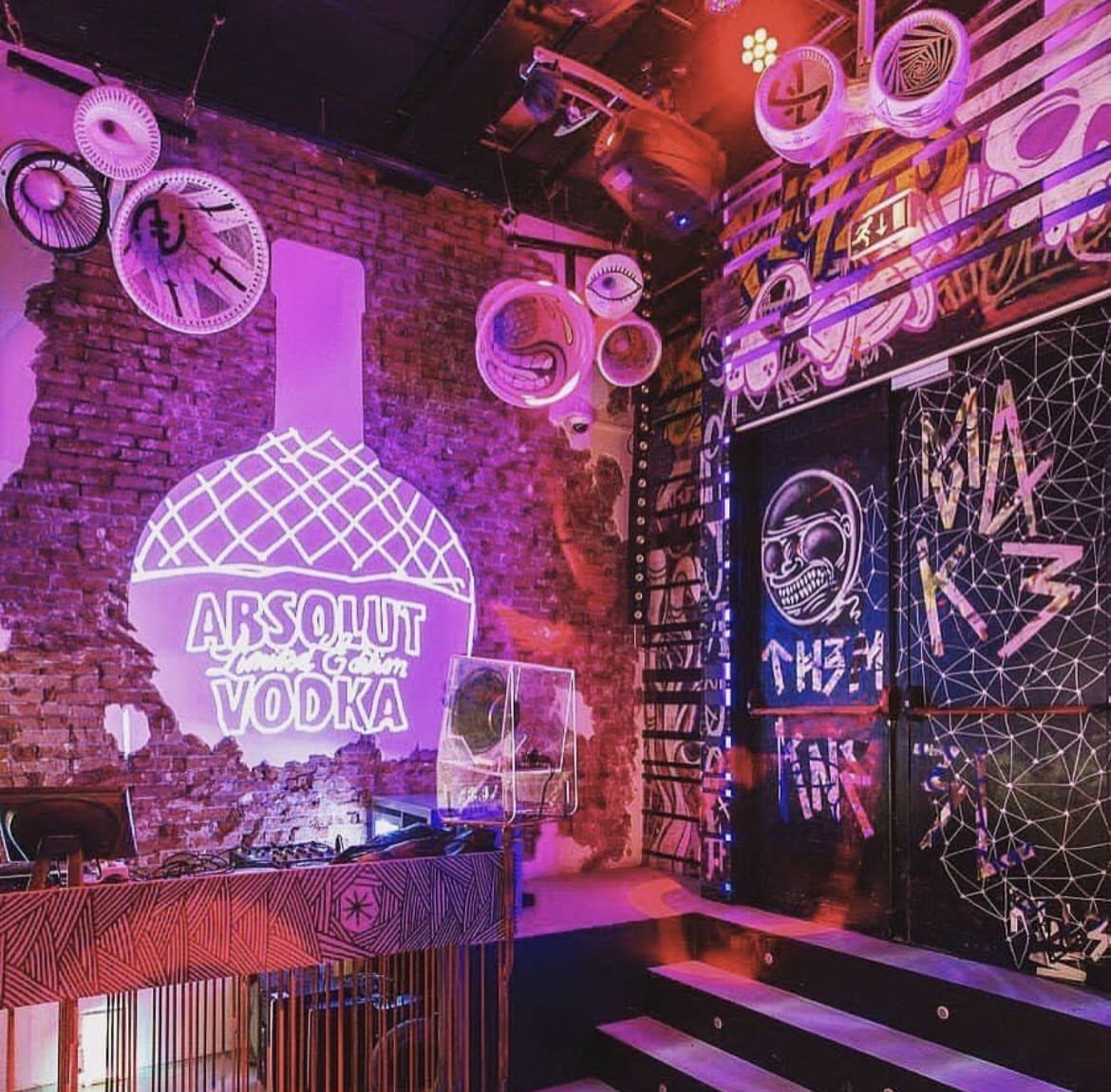
Practical Tips: Dress to express is the unofficial motto here; NYX encourages its patrons to embrace their individuality. The club is known for its themed nights and special events, so checking the schedule in advance and dressing accordingly can add an extra layer of fun to the experience. The venue is centrally located, making it easily accessible by tram, bike, or foot from most parts of the city.
Navigating Club NYX
- Best Nights to Go: While weekends are a safe bet for a high-energy crowd, weekday nights often host unique events and themed parties worth exploring.
- Safety and Inclusivity: NYX prides itself on being a safe space for everyone. Respectful behavior is paramount, and the club has a zero-tolerance policy towards harassment, ensuring a night of fun and freedom.
6. AIR Amsterdam
Overview: Nestled in the vibrant heart of Amsterdam's Rembrandtplein, AIR Amsterdam has carved out its niche as a hotspot for electronic dance music enthusiasts. With its stylish, futuristic interior and commitment to sustainability, AIR redefines the clubbing experience with a blend of high-tech ambiance and eco-consciousness.
What Makes It Unique: What sets AIR apart is its innovative approach to club design and guest comfort. The club boasts state-of-the-art sound systems and an impressive LED wall that creates an immersive visual experience. Its floor plan is thoughtfully designed to enhance the flow of movement, ensuring that whether you're in the main dance area or chilling in one of the lounge spaces, you're in for a night of unparalleled entertainment. AIR's commitment to sustainability is seen in its use of durable materials and efforts to minimize its ecological footprint, making it a pioneer in eco-friendly nightlife.
Practical Tips: Purchasing tickets in advance is highly recommended, as AIR hosts some of the most sought-after events in the city, featuring both local talents and international DJs. The club offers a unique electronic locker system, allowing guests to safely store their belongings and recharge their phones, so you're ready to capture the night's best moments or simply stay connected.
Navigating AIR Amsterdam
- Dress Code: AIR encourages a smart casual dress code, blending comfort with a touch of flair to match the club's modern aesthetic.
- VIP Experience: For those looking to elevate their night, AIR offers VIP tables with exclusive bottle service, providing a more intimate and luxurious clubbing experience.
7. Warehouse Elementenstraat
Overview: Tucked away in the industrial outskirts of Amsterdam, Warehouse Elementenstraat holds a storied place in the city's techno scene. This legendary venue, with its raw, unpolished aesthetic, channels the spirit of the underground raves of the 90s, offering a no-frills space where the music takes center stage.
What Makes It Unique: Warehouse Elementenstraat's authenticity lies in its simplicity and historical significance. The venue has retained its industrial charm, with high ceilings, concrete floors, and minimalistic lighting, creating an atmosphere that's all about the communal experience of music. It's a pilgrimage site for techno purists, renowned for hosting marathon sets from some of the genre's most respected figures.
Practical Tips: The club's location, while contributing to its underground vibe, means planning your visit is essential. Public transport options are limited late at night, so consider ride-sharing or biking. The venue is known for its long events, often running till dawn or later, so prepare for a marathon rather than a sprint. Comfortable attire is a must, as the focus here is purely on the music and dance.
Navigating Warehouse Elementenstraat
- Getting There: Check the latest transport schedules or arrange a ride. The journey is part of the adventure, leading you to one of Amsterdam's most authentic club experiences.
- Event Schedule: Keep an eye on the club's social media for event announcements and ticket releases. Warehouse Elementenstraat's events are high in demand and often sell out quickly.
8. RADION Amsterdam
Overview: Tucked in the evolving urban landscape of Amsterdam's Nieuw-West district, RADION Amsterdam is a beacon of cultural and electronic music innovation. This multi-purpose space, housed in a former dental clinic, has morphed into one of the city's most dynamic venues, offering a blend of club nights, art exhibitions, and community events.
What Makes It Unique: RADION's charm lies in its ability to seamlessly integrate the cutting-edge of electronic music with a broad spectrum of cultural activities. Its programming is as diverse as its audience, spanning underground techno parties, live performances, and even avant-garde art shows. The venue's commitment to cultural enrichment makes it more than just a club; it's a space where the arts converge in celebration.

Practical Tips: Due to its location away from the city center, planning your trip to RADION is advisable. Public transport does service the area, but check schedules as they can be less frequent at night. The club's atmosphere is welcoming and unpretentious, so feel free to dress comfortably. Keep an eye on their calendar for not-to-miss events that often feature local talent and international acts.
Navigating RADION Amsterdam
- Late Night Transport: Consider biking for a true Amsterdam experience, or use ride-sharing apps to navigate back after a night of dancing.
- Cultural Events: Take advantage of RADION's diverse programming by attending one of their daytime cultural events or art exhibitions, offering a different perspective on the venue's community role.
9. The Waterhole
Overview: In the heart of Amsterdam's bustling nightlife district, The Waterhole stands out as a live music bar offering a cozy, laid-back atmosphere that contrasts with the city's larger club venues. Known for its nightly live music, ranging from rock and pop to indie, The Waterhole is a haven for those looking to enjoy quality tunes in a more intimate setting.
What Makes It Unique: The Waterhole's dedication to live music sets it apart. With a stage that hosts bands and artists from around the world, it's a place where music lovers can gather, enjoy a drink, and maybe even discover their next favorite band. The venue's relaxed vibe is complemented by pool tables and a spacious outdoor terrace, perfect for summer nights.
Practical Tips: The Waterhole is conveniently located near Leidseplein, making it easily accessible by public transport or bike. It's a great spot to start or end your night, with music starting in the early evening and going until late. Entry fees are modest, and the bar offers a range of affordable drinks, making it a budget-friendly option for a night out.
Navigating The Waterhole
- Best Time to Visit: While live music is a staple every night, visiting on a weekday can offer a more laid-back experience, perfect for those looking to enjoy the music and maybe strike up a conversation with fellow music aficionados.
- Jam Sessions: Keep an eye out for their special jam session nights if you're an aspiring musician looking to play in front of an appreciative audience.
10. Canvas
Overview: Perched on the 7th floor of the Volkshotel in Amsterdam's vibrant East, Canvas offers a unique clubbing experience with panoramic views of the city skyline. By day, it's a laid-back restaurant and café; by night, Canvas transforms into a pulsating venue where DJs spin eclectic sets ranging from house to disco and beyond.
What Makes It Unique: The allure of Canvas goes beyond its music; it's the breathtaking view that steals the show, offering a backdrop unlike any other in Amsterdam's nightlife. The venue's open and airy space, complete with a terrace for those warmer nights, invites clubbers to dance under the stars or simply enjoy a cocktail while taking in the city lights.
Practical Tips: Canvas tends to draw a mix of locals and visitors, creating a diverse and welcoming atmosphere. While entry is more relaxed than some of the exclusive clubs, it's wise to arrive early, especially on weekends, to avoid the queues and secure a spot on the terrace. Dress is casual but chic, fitting the venue's trendy yet unpretentious vibe.
Navigating Canvas
- Dining and Dancing: Make an evening of it by starting with dinner at the restaurant before transitioning to the dance floor as the night progresses. The menu offers a variety of options, catering to a wide range of tastes.
- Sunset Sessions: For a truly memorable experience, visit Canvas during sunset. The changing colors of the sky set against the Amsterdam skyline provide a magical start to the evening.
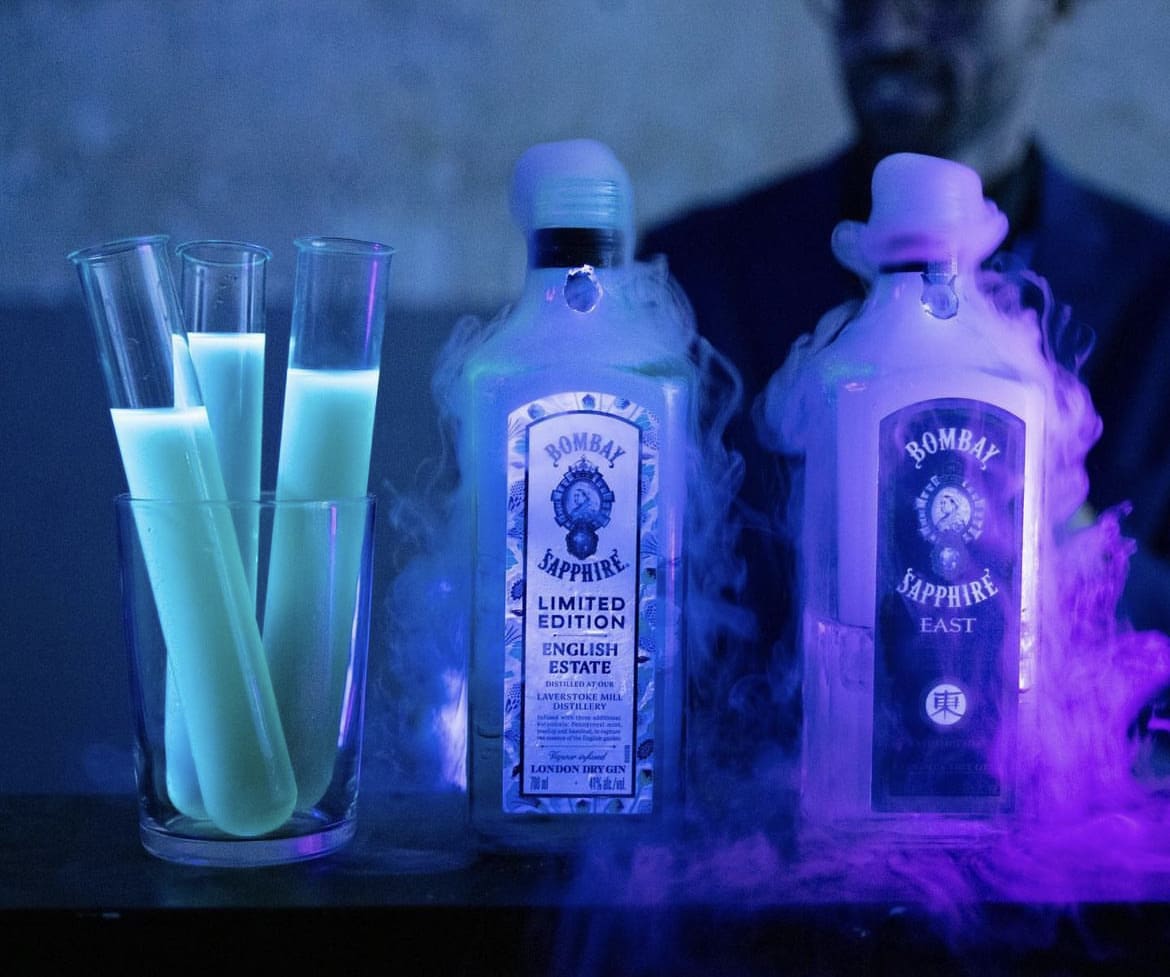
11. Bitterzoet
Overview: Bitterzoet, meaning "Bittersweet" in Dutch, is a cozy venue located near Amsterdam Central Station, known for its eclectic programming that spans genres from hip-hop and reggae to indie and electronic. This intimate space is both a bar and a club, hosting live bands during the early hours and transforming into a vibrant dance floor as the night wears on.
What Makes It Unique: Bitterzoet's intimate atmosphere is its biggest charm, offering music lovers a close-up experience with up-and-coming artists and DJs. The venue's decor, with its dim lighting and vintage furnishings, creates a warm and inviting space that feels like a well-kept secret among Amsterdam's nightlife spots.
Practical Tips: Due to its smaller size, Bitterzoet can fill up quickly, especially on nights with popular acts. Buying tickets in advance is recommended, and arriving early not only guarantees entry but also offers a chance to enjoy a drink and soak in the ambiance before the main event starts.
Navigating Bitterzoet
- Stay Updated: Follow Bitterzoet on social media to stay informed about upcoming shows and events. The venue often hosts special themed nights and album release parties, which can be a great opportunity to discover new music.
- After the Show: The area around Bitterzoet is bustling with late-night options. Whether you're in the mood for a quick bite or a post-concert drink, you'll find plenty of choices within walking distance.
12. Jack Amsterdam
Overview: A newcomer to Amsterdam's club scene, Jack Amsterdam is quickly making a name for itself among house and techno aficionados. Located in the Southeast of Amsterdam, Jack offers a space that is as inclusive as it is vibrant, with a sound system that caters to the true audiophile.
What Makes It Unique: Jack's mission is to create a clubbing experience that's not only about the music but also about celebrating diversity and fostering a sense of community. With a sound and lighting setup designed to mesmerize, and a programming philosophy that includes both local talent and international stars, Jack is a place where the boundaries of the night are pushed, and the dance floor becomes a melting pot of cultures and expressions.
Practical Tips: Given its slightly off-center location, planning your journey to Jack is essential. The club is accessible by public transport, but checking the schedule for late-night returns is a good idea. Jack's events often have themes that encourage creative expression, so dressing up can add to the fun and immersive experience.
Navigating Jack Amsterdam
- Community and Inclusivity: Jack prides itself on being an open and safe space for everyone. Respect for fellow clubbers is paramount, and the vibe is welcoming and friendly.
- After-Party Scene: For those not ready to end the night, Jack's after-parties are legendary, often running until the early morning hours. It's the perfect spot for night owls looking to dance until dawn.
Navigating Amsterdam's Nightlife: Tips and Etiquette
Amsterdam's nightlife is as diverse as its residents and visitors. Whether you're hopping between the historic venues of the city center or venturing into the industrial outskirts for an underground rave, there are a few universal tips to ensure a great night out:
- Transportation: Amsterdam's public transport system is reliable and extensive, but be aware of reduced services late at night. Biking is a popular option, but ensure your bike is well-lit and locked up securely.
- Safety: Amsterdam is generally safe, but like in any major city, it's wise to stay aware of your surroundings, especially late at night. Stick with friends, and don't be shy about reaching out to venue staff if you need assistance.
- Respect the Space: Many of Amsterdam's clubs are not just businesses but communities. Showing respect to the staff, fellow dancers, and the venue itself goes a long way in ensuring everyone has a good time.

